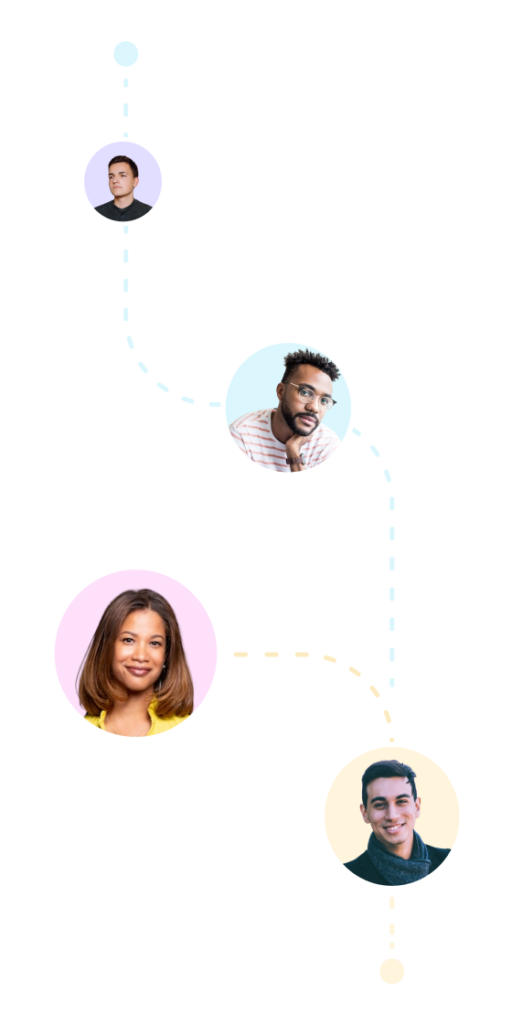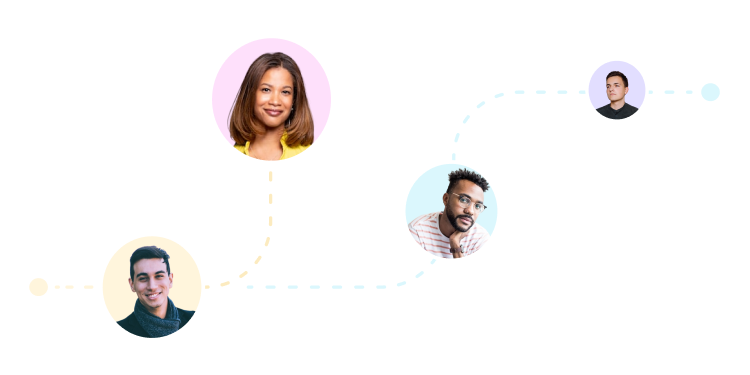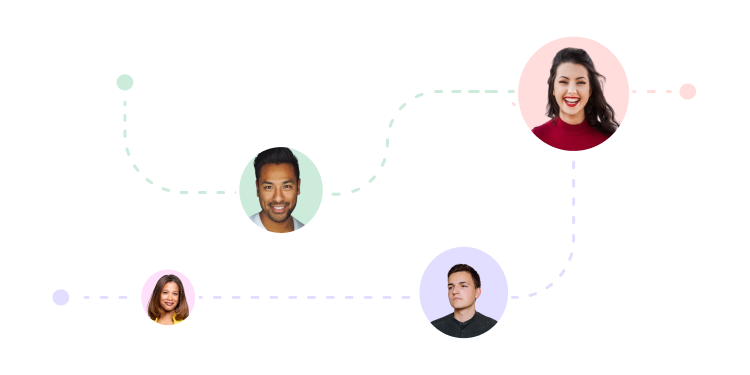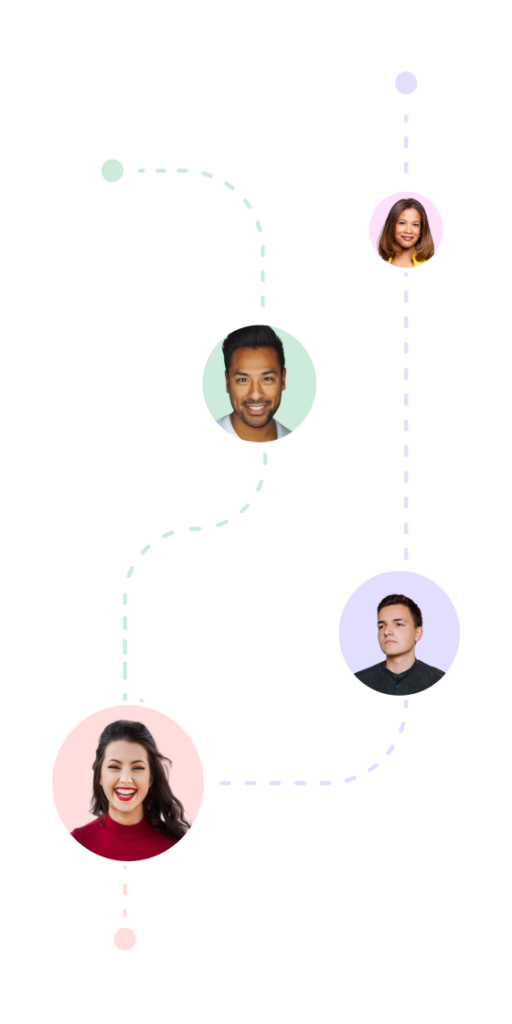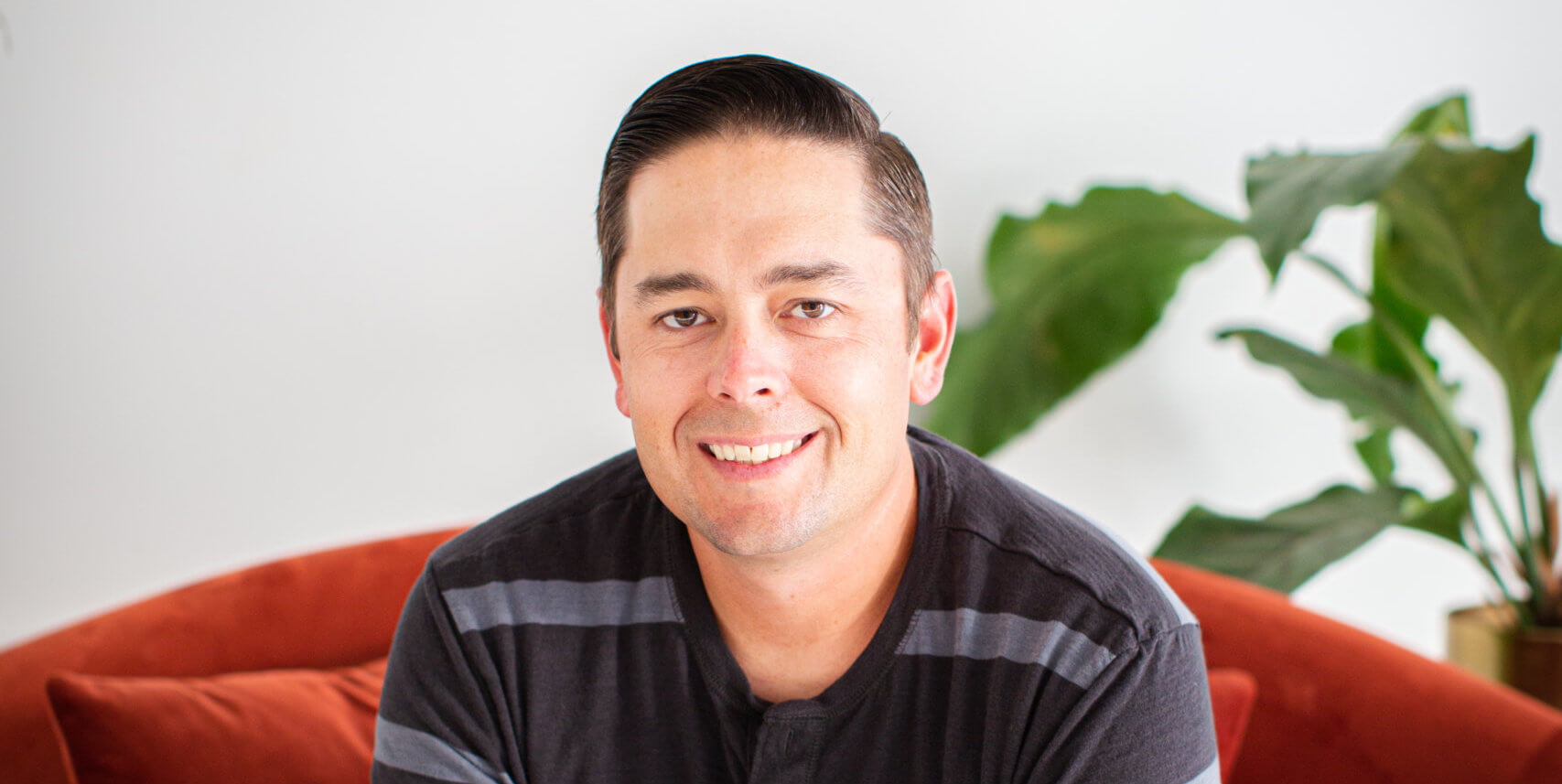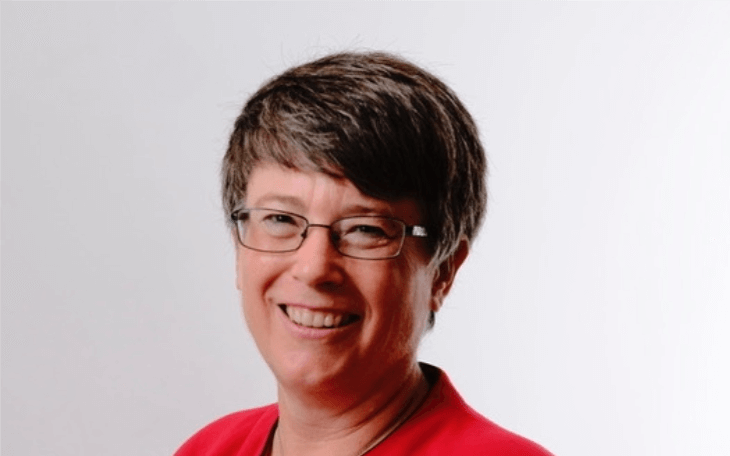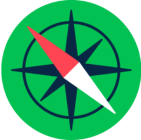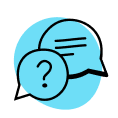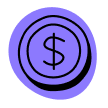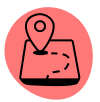Office Hours with Pat Flynn Join Pat Flynn for his weekly Office Hours event, where you have the chance to ask any question related to entrepreneurship and your business journey. About the […]
The post 📚 Office Hours with Pat Flynn appeared first on Smart Passive Income.
]]>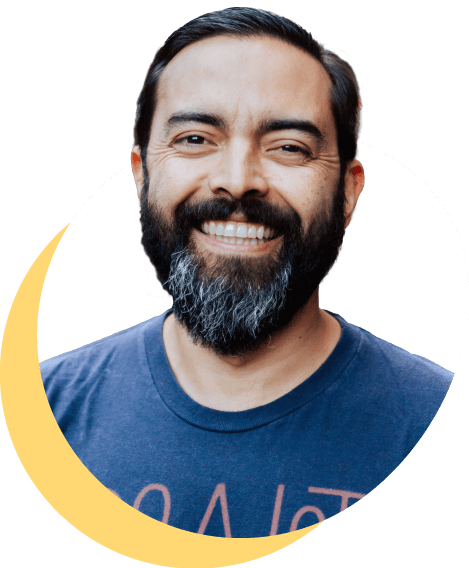
Office Hours with Pat Flynn
Join Pat Flynn for his weekly Office Hours event, where you have the chance to ask any question related to entrepreneurship and your business journey.
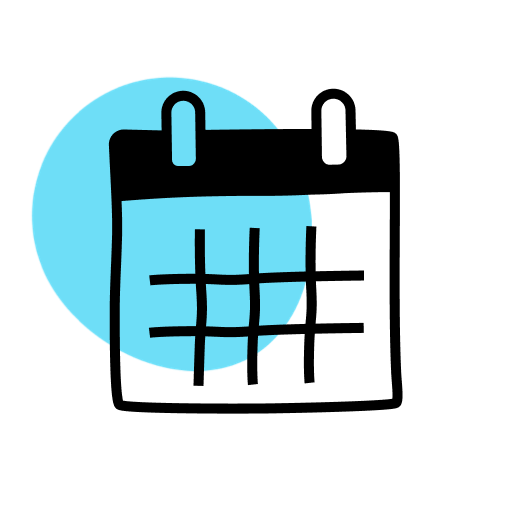
About the event
August 8 @ 1:30 pm – 2:30 pm PDT
Pat's office hours take place most Thursdays via Zoom. Come prepared with your question, or just tune in to hear the other questions and answers. Appropriate topics include podcasting, email marketing, webinars, starting a business, finding ideas, creative partnerships, and more.
This event is recorded for replay. Replays are available inside the All-Access Pass community.

Who can attend
Pat's Office Hours are open to all members of the All-Access Pass and SPI Pro communities, and to anyone who has made a legacy course purchase.
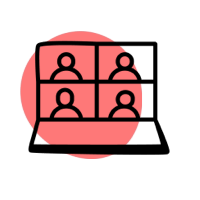
To register
Community members will find the event information inside the Academy events calendar. Legacy course students will find the link in the weekly Office Hours email. For assistance, contact [email protected].
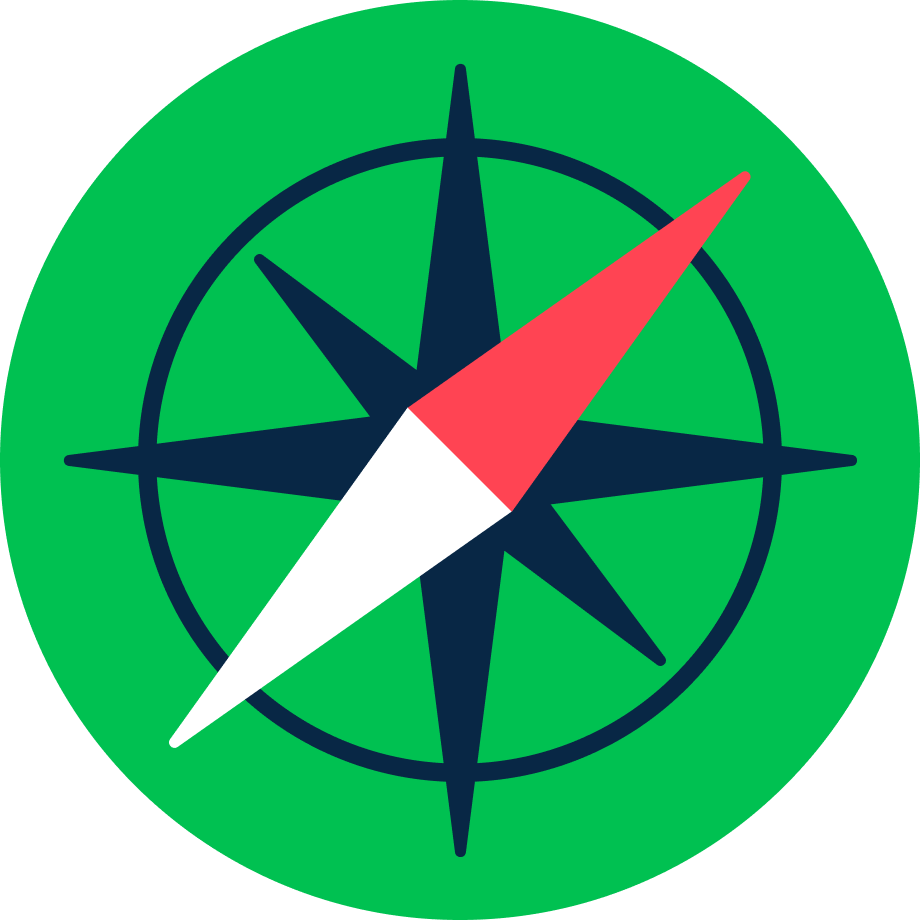
Join the community
Interested in attending this event? Join the All-Access Pass community! You'll get access to live events, all our courses, and a supportive community of entrepreneurs.
The post 📚 Office Hours with Pat Flynn appeared first on Smart Passive Income.
]]>How can you increase your profit with online courses in 2024? How do you make more sales with email marketing? And how do you grow your email list and engage […]
The post SPI 791: How to Generate More Course Sales and the Crossover between Data and Art with John Ainsworth appeared first on Smart Passive Income.
]]>How can you increase your profit with online courses in 2024? How do you make more sales with email marketing? And how do you grow your email list and engage your subscribers?
Today's episode answers these questions to help you make more money without being salesy or spammy.
Joining me is John Ainsworth of DataDrivenMarketing.co, PimpYourFunnel.com, and The Art of Selling Online Courses podcast. Operating at the intersection between the creativity and science of marketing, John is here to share his next-level tactics and strategies with us!
We discuss order bumps and upselling to enhance the effectiveness of your products, John's eleven-step framework for email promotions, using AI to write copy that converts, shifting your mindset around selling, overcoming the most common customer objections, and more.
This incredible session looks at the top ways to increase your profit with online courses, but John's expertise is also relevant for anyone running an online business and leveraging funnels to connect with potential clients. Enjoy!
Today's Guest
John Ainsworth
John Ainsworth is the CEO and founder of Data Driven Marketing. They help online course creators increase revenue by 4.86x on average.
With 20 years of experience in building funnels and a degree in Mathematics, John has conducted extensive data analysis of hundreds of millions of dollars of online business to create the field of Strategic Funnel Optimisation.
Data Driven Marketing has proven this process by helping dozens of online course creators 2x – 5x their revenue and directly driving several million a year in revenue.
John is a guest lecturer at Greenwich Business School and has been featured on Forbes.
- Find out more at DataDrivenMarketing.co
- Get a personalized audit and free training at PimpYourFunnel.com
- Listen in on The Art of Selling Online Courses podcast
- Access John's Josip AI Funnel Coach to plan, create, and implement email marketing campaigns
You'll Learn
- The three elements to help you generate more profit with courses
- Why your existing customers are likely to buy more from you
- How to order bump and upsell to enhance your products
- What data to focus on to make more sales
- The eleven-step framework for effective email marketing
- How to overcome the fear of being salesy and spammy
- Leveraging ChatGPT to write sales copy that converts
- Uncovering and addressing the most common client objections
- How to use lead magnets to grow your email list
Resources
- Subscribe to Unstuck—my weekly newsletter on what's working in business right now, delivered free, straight to your inbox
- Connect with Pat on Twitter and Instagram
SPI 791: How to Generate More Course Sales and the Crossover between Data and Art with John Ainsworth
John Ainsworth: Sending out an email promotion every month, one of the reasons people don't do that is because they feel salesy and spammy if they send out regular email promotions. So the trick is people think it's either send out an email promotion and then feel salesy and spammy and my audience hates me or don't send out an email promotion. But there's a third option, which is send good email promotions that people like receiving and make your sales at the same time. So that's the trick. And that's actually where the bulk of the additional revenue for most people is available, is just sending out good email promotions on a regular basis.
Pat Flynn: What I find very interesting about today's guest is not his awesome British accent, but rather the kind of juxtaposition between his domain name and really what he's about plus the name of his podcast. So let me tell you both and then we'll get into it. The name of his podcast is The Art of Selling Online Courses.
And this topic is something that is near and dear to my heart. It's near and dear to a lot of your hearts as well, since you might be selling online courses or looking to sell an online course in the future. And of course, online courses have changed a little bit over the years. And we do talk about that a bit.
But here is the name of his website, DataDrivenMarketing.co. So our guest today, John Ainsworth, is going to help us with the crossover between the two, data driven marketing and the art of selling online courses. He also has a third website where you can get an actual personalized audit of your own funnels called PimpYourFunnel.com. So, I mean, we're kind of going through all the spectrum here, but all of it is here to help you and serve you. And online courses, winning strategies. It's all what we're going to talk about. So let's get right into it. Here is John Ainsworth from Data Driven Marketing and The Art of Selling Online Courses.
Announcer: You're listening to the Smart Passive Income Podcast, a proud member of the Entrepreneur Podcast Network, a show that's all about working hard now, so you can sit back and reap the benefits later. And now your host, he's not sure if a wireless mouse should even be called a mouse anymore. Because there's no tail. Pat Flynn.
Pat Flynn: John, welcome to SPI. Thanks for being here, man.
John Ainsworth: Thank you very much. Delighted to be here. I've been a fan of the show for many years.
Pat Flynn: Well, I appreciate that. And I was so grateful to be on your show and everybody's going to be grateful that you're here because we're talking about making more revenue, generating more sales with our online courses.
And a lot of this can be used for whatever it is that we're offering online. Because there's a lot of principles that will matter. And The Art of Selling Online Courses is your podcast. And like, tell me why it's more of an art. Why isn't it just like, oh, numbers and stuff. Like what makes it an art?
John Ainsworth: I know, right?
Because my business is called the Data Driven Marketing. So we're totally all about the numbers. And it's because my copywriter was coming up with possible names for the show, and she thought that one was the coolest one. And we all liked it. And that's it. There's no, I don't know. There's a bit of an art to it, right?
So there's a certain amount of science and a certain amount of art to it. What we've tried to do as much as we can is like boil it down into like systems and processes and stuff that you can do repeatedly. And then within that, then there's a certain amount of creativity that you have to do inside of that framework.
Pat Flynn: Were you always into marketing and data driven in your previous life if there was one?
John Ainsworth: So my first thing that's kind of led me to here was I started off in sales. When I was a student, I had your typical rubbish jobs working in a factory and all that kind of stuff. And then I saw this advert for job selling.
Actually, I don't think they said in the advert what it was. It said just like travel to America, meet lots of people, get great experience. I was like, Oh, this sounds interesting. And it turns out it was a job selling books door to door. And it was absolutely brutal. Know, 80 hours a week, commission only, they give you a week's training, and then they kind of throw you out in the field and off you go.
And I did really well at it, and I made a lot of money in my summers when I was a student selling books door to door. But it was, it was like, oh, it's hard, man. It's a really hard thing.
Pat Flynn: You're in the UK. Yeah. Yeah. And you went from the UK to the US during the summer because of an ad. I mean, that's good copywriting, number one. To sell books, how do you do that? Like, what's the approach when you go into a bookstore? It's like, Hey, I see you have like thousands of books already. Like, do you want another one?
John Ainsworth: Oh, you sell it door to door. You sell it to people, like to family books, go to people.
Pat Flynn: Okay. I mean, that's even worse.
John Ainsworth: These books were for helping people with their homework. So as families, you had school aged kids helping them with like the maths homework, English homework, that kind of thing. You know, you've got encyclopedias back then, you know, or the internet just kind of started to exist and that kind of stuff helped with doing like big book reports or doing like big assignments.
And this was for more like the little bits of homework, how to do algebra, how to remember the names of all the presidents, whatever, that kind of thing.
Pat Flynn: I see. So was it, was it hard for you to, I mean, you got good at it at some point where you naturally get at that at, at the start or?
John Ainsworth: Oh, no, no, it was terrible.
How'd you get better? So my first week, my first door, I remember going and knocking on it and they given us this whole script and we'd practice the script and we'd got amazing at it over the course of like a week and we really nailed it. And I got up to the first one. I'm so nervous. I just, the guy opens the door and I look at him and I just go, everything's gone.
My whole head is completely empty. And I just look at him and I go, books?
And he's like, no, I was like, Oh, okay. Then I moved on. But I basically, I just got obsessed with it. I was like, okay, right. I know that this is a thing that other people can do. There's a process for how to do it. Let me learn how to do it. And they had a whole manual for it. And I'd just go home and I'd study the manual and I'd read back through it and I'd practice all the stuff and every day I'd be like, right, I'm going to get better at this one little part of it and I just get better day after day, week after week.
And then I went back like three different summers and did it again and again until I got, you know, really, really good at it. Nice.
Pat Flynn: So it was reps. It just took reps for you to get it.
John Ainsworth: Yeah, reps and like, it's quite easy to have rubbish reps. Do you know what I mean? Like we just do the same thing again and again, but this was like, you know, really focused on, okay, how do I make this a bit better?
How do I make it a little bit better? I quite like that whole, what's that term? Kaizen? You know, like 1 percent improvements, just a continuous little improvements kind of approach.
Pat Flynn: Yeah, James Clear, Atomic Habits, 1 percent better every day kind of thing. And I think that relates very well to, business online.
I mean, a lot of us go through our rubbish first door knocks, if you will, on the internet and like, you've seemed to have figured out how to do this very well. So in today's world, you know, it's early 2024 right now, John, what is working for generating revenue? Cause I've been in this business for 16 years.
There are principles that always remain the same, but things are changing all the time. It's confusing. It's hard. Give us a little rundown. What, what framework systems should we be worrying about right now? And then we can get into the dirty details after.
John Ainsworth: Yeah. So there's three main elements that work for increasing revenue, especially if you're selling courses.
The same thing applies if you're going to be doing e commerce or selling services, but the details change between whatever you're saying. So when you're selling courses, there's three main areas. One is how can you make more revenue per client? The second one is how can you make more sales to your email list? And the third one is how do you grow your email list bigger? And what most people who are in this kind of space are doing is they send out one or two bad email promotions a year. They have low revenue per sale. They have low numbers of promotions, the emails themselves aren't good, and they're not building their email list that much.
Now, listeners to your podcast are probably doing a better job at a lot of this stuff, because I know you cover a lot of these things. But that's the general trend. That's like 95 percent of people that I see. So if you can correct those and have high revenue per sale, good percentage of your email list buying, and a bigger email list, then overall you make a lot more money.
Normally, like five times more, that kind of thing.
Pat Flynn: I think it's interesting that you started with more revenue per user. That's really interesting to me because in most cases, I think, especially for the beginner, it's like, okay, we need more people to just know about us, right? I mean, yes, maybe we have a few sales here and there, but we need more.
We need to introduce ourselves or get in front of or interrupt somebody else's thing to put our thing into it. However, you're saying no, like there are people who are already potentially buying from you. This is for maybe you had a first lunch, but there's when you say more revenue. We're not just saying like, okay, I should just double the price of my course, right?
What do you really mean?
John Ainsworth: Yeah. So what else can you sell those people? So the people who buy something from you are 20 times more likely to buy something else from you. That's approximately what the data shows with our, with our customers. 20 times. About 20 times. Yeah. So if you've got an email list and you've got a percentage of that email list you've bought from you before, those people are 20 times more likely to buy the next thing from you than the ones who haven't bought something from you before.
And it varies slightly, but that's the right kind of ballpark. So once someone's bought something, why not offer them something else to buy from you? And that could be an order bump or an upsell, or it could be, you know, ongoing membership, something like that. So the reason I put them in that order is because that's the order that we recommend people to do them in.
Because it's easier to make more money from an existing customer than it is to grow your email list. And the reason for that is you make more money right now when you start making more money per customer. It's the easiest one to see the result from it. So I had someone come up to me at a conference a little while back and he said, I saw your talk at a previous conference and I implemented the order bumps and now I make 5,000 more per month.
And it's like, that's fantastic. Like it's the only thing that he changed. He just did that one thing. It makes 5,000 more per month. And I was like, did you do tactic number two? He's like, no, I totally forgot that it was anything else. That's the only one that I remember, but I did that. And that made me five grand.
I'm like, okay, cool. I've got tactic number two for you. Tell me again in a year, how you got on with that. And so the ways that you do that is there's two really simple ways, order bumps and upsells. So if you're selling courses at the moment, this is about how do you offer an additional product to someone as they're buying from you.
So an order bump is an additional offer that you have on the checkout page and an upsell is an additional offer that you have after the checkout page, like the confirmation page after that. Apart from that, they're basically in concept, kind of the same thing. It's just offer them something else, but technically they're in different places and then there's slight nuance to what you offer.
Pat Flynn: So how do you make an order bump, you know, this is before checkout, not feel like the aisle at the grocery store where it's just like, Hey, okay, you're checking out. You got your stuff that you needed, but gum, beef jerky, the little travel Advil's, how do you make it not seem like you're just kind of siphon as much money as possible, but how do you make it more valuable?
What kinds of things are good order bumps?
John Ainsworth: Yeah. What we're looking for is something that makes the course that they're buying be quicker To implement or goes along with it nicely. So for example, if you're selling a course, you might sell additional workbooks, or if you're selling a main course, you might have a secondary course that kind of goes along with it. As we've got a client who was selling a course for about 600 and it was about SEO. It's about how do you build up the traffic that you're getting and then they had as the order bump a whole bunch of pre research niches. So they'd gone and they'd found like there's 30 or 40 different niches that they thought were going to be, you know, good for SEO that you could be like, but that's the topic. That's the niche. I'm going to be focusing my content on that. They've already done a bunch of the work for you in advance. So people can kind of see why that makes sense that it's not an essential part of the main course, but it's something else that makes it easier, makes it faster for you.
Anything that you could put as a bonus, you also could put as an order bump. I think that's kind of a good way of looking at it. It can't be an essential part of the course that you've just missed out. But if there's an extra thing that you can come up with that makes it easier for the person to implement it or faster, then that fits really well.
Pat Flynn: How would you know whether to make something a bonus versus an order bump? That seems like it might be hard for a person to decide.
John Ainsworth: Yeah, I guess maybe that's part of the art of it, I suppose. How would you decide with that? That's an interesting one. So here's what we do, right? We go through all the products that somebody already has, and normally people have got more stuff that they've ever made than they even realize.
So people have in their head, Oh, I've got this main course and this main course. Okay. What have you ever created? Have you ever done an additional Q and A webinar that you no longer have available for everybody out there? Do you have any extra training that you did in person that you recorded? Do you have anything that you've ever done that you've sold through a partner that you don't have as a main offer?
Just list everything that you've got, then look through all of those things and say, which of those would make the best order bump. Now that's not necessarily the perfect order bump, but the huge benefit of doing it this way is you can get something up straight away. And if it doesn't convert, if people aren't buying it, then you can go back and say, okay, that wasn't perfect.
Maybe we're going to try something else, or maybe we're going to make something bespoke. But the biggest mistake that I see people make here is that they try and create, they say, ah, I've got the idea. I know what the perfect one would be. I'm going to make that that's going to take me two months and then they don't get around to it for four months because I've got other projects going on and then they don't do it.
That's not the approach. The best one is make a list of everything you've got and then choose something from in there and go that, let's try that out. And I think if you're making your course and something feels at that point, like it belongs in the course and you, yeah, call it a bonus, you call it part of the main course.
Don't include that, but find something else that fits with it. So I had a friend actually who did had a main product was for marketing agency owners, and it was a training on how to run some specific part of their marketing. And the order bump was. A Q& A with other agency owners about the biggest mistake they made when implementing their marketing.
And so it was obvious that that didn't have to be a part of the course. It wasn't how to do the thing, but it fitted really well. It was really kind of nice fit with it.
Pat Flynn: That's nice. I like that because you're right. I mean, we can think of a good one and then we have to create it and then we're not going to do that.
But you might already have those assets. What system or tech are you using to do the order bumps? This often will hold people back as well. They're just like, well, it sounds like a good idea, but I don't, I don't know how to do that. Do you have any recommendations?
John Ainsworth: Yeah. I mean, most of the systems that people are using for either checkout software or for course hosting like Kajabi or Thinkific or Teachable have all got order bumps in there.
So as Thrivecart, so as ClickFunnels. So most systems have already got this in. If the tech stack that you are using doesn't allow you to do order bumps, then don't do this one first because changing tech stacks takes ages and it's so much a form of procrastination. It's really easy to go, I'm going to change to the perfect tech stack, and this one's going to be exactly right, and none of them are perfect.
I've never seen anything that people are like, Oh, my God, every single thing about this is exactly the way that I want to be. You've got to make some compromises. So just go with what you've got. If you can't do order bumps, but you can do upsells. Do upsells. And if you can't do order bumps or upsells, leave that for now and focus on doing more email promotions and then come back to this at some point once you've implemented the other steps.
Pat Flynn: Nice. Final question on order bumps. Also, I want to throw in SamCart in there as well. That could be easy one to add on top of anything else you have to do. Order bumps, that's what they specialize in. Last question. Order bump for additional access. Is that something that you'd recommend? It's like, Hey, here's a 30 minute call with me if you pay this much or get into this cohort that will allow us to connect together for a certain period of time for our course or something like that.
John Ainsworth: Probably would put that as an upsell. And the reason is, as a general rule, we found that about a third of the price of the main product is a good price point for the order bump. And about the same or more expensive is a good price point for the upsell. So if you're offering a 30 minute call, unless your time is being offered quite cheaply, then probably that's going to be more expensive than the course that you're selling.
So I probably wouldn't put that in. I've got a friend who he does that as I don't know if you know him, Jack Hopkins. Oh, yeah. He runs Piano in 21 days. And he's got, I think, two free sessions with him or something like that as the order bump. And it kind of works for him because not that many people actually ever book those sessions.
But then that's not great for his customers. So he's like, is that good? Is that not because if people aren't ever booking that thing, well, I've just spent money on something. They're not actually using, which doesn't, you know, it's not amazing, but if everybody booked them, he'd almost definitely stop doing it because.
He would just be booked up with all of these one on one sessions with people. So, I think you need to be charging a good amount for any one to one session. And the same thing with, you'd said about like, you know, get access to me through whatever, a cohort or an ongoing session. That's probably going to be more expensive.
I think you talked when you came on my podcast about it being maybe 300 bucks if you're buying the course and 500 bucks if you're also buying the access for the cohort kind of process to go through.
Pat Flynn: Exactly. In general, your time is valuable. You don't want to cheapen that, right? And that anchors the other things too, that you have going on.
You don't want to cheapen, in fact, you kind of want to also just keep that higher. That's premium so that everything else will feel like, okay, well, I can't get access to Pat or to John because it costs a lot. So I'm going to, you know, this course sounds like a great deal versus the other way around.
That's really great. Okay. So that's order bumps and upsells. You obviously talk a lot about this on your podcast. There is some art to it. There's a lot more science behind it as well. The more you do something, the more data you get and the more you can analyze what is working and what's not, and continually making changes over time.
When you. Are looking at the data. I'm curious. How often are you looking at data and what kind of data is important to you when it comes to sales? You know, obviously, revenue is important. But beyond that, what are we looking at? And how do we analyze that best?
John Ainsworth: Yeah, we break this down into a lot of small steps.
And then we know what the benchmarks are for each one of those steps. So therefore, you can tell exactly where you should be focusing. So most of the revenue for course business comes from sending email promotions. So we're looking with that with how many emails were sent. Yeah. How many were opened and what was the open rate?
How many were clicked and what was the click through rate? How many of those people actually got to the sales page? So you might lose some people between the click and the sales page, especially if it loads slowly. Then how many people got from the sales page to the checkout page? How many people went from checkout page to buying?
And then what percentage of those people who bought got the order bump and what percentage got the upsell? So it's a funnel. It's like the numbers in a funnel. That's exactly what we're always looking at every single time. So every email promotion that we do, we'll track all of those numbers and then we'll analyze them and go, How did it do?
Was there any step in there that wasn't good, that needs improving?
Pat Flynn: How do you track easily? I know a lot of people get flustered by that and it's like, Oh, now there's like five different tools and there's numbers from each of them, right? Your email service provider, and then it's like the click through rate, but then they go from there to the sales page. And so you have to look at traffic, but then. traffic to conversion into the sales page and then checkout, it just again could be very overwhelming. Can you simplify this for us?
John Ainsworth: Yeah, so we do it all in the spreadsheet. We don't use any fancy software for it. So we'll be using, let's say it's ConvertKit, right?
We're going to be using ConvertKit for what was the open rate, what was the click through rate? How many emails were sent? And then we'll be using Google Analytics typically for what was the conversion rate from the sales page to the checkout page from checkout page to buying is easy, right? Because that will be in whatever software you've got for the sales.
You have the number of sales in there. How many people bought the upsell will be in there as well. How many people bought the order bump will be in the checkout software. We put that all in the spreadsheet, and then there's a formula that calculates the conversion percentage. We don't ever do it in anything more complex than that, because that is the simplest possible system that can get you the result and that keeps everything under control.
Pat Flynn: I like that. It's kind of, it's just raw at that point. There's no connections and APIs. And I mean, I know a lot of, there are tools that are available that try to help you see the funnel and those can work too, if, especially if you've figured it out, but if you or a small team or a solopreneur, it's going to be much, much easier to just kind of go to the raw data for important metrics.
So there's a lot of conversion points here, right? There is the conversion point of just open emails from email to click, click to sales page, sales page, to. Of the entire funnel, where do you think is the biggest opportunity for people to generate more revenue?
John Ainsworth: The way to look at this is what steps are you currently not doing?
So let's say you already got email promotions going out and they're going to a sales page and you've got a checkout page. Now you can make your sales page convert better and you can make your checkout page convert better. But if you don't have an order bump at all, then it's the easiest win is to just put an order bump in because you're guaranteed it's going to do better when you've got something versus when you have nothing.
So the first thing to do is go through and actually just put all of those steps in place. So anything that you're currently missing now what most people are missing completely are having an order bump, having an upsell and then doing email promotions regularly. Most people only do email promotions like once or twice a year.
So for example, Black Friday is one time when everybody does it. And then everybody has this giant spike in sales when they do the email promotion. And then the rest of the year, they're not sending email promotions out at all. And then they don't have that spike in sales. So one of the things there is sending out an email promotion every month.
Now, if you've only got one course, that's tricky. But if you've got, let's say, three courses, then every month you could do a promotion for a course, and then after three months, you cycle back through again and start again. One of the reasons people don't do that is because they feel salesy and spammy if they send out regular email promotions.
Pat Flynn: Yeah, the pitchforks are gonna come and get me if I promote too much.
John Ainsworth: Yeah, and they feel uncomfortable about it. And they're worried that their subscribers will unsubscribe, which are all fair, yeah, fears, right? That's all things that could happen. So the trick is it's not a, it's a false dichotomy. People think it's either send out an email promotion and then feel sales can spam me and my audience hates me or don't send out an email promotion.
But there's a third option, which is send good email promotions that people like receiving and make you sales at the same time. So that's the trick. And that's actually where the bulk of the additional revenue for most people is available is just sending out good email promotions on a regular basis.
Pat Flynn: So define good email promotions.
John Ainsworth: So it has to be really, really valuable content for those people who aren't going to buy, because in every single email promotion, about 99 percent of people are not going to buy from that promotion. So you want them to actually think the content was valuable and want to stay on your list.
So we've got a structure of kind of framework of how we always do this. But I would say that you want at least half of it to be useful content, even if someone doesn't buy that thing from you. And even if someone never buys from you, they should actually be getting value from receiving all of these emails.
Pat Flynn: It's funny because when I do a webinar, it's like, Oh, it's got to be 45 minutes of incredible value because I want it to be worth a person's time because their time is valuable. And then I can go into a much easier, not even pitch, but it's just the end of the conversation is, Hey, if you want to work more with us. Like here it is. Yet when we think about emails, we don't think about it in the same kind of way. Although we are still asking people to spend time reading that email, why not make it valuable? So what is a valuable email to a subscriber related to a topic look like? Is this a listicle? Is it a story?
What's in that email specifically?
John Ainsworth: So we've got a framework that we use where it's 11 emails that go out over two weeks. And the Framework for it is pain, agitation, solution, gain, logic, fear, future casting, frequently asked questions, going, going, gone. So that's the overall framework and kind of break down if you like what all of them are, but that's the kind of the overall structure.
Pat Flynn: Yeah, I mean, we don't have to go through necessarily all 11, but let's go through the first one pain. So the first email that goes out that then talks about a course or something that we're offering. What do you mean by pain?
John Ainsworth: Yeah, so we're not mentioning the course at this point. at all. Oh, not at all. No, the first week is just value.
So what we're trying to do is so pain, agitation, solution emails is the pain is talking to them about this is a pain point that you're currently feeling and you're trying to make sure that they understand their own problem more clearly than they previously did. If they believe that you understand their problem, they're more likely to believe that you might have a solution for them.
If they don't believe you even know what their problem is, why should they think that you can solve it? But we're not just trying to show them that we know what it is, we're trying to help them understand their own problem at the moment. And then the agitation, when we're talking more about, okay, this is what that might mean in your life.
This is what emotions you might be feeling because of this is what knock on effects that might have in your which they probably don't even realize because they're too day to day within their own stuff that's going on. Let's say they've got a new puppy and their puppy pees on the carpet and they're just like frustrated because they haven't managed to train their puppy first.
So first of all, your email, you're talking about the pain of what that's like. And then the agitation you're talking about, okay, here's how that might affect you in the future. Here's how six months later you is going to feel because of this thing, which you know, and they don't know, you know, because you've gone through it.
That's a separate email, right? The agitation is like email. Yeah. Okay. Got it. So as a sequence, and yeah, that's great. And then the solution is, well, let's give them a tip. Let's help them to actually solve that problem right now. Even if they don't get your course, we're just solving, we're just giving them a tip on how to solve it in the solution one.
Pat Flynn: I like that. I talk about quick wins all the time. And sometimes I go into the quick win way too fast. It's like, Hey, if you're dealing with, you know, a puppy that pees on the carpet, here's a quick win for you. Because I want to give as much value as fast as possible. But I think it's so important that I need to be reminded often that we really need to lean into the pain and the just relatability.
And this is where story comes into play. This is where a case study might come into play or data like studies, like 68 percent of people who don't take care of this end up either getting rid of the puppy or, you know, having fights with the other people in the house because of it. And we don't want that to happen to you too.
And it's like the more care you take into setting things up, the more a, the solution is wanted. and B, the easier it is to just bring it up in a conversation like manner where it doesn't become salesy. I think almost it's salesy if you don't do the pain and agitation part. It's like you're just trying to jump into what you have to offer.
You're not really trying to be relatable, right?
John Ainsworth: Yeah. One of the things that goes wrong, I think, in people's psychology with this is that they're so worried about how they feel about themselves that they don't think enough about how does the audience member actually feel when they're reading us. So the starting point for this has got to be this person has got a problem. You have got a solution. We want to help them. We've got to forget about ourselves. We've got to get rid of our own thoughts about our own insecurities. And what if someone thinks this about me, what have you? And really focus on this audience that I've got. Some of them have got a dog that is peeing on the carpet.
We've got to help these people. And we've got to think about like, how's that affecting them? How's that affecting their life? And I've got a solution, which is I've got this course, which is going to help with that. And with training their dog overall, if they buy the course, their life will be better. So it's my duty to try and get that across to them and not like force it down their throat, but to actually like, see, can I help this person to see that this thing can solve their problem?
And when you start to look at it like that, it, Gets a little bit easier because your own fears and worries and concerns don't get in the way so much.
Pat Flynn: That's so true. A lot of things are coming to mind where we kind of jump to trying to be problem solvers so quickly that we forget to do the listening part up front.
That helps a person realize that you know what they're going through, right? I'm sure you could talk to my wife about that, in fact, about me. Anyway, what goes after sharing the solution? So that's like email number three. You mentioned a bunch of other letters and we can pick apart a few of those.
John Ainsworth: Yeah, so gain logic fears the next one.
So this is reasons why someone should solve this problem more deeply. So our first few emails have talked about the problem and got them thinking about it and make him giving them that tip. Now we're starting to launch the course and tell them yes, you can actually go and buy this course, it's available, it's going to help you to solve this problem.
But the content of the email, the gain logic and fear all about why should they solve the problem. So the gain one is about what benefits are there going to be to them, by solving this problem, whether it's through getting your course or through something else. The logic is all stats, figures, examples of like specific numbers, studies, whatever about people who've solved this problem, how much better their life has been or have you.
And then the fear one is about the emotions of it. What are someone concerned about losing if they don't manage to solve all of this? So each of those they're going to appeal to each person to a certain extent, but some people will gravitate more towards one of those angles or more towards another.
Some people are more fear based and some people are more logical and some people are more gain based.
Pat Flynn: That's really great. Now, I know you go deeper into this in your podcast and you have a website called Pimp My Funnels?
John Ainsworth: No, Pimp, Pimp Your Funnel. Pimp Your funnels. Pimp Your funnels. Yeah, I went to buy Pimp My Funnel and I found that Russell Brunson had already had the same idea and he bought it before me.
Pat Flynn: I mean, great minds think alike, you know. No, that's cool. So yes, definitely check those places out and you go much into deeper detail about each of these things. But one thing that I'm thinking of, that like none of this works if we're not getting people to open our emails. Yeah. So what are we doing and how do we get a person to see our email and click it when literally that's what everybody else is trying to do at the same time?
John Ainsworth: Yeah. So I think this is really just about trying to provide as much free value as you can. And I think most people who certainly a lot of people who I'm talking with are making lots of great content on a regular basis. They're creating a podcast or they're creating YouTube videos or they're writing blog posts and the simple version of this is just sending out useful links to all of those things and saying here's what's great about this video.
Here's what I'm covering and then sending out somebody a link to it and so that most of what those people are receiving from you is either useful educational content or entertaining content or what have you so that they are used to seeing stuff from you that is good and they want to click on it and go open and it builds up your authority and it builds up your your open rate I don't have any kind of magic, clever tricks on that.
It's just send those out on a regular basis and make sure they're really good content.
Pat Flynn: I mean, it sounds like the regular basis part of this is really important so that you can almost in a way, train your audience to know that every time they open one of your emails, every time they see it in their inbox, that there's going to be something worth their time in there.
John Ainsworth: Yeah, absolutely.
Pat Flynn: And then I know that it's really important that once you get a person to click on that email, it almost becomes sales page, like in the sense that you've got to hook a person in the beginning of that email or else they're kind of out, right? They got to understand that that is for them.
So in, for example, the, the pain email or the agitation email, how are you starting those emails?
John Ainsworth: A lot of it's based around either stories or stuff that's based on what your audience have told you. So one of the things that we do as an essential starting point, whenever we're working with a client, is that we do a survey of their audience.
We do a customer avatar survey. So we will send out a lot of questions like what is the benefit that you got from the course if they bought it or what benefit are you looking to get in your life? What problems are you currently facing? We ask them stuff about, you know, age and gender and we're trying to understand what kind of people are in our audience and we're learning as much as we possibly can about what their problems are, what their desires are, what they would do to solve this if they didn't get the course from us, et cetera, et cetera.
And we do two things with that. We make a customer avatar from that. So we're saying, okay, this is the kind of person who we're targeting. It's much easier to write for one person, even if they're an imaginary amalgamation of everybody in your audience, than it is to write for 50,000 or 100,000 people.
And the second thing we're doing is we're making a customer language document. So we're taking specific words and phrases that are repeatedly used by our customers, and we're including those in the customer language document. And we can also use going through forums or comments on YouTube videos or whatever else anywhere their audience has been participating to pull that information in from.
Once we've got that, that's what we're using in the emails. So we're talking to them about their pain points, not what we think their pain points might be, but what they have told us their pain points are. So that's all the stuff that we're taking and we're, we're saying back to them. And then we obviously might talk to them about how they're going to be solving that, how our understanding of that pain point, but our starting point is the raw material of what is our audience saying to us.
Pat Flynn: That's such a great tip. It almost becomes like you don't have to necessarily even guess anymore. Like, you know what the words are. You just kind of have to put them in the right order and, and try to hook them. Are you using or are you and your team using any AI or tools like Chat GPT to help you with coming up with this stuff?
And if you do, like, what are the things we should make sure to do so that it's just not like generic content that we're putting out there?
John Ainsworth: Yeah, we're testing it. And sometimes it's good. And a lot of the time, it's not at the moment, we're still working on, you know, which different tools might give us better results, the best process we've got so far that has worked the most reliably is we take all that data, I take our customer avatar and we tell that ChatGPT, we'll paste that into ChatGPT and we'll get it to say it back to us. So summarize this customer avatar back to me to show that it's got that in the memory that it's understood. And then we'll say, okay, and here's the customer language document.
And then we put that in and get it to say some of those phrases back to us to make sure that we've added it in. Right? Is it? And then we say, now what we're trying to do is we're trying to create this kind of an email. Now we're doing the pain email. Here's an example of that email. Now pretend you're a copywriter and write a version of that email for this audience.
Promote it. And we'll also tell it like, this is the course that we're promoting. This is the topic. And so feed all of that data in at the beginning and then get it to write the email back for us. With our current copywriter, we're finding that is getting her stuff that it takes it just as long to go through and redo as it would do if she just did it herself in the first place, but if you're not any good at writing emails, that process might be the starting point that you need, you know, feed all that data in and then tell it to give this a try, create a draft one for you.
Pat Flynn: Yeah, that makes sense. I mean, you got to train the system and what are you going to trade it on all these things that we just talked about? And I think that's really smart. And then over time, like, hopefully you get to pick these things up and they just become a part of how, you know, you, you know, your audience.
Well, you know, and then just those micro improvements over time and with every email. So we talked about a few things we talked about order bumps and upsells really important. Start there. It's quote unquote low hanging fruit, as they might say, to send more emails, but not just more emails, good emails using the system. We talked a little bit about the framework, and we featured a few of those. And then the end of that sequence, before we move on to the last bit, was the going, going, gone. Can you speak to that, and what that actually means, and what that might look like in terms of an email sequence?
John Ainsworth: Most people procrastinate on making a decision about most things.
So what we're doing in the going going gone is trying to deal with what is it that's stopping them from actually going ahead and getting the course. The standard way of doing these, the more salesy way of doing going going gone emails are saying it's 48 hours till the sale is over. You must get it now, otherwise there's discounts never going to be available again. That kind of thing. What we're trying to do in the ones we're sending is understand what is the actual problem that's stopping somebody from buying. What is the actual issue that's getting in the way? Is it procrastination? Is it fear that they'll never be able to actually achieve this result themselves?
What is it that's their blockage? And then we're addressing that head on and saying, you know, if you buy in the next two days, you're going to get a discount on this course. But the real thing is that if you make a decision now, you'll actually have the course and that's going to help you to deal with X.
But you're probably feeling Y emotion, right. Let's address that and talk to you about why that's not a valid reason not to go ahead and actually do this. And that might be procrastination or fear or whatever else it is.
Pat Flynn: So uncover any known objection that might be there stopping a person. So I know a common one, you know, I've done courses for a while is, Oh, I don't know if I'm gonna have enough time right to do this.
Like, this sounds great, but I'm already busy. I don't have any time. How do you refute that?
John Ainsworth: Yeah. So there's a beautiful approach to dealing with this. It works really, really well, which is you say to someone, okay, let's imagine that you've only got, let's take an imaginary scenario, one hour a week to deal with this.
You're not going to go through the whole course because you're not going to have time to do that. You're just going to choose this module, one of these three modules. And here's how you're going to decide which module it is that you're going to go through. And you're going to do one hour a week. This is the minimum amount that you might put in, and this is how your life might be different in a day, a week, a month, three months, six months.
If you do just that amount, if you do the whole course and you put five hours a week into it. Man, it's going to be phenomenal. But just that one hour, you still can have a real difference in your life. And it's actually going to be worthwhile. And here's how it's going to look for future you. And he'll be so glad, or she'll be so glad that you did that.
And here's the emotion that that future you is going to feel.
Pat Flynn: That's really good. I really like that position. Let's do another one. This seems expensive. Like the price is, you know, I know this is a common one as well. It's like, that's a lot of money, John. I don't know if I could, I can get it for maybe cheaper elsewhere.
It's not, it just costs a lot.
John Ainsworth: So there's a couple of different angles on this depending on what you're selling. So if you're selling something that's B2B, you're selling something that's going to help them to make more money. Then it's possible to break that down and give examples of, okay, this percentage of our clients who went through and did this made X amount more money.
Here's how that all works out in terms of it actually being worthwhile. And it depends whether they're saying it's just a lot of money or it's a lot of money compared to doing something else. Because there's something else, for example, might be going and just learning all from YouTube or listening to podcasts or what have you, which they absolutely can do.
That's like a totally valid argument. And the answer there is yes, you totally can do that. And if you have the time and you don't have the money, you Great, go do that. I've been making the podcast for three years. Go download all these episodes, knock yourself out. It's going to be fantastic. But what I've done in the course is I've put all that information in the correct order to make it really easy for you to be able to implement this.
And I've added in all of these additional resources to make it quicker and easier for you to be able to actually do everything. And you know, for definite that what you're getting in here is up to date and it is valid and correct. It's from me right now in 2024. So this is going to save you an enormous amount of time by buying the course and actually implementing that right now.
And if time is not the issue and money is, then I totally understand don't buy it. But if you just don't have enough time available, then probably it's worth spending the money on it because it's going to save you X number of hours.
Pat Flynn: Masterful. That is great. Let's do, let's do one more. These are good.
Actually, why don't you tell me what is a common objection that a person might have that we can address in our emails during our campaign?
John Ainsworth: Yeah. One of the things is that people just don't believe they're actually going to get the results. You know, they're not actually going to implement it. They're not going to follow through and do what they're supposed to do.
And that might be time or it might be something else about them. Right. So let's say it's around weight loss and everyone thinks, well, I've already tried all these other programs and they didn't work for me and they didn't stick. Well, presumably you've got some kind of a model, some kind of a mechanism that is different that you think is better.
So for example, I've got a friend, Ollie, who teaches learning languages through stories. And his angle is, you might not want to learn this, you might get bored learning these languages, you might find that you never stick with anything because it's all so dull. And therefore, what I've done is I've come up with this method called story learning.
And it's fun, and it's entertaining, it's interesting, and you can learn through reading books in other languages that you like, or learning through watching TV shows in other languages that you enjoy. Or I've got another friend who sells language learning courses, and she teaches people perfect English grammar.
It's called Shona. And her audience are people who want to get the grammar exactly perfect, they don't want to get it nearly right. They want to get it exactly correct because they tend to be academics and someone who's done really well in school, but in a different language. And so her angle is you haven't managed to be able to do this before because other people aren't focusing on getting the grammar perfect.
They're saying, go and just try out the language and talk to people and walk out into the world and just have a chat with people. And that frustrates you because that doesn't fit with what you're after. Well, in my classes, we're going to focus on making sure that you get the grammar exactly correct because I'm teaching this in an academic fashion that fits with exactly the way that you work.
Now they have completely different audiences to each other. Neither one's audience would buy the other ones course, but for their audience, they can say, this is why this thing is going to work for you for the kind of person that you are, this is why it's going to work for you. And that helps address that fear of Oh, I'm not going to do this.
I'm not going to implement it because I didn't manage with all these other ones.
Pat Flynn: That's really great, John. Thank you for those examples. Lastly, again, we talked about upsells and order bumps, and then we talked about sending more emails and we broke those down and we went into just a beautiful exercise here with the objections for the going, going gone part, et cetera.
The last one, correct me if I'm wrong, was just build your email list up, right? This is, and this is often where people start, which is why I love we started kind of in reverse order. But if John, you only had today one method available to you to grow your email list, what method would you choose today and why.
John Ainsworth: There's a very simple thing that most people aren't doing, and it's actually doesn't take terribly long to implement it, which is to take whatever your best lead magnet is, so you've, I'm assuming someone's already got a lead magnet of some sort, some free resource that they're giving away in order to get someone to the email list and just actually promote it everywhere. So if you're blogging, put the lead magnet, put adverts for your lead magnet, top, middle, and bottom of your blog post, put them in the sidebar, put them as a pop up, put them on your homepage.
Everywhere on your site, put those promotions for it. And what we typically find is about 0.5 percent of people's website traffic typically converts to joining their email list. That about 95 percent of the people I talk with, it's between 0.5 and 1%. And if you just do this, you can typically get to about 2%.
And the same thing with YouTube videos. If you've got lots of YouTube videos, but you never mentioned the lead magnet in the description or the pinned comments, just put it in every single video you've ever done go in and put a link to that lead magnet in there. So it seems so basic, but most people just aren't doing it.
And therefore, that's the easiest win is just to go and implement that.
Pat Flynn: I like that. You know, we often are hoping for the magic potion to do a lot of this stuff for us. And more often than not, the real answer is the thing that it was always in front of us and available to do. And this is another example of that.
So, John, this has been absolutely incredible. Thank you so much for the breakdown today. And if people wanted to go deeper with you, where should they go and shout them out?
John Ainsworth: Yeah. So if you want to learn about any of those specific tactics in more detail, then go to The Art of Selling Online Courses. We've got a YouTube channel with that name and a podcast with that name.
And if you just want the direct link, go to DataDrivenMarketing.co/podcast or DataDrivenMarketing.co/youtube. If you want us to do a personalized breakdown for you of what tactics should you implement and link you to some free training, then go to PimpYourFunnel.com and fill in the form there, and we're going to ask you for a bunch of numbers about what you've currently got in place. And we'll send you a link saying, this is what you should be doing. This is training on how to go do it.
Pat Flynn: Amazing. John, you're incredible. Thank you so much for coming in today. I appreciate you. And hopefully we'll get a chance to chat again soon.
John Ainsworth: Thanks, Pat. Really appreciate it.
Pat Flynn: All right. Take care.
All right. I hope you enjoyed that interview and conversation with John. Super smart. And I cannot wait to see what implementations you take away from this particular episode. Again, The data driven stuff, knowing your number is really important, but there is an art to that.
There is sort of a, of an understanding that it can only come once you do. And once you implement, and of course, if you've implemented and you need some help, you can go over to PimpYourFunnel.com to get a personalized audit for your specific business and brand from John and his team. Or DataDrivenMarketing.co/podcast. And check out his website as YouTube. And of course, this podcast, The Art of Selling Online Courses. I love how niche and specific that is. Yes. I said niche, not niche is I'm sure he would say it, but anyway, John, thank you so much for coming on today. I appreciate you. Thank you for listening all the way through and make sure you hit that subscribe button so you don't miss out on some of the upcoming episodes coming your way to help you in your business and with your brand as well, we're here to serve you. Thank you so much.
Thank you so much for listening to the Smart Passive Income podcast at SmartPassiveIncome.com. I'm your host, Pat Flynn. Sound editing by Duncan Brown. Our senior producer is David Grabowski, and our executive producer is Matt Gartland. The Smart Passive Income Podcast is a production of SPI Media, and a proud member of the Entrepreneur Podcast Network. Catch you next week!
The post SPI 791: How to Generate More Course Sales and the Crossover between Data and Art with John Ainsworth appeared first on Smart Passive Income.
]]>Starting a YouTube channel can be an amazing way to share your passion, build a brand, or even earn money. However, it’s important to approach it strategically and with a plan, especially in 2024.
The post How to Start a YouTube Channel in 2024 appeared first on Smart Passive Income.
]]>I’ve built two successful YouTube channels, one in the area of business and entrepreneurship, and the other related to my passion for collecting Pokémon cards. Over time, each has earned hundreds of thousands of dollars.
It didn’t happen overnight, but it wouldn’t have happened at all if I hadn’t started somewhere (learning a lot of lessons on the way!).
And creating your own YouTube channel is definitely not just about the money. In addition to the income potential, a YouTube channel can help you:
- Find a global audience and grow your reach and influence
- Build your brand and establish your credibility as an authority in your niche
- Network and collaborate with other creators, brands, and businesses
- Provide a creative outlet for your ideas, skills, and passions
If that has your interest piqued about how to start and grow a successful YouTube channel of your own, you’re in the right place!
What to expect in this guide to starting your own YouTube channel
I’m about to share a detailed, step-by-step approach to starting your YouTube channel in 2024—one that’s designed to help you reap all the benefits of a YouTube channel mentioned above.
By the end of this guide, you’ll have the info you need to start a channel from scratch in the right niche, one you can grow and eventually monetize.
The guide is structured into three parts:
Laying the Groundwork: Choose a niche and define your brand
1. Choose your YouTube channel’s niche
2. Research your YouTube niche’s competitors
3. Develop your brand on your YouTube channel
Setting Up Your YouTube Channel: Create your account and publish your first video
4. Create your YouTube account
5. Set up your YouTube channel
6. Verify your YouTube channel
7. Record your first YouTube video
8. Create a great title and thumbnail for your YouTube video
9. Publish your first YouTube video
Creating a System for YouTube Success: Measure, schedule, monetize, promote, engage, and collaborate
10. Pay attention to your YouTube channel’s analytics
11. Create a trailer for your YouTube channel
12. Come up with a list of video ideas
13. Create a content calendar for your YouTube channel
14. Promote your YouTube videos
15. Improve your YouTube channel’s SEO
16. Engage with your YouTube channel’s audience
17. Monetize your YouTube channel
18. Upgrade your equipment
19. Organize your videos into playlists and sections
20. Take advantage of other YouTube video formats
21. Collaborate with other YouTube creators
22. Stay up-to-date with YouTube trends and algorithm changes
23. More resources for starting your YouTube channel
24. Conclusion and FAQ
Let’s dive in!
Laying the Groundwork
Before you create a YouTube channel and start publishing videos, you’ll need to get clear on your channel’s purpose, as well as its look and feel.
1. Choose your YouTube channel’s niche
Choosing your niche is the first and most important step in starting a successful YouTube channel.
As I often say: the riches are in the niches.
Your niche is the topic or category that your channel will focus on.
You can build a YouTube channel that supports your existing business, or if you’re starting from scratch, choose a niche based on an interest, passion, or area of expertise.
It’s important to narrow your YouTube channel’s focus down. Going too broad at the start means more competition and a much harder time getting seen. In fact, this was a problem my initial YouTube channel had and why it didn’t grow for years. People were confused: was it for podcasters or for affiliate marketers? Was it for people learning video or learning how to speak on stage?
Once I got clear on who the channel was for, growth happened much faster. For more about the trial and error of finding a niche on YouTube, check out these episodes of the SPI Podcast:
- 621 with superstar creator Emily Baker
- 595 with Matt Giovanisci of Swim University
- 730 with yours truly on how I picked a niche for my Deep Pocket Monster YouTube channel
2. Research your YouTube niche’s competitors
Once you’ve chosen your niche, it’s important to research your competitors. This means looking at other channels that create similar content. By analyzing competitors, you can see what’s working well and what you can do better. You can also use this information to create a unique value proposition for your channel that sets you apart (see #3 below)
Here are a few tips to help research your YouTube competition:
- Search for relevant keywords and topics in your niche and explore the channels that rank high in search results.
- Check out the videos YouTube suggests on the home page, as well as on the right-side column when you’re on a video’s watch page
- Look at the channels your target audience is subscribed to by checking their subscription feeds
- Use (paid) third-party tools like vidIQ or TubeBuddy to get insights into channel stats, viewer demographics, and top videos
- Attend industry events or conferences to learn about popular creators in your niche
- Look for channel mentions and recommendations in your niche from blogs, email newsletters, social media, and online communities
A simple competitive analysis trick: Not all videos on YouTube have this, but many have a graph located above the timeline. This is a retention graph and shows you what parts of a video were the most replayed. Paying attention to this retention graph is a great way to learn what a particular audience already likes and enjoys on other channels.
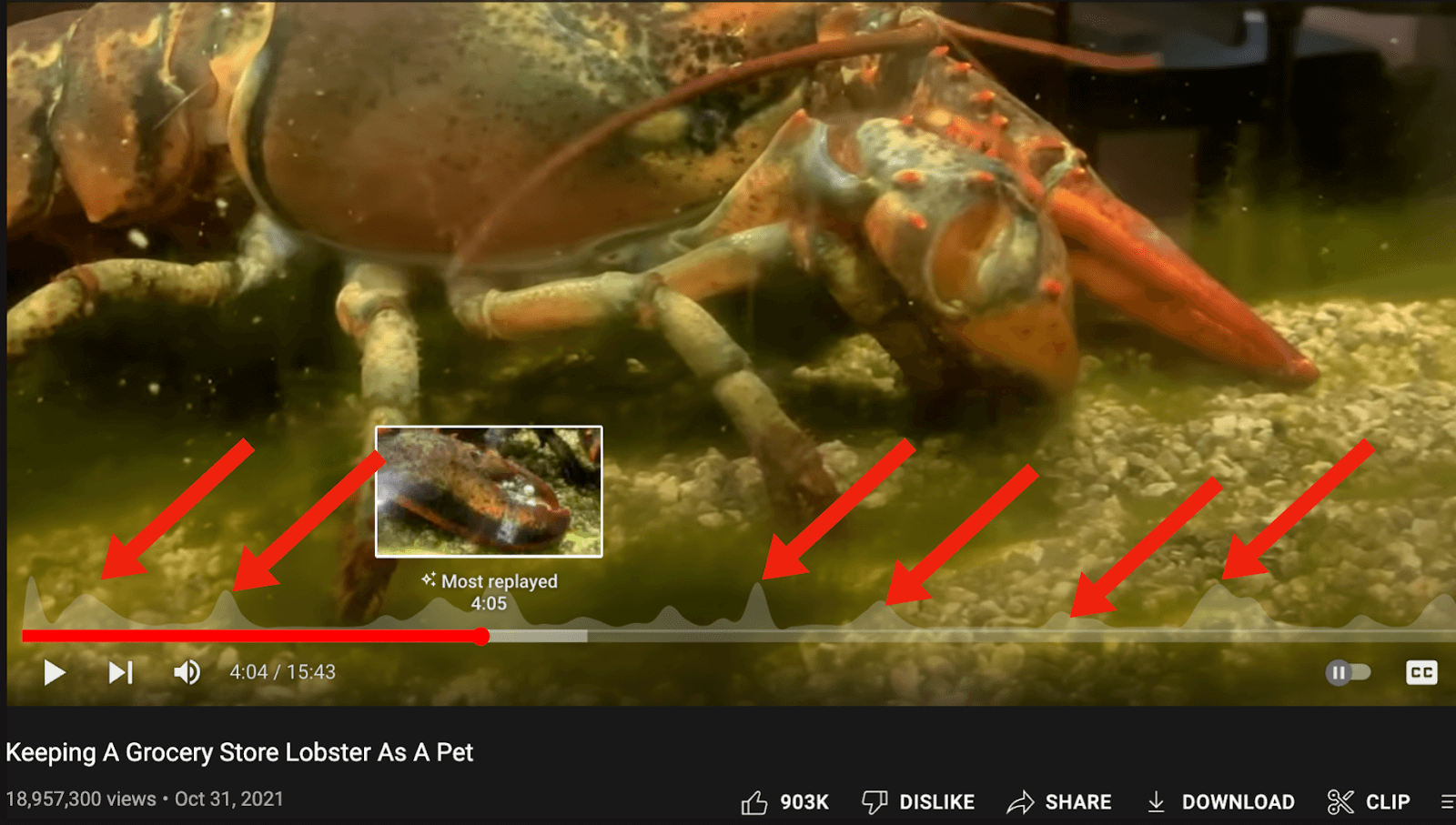
3. Develop your brand on your YouTube channel
Your brand is what sets you apart from your competitors. It includes your channel name, logo, and overall style. Take some time to develop a brand that reflects your niche and personality. This will help you build a consistent image across all of your videos and make it easier for viewers to recognize your channel.
The name and appearance of your channel encompass your brand, and in the beginning, you’ll have to make some choices (that are not permanent and can be changed later). Over time, your brand also becomes your voice, and the types of videos you create for your specific audience.
Speaking of the look of your brand, your brand styling may include things like fonts or the colors you use. Check out the Charli Marie logo in the below example and the purple motif that repeats throughout her channel and videos:
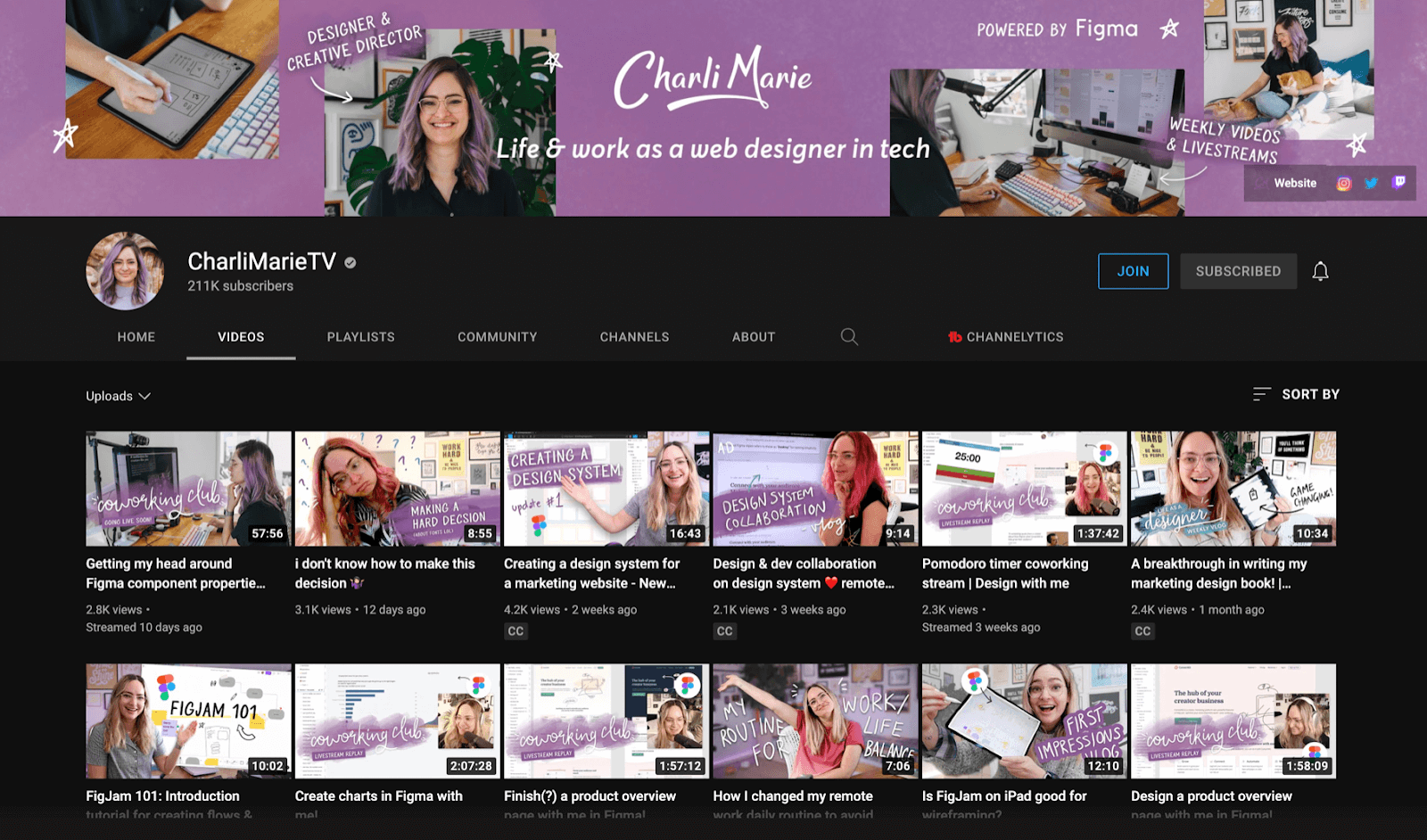
Your brand can be based on your theme, and your channel artwork can be based on the advice that you know you’ll be offering, like the Dad, How Do I? channel.
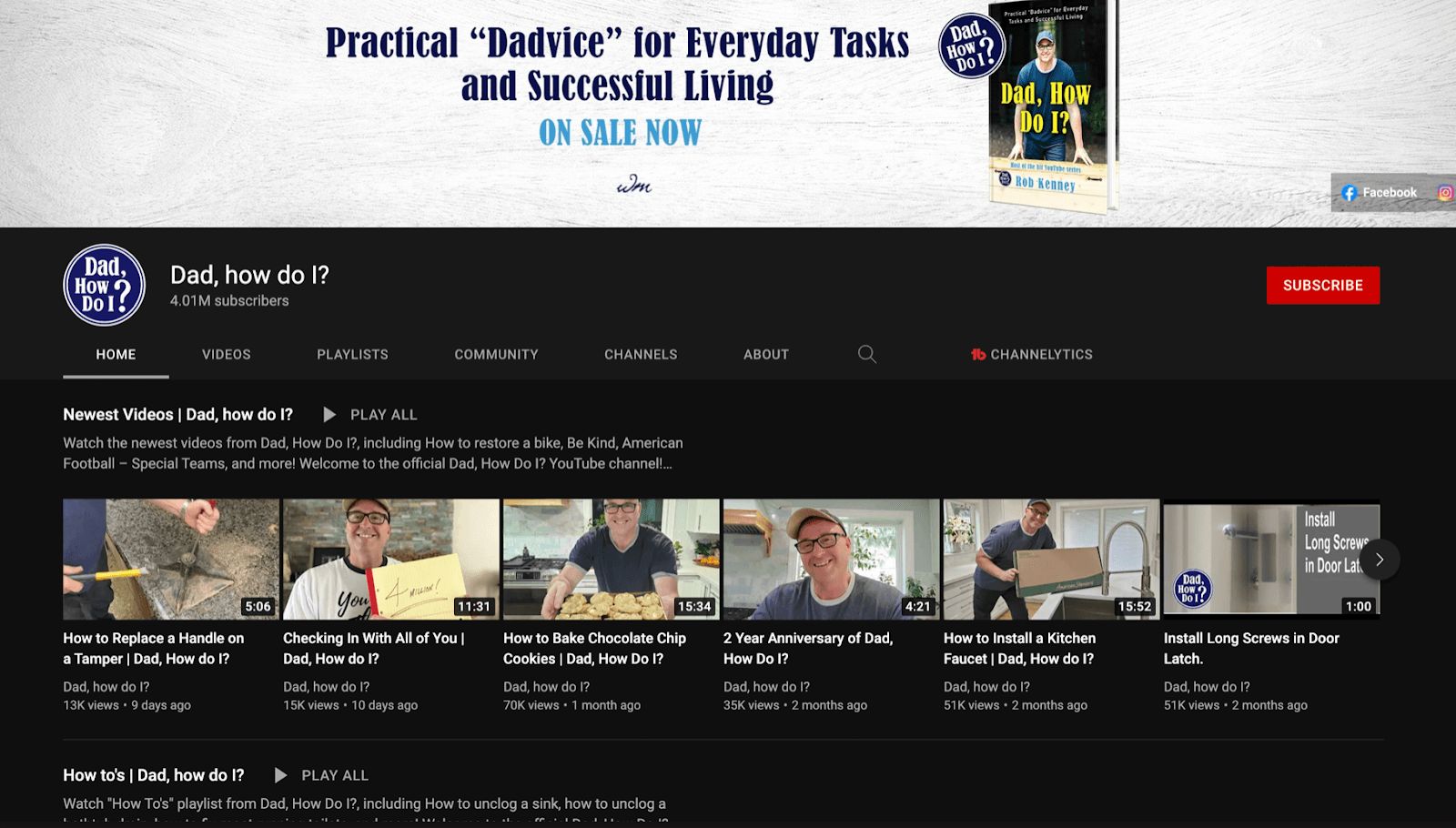
You’re also going to want to come up with a slogan for your channel. You can think of this as your channel’s value proposition — a concise statement of the benefits people will get from your content. The slogan for my YouTube channel is “Make more money. Save more time. Help more people.” It’s what all of my content on that channel is geared around.
Similar to step #2, research other channels (not just those in your own niche) to get inspiration for how brands look and feel on YouTube.
Here are a few more resources on branding:
- What Is Branding: Definitions and Why It’s Important
- Branding and Marketing: What’s the Difference?
- The SPI Beginner’s Guide to Branding
Setting Up Your YouTube Channel
Now that you’ve laid the groundwork, it’s time to create your YouTube account and publish your first video!
4. Create your YouTube account
To create a YouTube channel, you’ll first need a Google account. If you don’t have one already, create one now by going to the Google Account sign-in page at Accounts.Google.com/signin.
Click Create account, and you’ll be prompted to enter your name and create a username and password for the account.
Once you have a Google account, go to YouTube and sign in with your new account credentials.
It’s as simple as that!
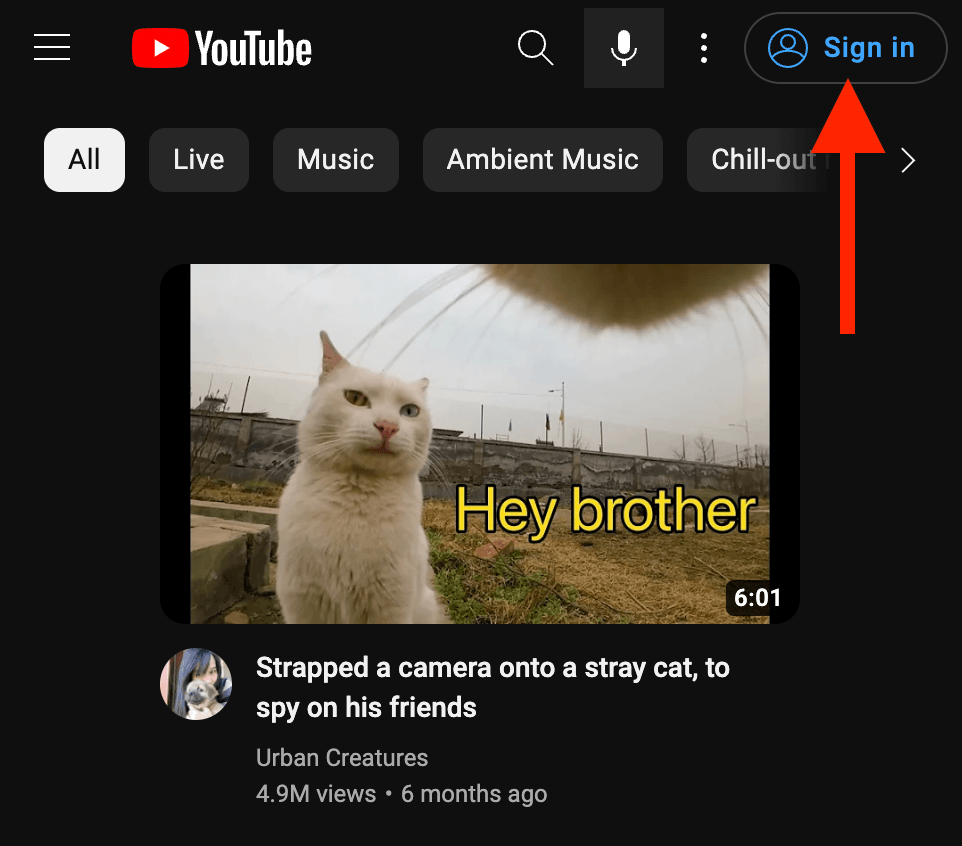
5. Set up your YouTube channel
Setting up your channel is also easy. Here are instructions for creating your channel on the YouTube website; the steps are similar on the YouTube mobile app.
Once you’re logged in, click on your profile icon in the top right of the page and select Create a channel.Add your name and handle, then click Create channel.
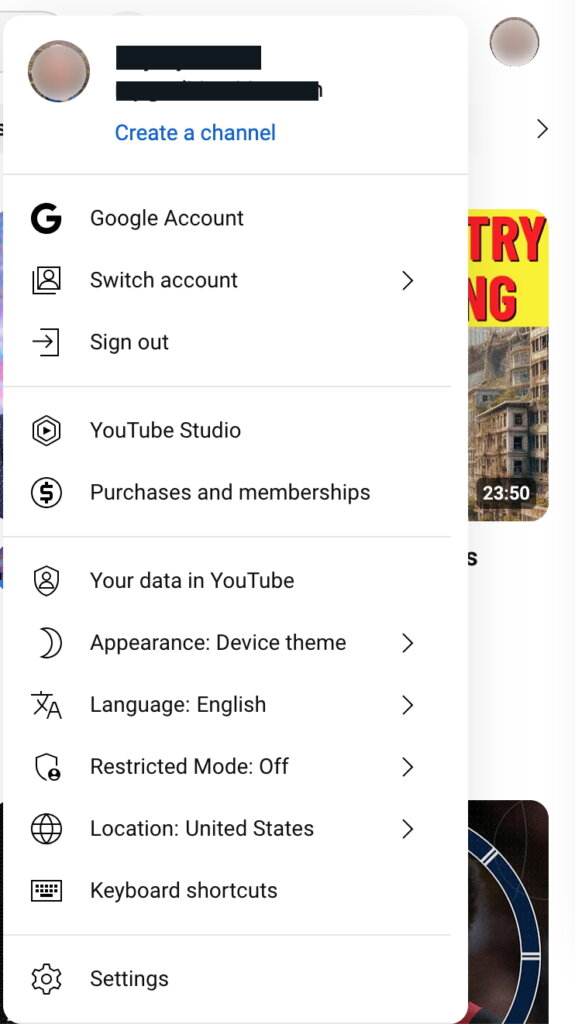
Follow the prompts to set up your channel name, description, and profile picture. Be sure to fill out all of this information accurately and completely. This will help your channel appear more professional and attract more viewers.
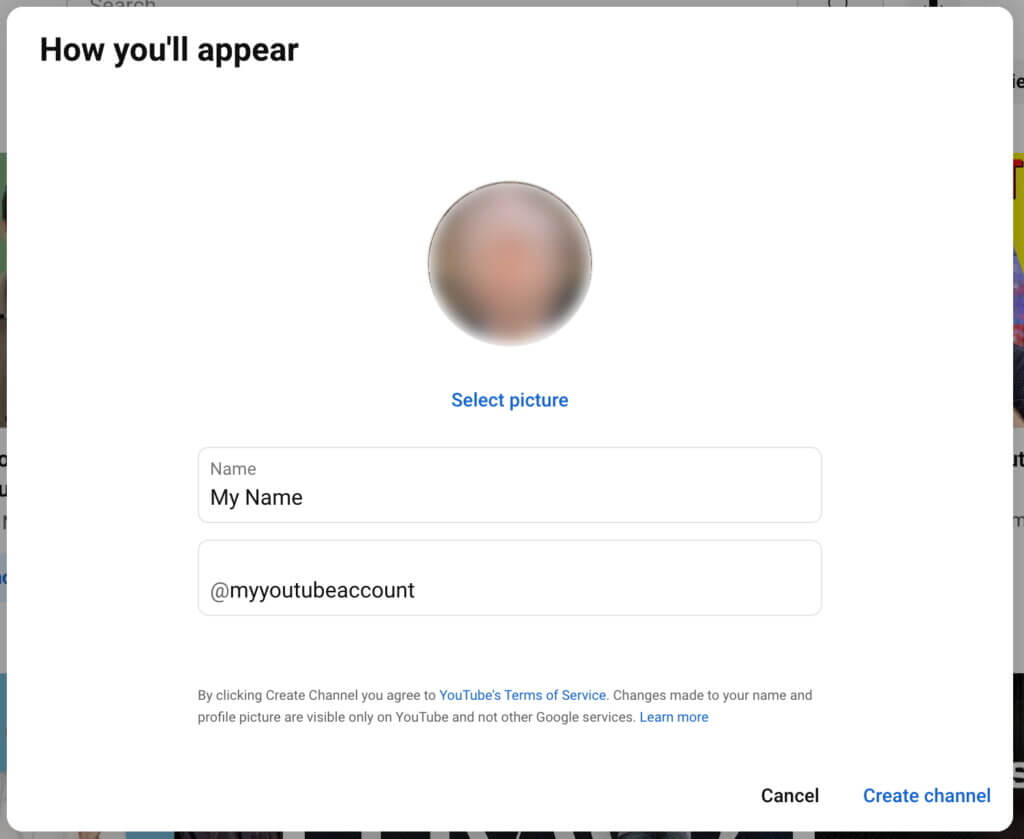
Want to customize your channel branding? Go to Channel customization and click on the Branding tab, where you can:
- Update your profile picture if you haven’t already (needs to be at least 98 pixels square).
- Add a banner, the image that appears at the top of your channel page (at least 2,048 x 1,152 pixels).
- Add a video watermark (150 x 150 pixels) that will show up in the right-hand corner of all your videos.
6. Verify your YouTube channel
This step is quick but very important if you want to upload videos that are more than 15 minutes long, add custom thumbnails, or use live streams on YouTube!To verify your channel, go to Youtube.com/verify. You’ll be asked to enter a phone number, and YouTube will send you a verification code via text or phone call. Note that your phone number can be linked to no more than two YouTube channels per year.
7. Record your first YouTube video
Now it’s time to create your first video. You don’t need expensive equipment to get started. Your smartphone camera or laptop camera will do just fine.
Choose a topic that you’re passionate about and start recording. Don’t worry too much about making it perfect — your first video is just a starting point.
It’s going to take time to see results. When YouTube megastar MKBHD was on the SPI Podcast, he said that his first 100 videos were for less than 100 subscribers. Today, he has over 18.9 million subscribers and counting.
Filming and editing videos can often derail the excited first-timer, but I definitely recommend you push through and learn as you go. If you’d like some direct help and to join a community while building a YouTube channel with others, I recommend checking out the SPI All-Access Pass, which gives you access to all of our courses (including YouTube from Scratch) as well as access to a community and my team to guide you along the way! For even more support, membership in our SPI Pro community gives you access to Experts in Residence like video wiz Caleb Wojcik.

Start your YouTube channel the smart way.
The All-Access Pass community has the courses, resources, support, and accountability you need.
8. Create a great title and thumbnail for your YouTube video
Titles and thumbnails are incredibly important: they’re the first things people see before they watch any part of your video!
Choose a title that captures attention, but don’t get over-the-top and clickbaity. Some “bait” is important, but whatever you choose for both your title and thumbnail, make sure you deliver on the promise.
There are a lot of resources for creating great thumbnails. I recommend checking out my video on quickly creating thumbnails as a starting point.

As a reminder, it’s not going to be perfect, and you can always change your title and thumbnail later. Do your best, then move on to the next step.
Tip: a great tool for creating thumbnails is Canva! Canva has a lot of templates specific to YouTube thumbnails that you can choose from.
9. Publish your first YouTube video
Hitting publish can be scary, but it’s the only way to learn what works and what doesn’t. Hit publish and be proud of the fact that you created something and shared it with the world! It’s like planting a seed: it’s now where it needs to be to have a chance to grow and thrive.
In most cases, you’re not going to get a flood of views right away, and sometimes YouTube needs time to find the right audience for your videos. That’s why the next phase is important—creating a system that helps you consistently create great video content your audience will enjoy and takes the guesswork out of growing your channel.
Creating a System for YouTube Success
If you want to grow your YouTube channel, you’re going to need to create a system. The steps below will help take the guesswork out of what to create and when to publish it, monetizing your channel, engaging with your audience, and the other keys to sustainable success on YouTube.
10. Pay attention to your YouTube channel’s analytics
Paying attention to your analytics helps you improve over time and understand exactly what’s happening with your videos, good and bad. You can find this info by going to the Engagement tab and clicking on Analytics.
Here are the two most important metrics you want to pay attention to:
- Click-through rate: This is an indicator of how many people click to watch your video compared to the number of impressions (people who saw your video title and thumbnail) your video had. In other words, are people liking the title and thumbnail enough to click through? Shoot for a 5 percent or more click-through rate. Anything below that, you can always make improvements over time.
Average view duration: This is how long a person watches an individual video. The longer you can keep people watching, the more likely YouTube will serve your videos to more people. Pay attention to your retention graph, which can show you how sticky your video is. This can be found in the engagement tab in your analytics.
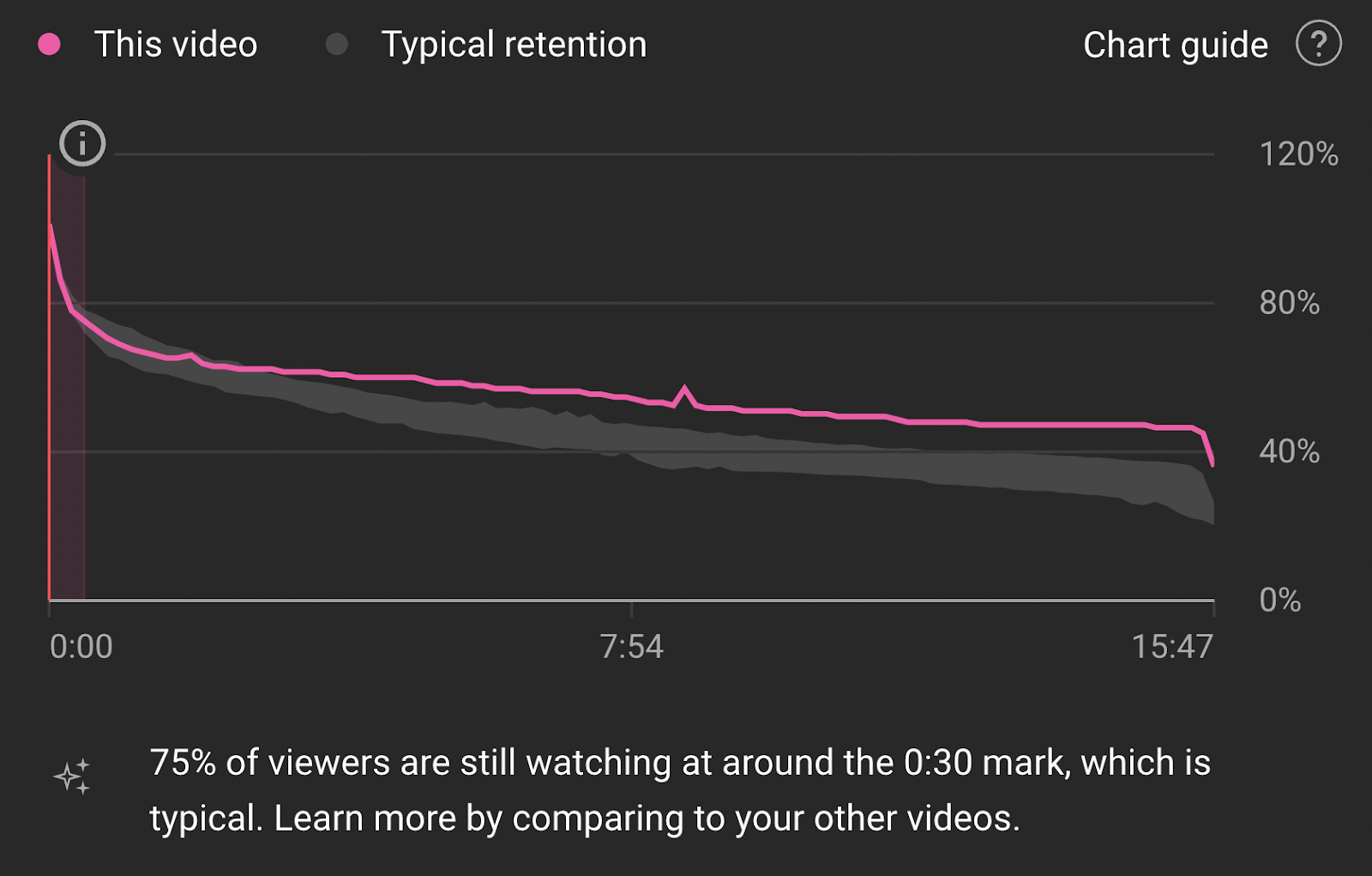
Holding the attention of your audience is a huge factor in the success of your videos and your channel.
Your analytics will also tell you what days and times people are most engaged with your videos. You can use this data to determine the best times to publish new content.
11. Create a trailer for your YouTube channel
A trailer is a short (usually less than two minutes) video that gives people a taste of your channel before they dive into your content.
Your trailer doesn’t have to be fancy—it can simply be you introducing yourself and your channel, explaining what your channel is about, what kinds of content you create, and why viewers should subscribe. (Remember your value proposition!)
Once the trailer is ready, upload it to your channel as an unlisted video. Here’s how to specify it as your trailer:
- Sign in to YouTube Studio.
- From the left menu, select Customization and then Layout.
- Under Video spotlight, click ADD next to Channel trailer for people who haven't subscribed, and select a video for your channel trailer.
- Click Publish.
12. Come up with a list of video ideas
To maintain consistency with your new YouTube channel, you’re going to need a pipeline of great content. Here are some tips to help you come up with ideas for new videos so you never run out of inspiration.
- First and foremost, focus on ideas that fit your niche—use your slogan or value proposition as a guide to make sure your video ideas match your channel’s purpose.
- Take inspiration from frequently asked questions in your niche or field of expertise.
- Cover trending topics or news related to your niche.
- Share personal stories, experiences, or behind-the-scenes looks into your life/work.
- Analyze or react to other popular videos in your niche.
- Interview or collaborate with other creators or influencers (see #21).
- Repurpose existing content like blog posts and podcasts into videos.
- Poll your audience directly and review comments on your existing videos (see #16) to learn what people want to see.
- Look at search data (like Google Trends) to find popular keywords and topics, and review your channel analytics (see #10) to identify video types that perform well with your audience.
- Create tutorials, how-to guides, or product reviews or comparisons related to your niche.
13. Create a content calendar for your YouTube channel
Consistency is important on YouTube. As best as possible, you’ll want to publish videos on a regular schedule.
Create a content calendar to plan out your videos in advance. This can help you stay organized and ensure that you’re uploading new content on a regular basis. Your content calendar can include the topics of upcoming videos, the date you plan to upload and publish them, and any other relevant information. Pay attention to your analytics (see #10) to determine the best days and times to publish new content.
Choose a frequency that works for you and the time you have available to create and upload videos. If you have the ability to create more, especially early on, that will help you more quickly refine your workflow and what works and what doesn’t for your particular audience. But be careful about overextending yourself and burning out to the point where you no longer come out with videos on a regular basis. It happens more often than not.
14. Promote your YouTube videos
Promoting your videos is an important part of growing your YouTube channel. Share your videos on social media, embed them on your website or blog, and collaborate with other creators to reach a wider audience. You can also use YouTube’s built-in promotion tools, like paid ads and featured videos.
The YouTube Community tab is a useful tool (previously only available to creators with large followers, but now open to all) that lets you engage with your subscribers outside of video uploads. You can post updates, polls, and other content directly to help foster a closer community, build brand awareness, and promote your YouTube content.
And of course, don’t forget to encourage viewers to like your videos and subscribe to the channel!
15. Improve your YouTube channel’s SEO
Did you know that YouTube is the world’s second-largest search engine? If you want to grow your channel, making sure your content shows up in search results is going to pay dividends.
Here are the biggest keys to improving your videos’ search rankings—many of which are covered in this guide!:
- Do keyword research (using a tool like Ahrefs’ YouTube Keyword Tool) to choose keywords relevant to your video topic and incorporate them into your titles, descriptions, and tags.
- Write compelling titles and descriptions that accurately reflect each video’s content.
- Include closed captions and transcripts to improve accessibility.
- Maintain consistent branding with channel art and thumbnails that grab viewers' attention.
- Engage with your audience by responding to comments and encouraging shares.
- Promote your videos on other platforms like social media.
- Analyze your video analytics to identify high-performing content and optimize your strategy accordingly.
Consistently publishing high-quality video content that’s targeted to your niche is crucial for YouTube SEO success.
16. Engage with your YouTube channel’s audience
Engaging with your audience is crucial for building a community around your channel. Respond to comments, ask for feedback, and create videos based on your audience’s interests and requests. This can help you build a loyal fanbase and keep them coming back for more.
A question lots of first-time YouTubers face is whether to leave comments on or off on their videos. The benefit of turning them off is that you’ll save time not having to moderate or respond, as well as avoid potential spam comments. But in my opinion, you’re missing out on a lot of potential benefits if you do this! By allowing viewers to comment on videos, you’ll have a chance to learn from your audience about what they’re looking for, as well as establish a direct rapport with them. It’s a little more work for you, but it’s definitely worth it!
17. Monetize your YouTube channel
Once your channel has grown, you may be eligible to monetize your videos. This can include earning money from ads, sponsorships, and merchandise sales. To monetize your channel, you’ll need to meet YouTube’s Partner Program requirements. This includes having at least 1,000 subscribers and 4,000 watch hours in the past 12 months. Once you meet these requirements, you can apply to join the Partner Program and start earning money from your videos!
There are a few more things to keep in mind as you dive into monetizing your YouTube channel:
- Meeting YouTube's monetization criteria (1,000 subscribers and 4,000 watch hours in the past 12 months) to be eligible for ads.
- YouTube offers a number of ad formats (skippable, non-skippable, overlay, etc.), and you’ll need to choose the optimal one for your video types.
- Your content will need to follow YouTube's advertiser-friendly guidelines—or you’ll risk demonetization.
- If you’re planning on doing paid promotions, you’ll need to make sure you’re complying with laws on disclosures for these kinds of promotions.
- You’ll need a solid understanding of your audience demographics so you can target relevant advertisers or sponsorships.
18. Upgrade your equipment
Although you can definitely get started with just your smartphone or computer camera, once your channel starts to take off and generate some income, consider upping the ante on your video tech.
- Camera: A new camera is probably the first thing that comes to mind when you’re looking to upgrade your YouTube setup. Thankfully, there are lots of options to suit any budget. Here are two recommendations:
- Budget: Sony Alpha ZV-E10
- Better: Canon EOS R5
- Microphone: Just as important as a camera is a microphone, and you can make a big difference in your viewers’ experience by dropping some coin on a decent mic.
- Budget: Audio-Technica ATR2100x-USB
- Better: Shure SM7B
- Tripod: A tripod can help you stabilize and position your camera whether you’re recording in your home studio or vlogging on the go. I’m biased, but my favorite option here is the Switchpod, which I co-created with Caleb Wojcik.
- Budget: Switchpod
- Better: Also the Switchpod, although the Manfrotto Befree is an excellent option too.
- Lighting: Great lighting can make the difference between a run-of-the-mill video experience and a truly engaging, immersive one. To be honest, picking the right lighting gear can be a little complicated. I suggest checking out Caleb Wojcik’s lighting guide for some recommendations that’ll work for your budget and lighting needs.
- Editing software: The free iMovie software that comes with every Mac is a great option for most of your editing needs. But as you look to incorporate fancier edits and effects into your videos, you’ll want to upgrade to paid software like Final Cut Pro or Premiere.
- Budget: iMovie
- Better: Final Cut Pro X or Adobe Premiere
19. Organize your videos into playlists and sections
As your channel grows and you start producing more videos, you’re going to want to organize your content so your visitors can easily navigate your channel and find what they’re looking for.YouTube’s Featured sections allow you to categorize videos into different buckets that show up on your channel’s home page. On my Deep Pocket Monster channel, I’ve helpfully sorted my videos into categories.
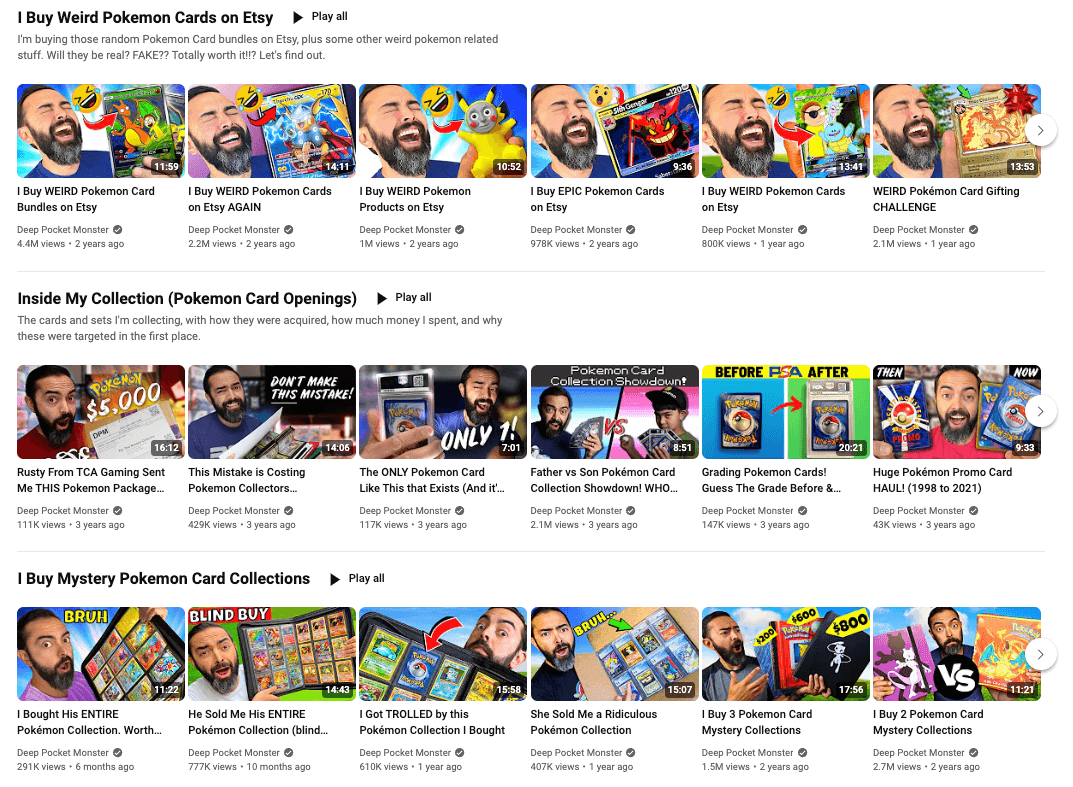
Here’s how to sort your videos in YouTube Studio:
- From the left menu, select Customization and then Layout.
- Under Featured sections, click ADD SECTION. From here, you can add a new section to display videos in a given category, such as popular videos, live streams, and playlists.
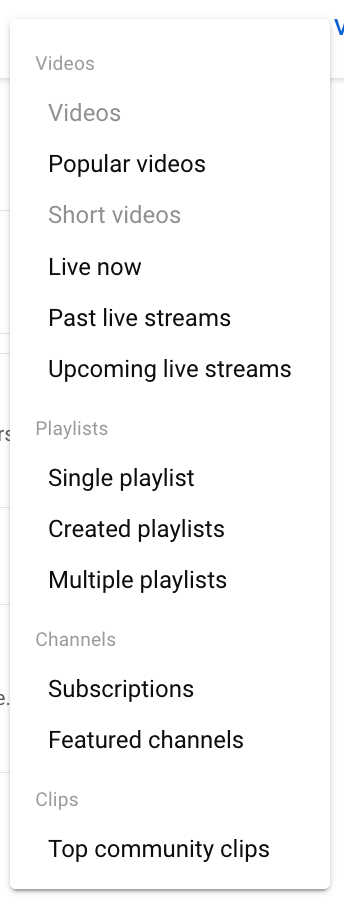
Speaking of playlists, they’re an especially useful way to group your video content according to different criteria. Here’s how to create one:
- Go to the watch page of a video that you want in the playlist.
- Click More, then Save, then Create new playlist. Enter a name for the playlist.
- Select your playlist's privacy setting (if it's private, only you can view it).
- Click Create.
Do this for each category of video you’d like to create. You can then add each playlist to a section on your channel’s home page so viewers can see your videos, neatly sorted for their convenience!
20. Take advantage of other YouTube video formats (live streaming, Shorts)
In addition to the regular “bread and butter” videos YouTube is known for, you can also create live streams and Shorts. I definitely recommend you acquaint yourself with these formats and consider incorporating them into your workflow.
- YouTube live streams: Live streaming is a great way to connect and interact with your audience in real-time, build trust by presenting an unfiltered view of you and your brand, and collaborate with other YouTubers and experts (see #21). You can also save live streams as regular videos on your channel for viewers to access later. Check out SPI Podcast episodes 502 and 704 to learn more about going live on YouTube.
- YouTube Shorts: As you probably guessed, these are shorter (less than 60 seconds) videos. These bite-size videos can help spur excitement about your channel and drive more views of your longer content. Because of the length constraints, Shorts are typically quicker to create and edit, making them a great option for commenting on trends and newsworthy topics. You can even repurpose bits of your longer content into Shorts.
21. Collaborate with other YouTube creators
Collaborating with other creators can be a great way to reach new audiences and create high-quality content. Reach out to other creators in your niche and propose collaboration ideas. This can help you build relationships and grow your channel. You can also participate in YouTube collaborations like tags and challenges to reach a wider audience.
22. Stay up-to-date with YouTube trends and algorithm changes
YouTube’s algorithm is constantly changing, so it’s important to stay up-to-date with the latest trends and updates. Follow industry blogs, attend conferences, and engage with other creators to stay informed. This can help you stay ahead of the curve and create content that performs well on the platform.
My favorite channel for this is YouTube Creators, which is run by the YouTube team itself. I also enjoy Sean Cannell, Roberto Blake, and ChannelMakers for updates, too!
23. More resources for starting your YouTube channel
Before we sign off, I wanted to share a few more resources to help you in your YouTube journey:
- My How to Create YouTube Videos playlist has advice on things like having great camera presence, improving your video production workflow, and other tips for starting off your YouTube adventure on the right foot.
- Our YouTube From Scratch course shows you how to start a YouTube channel and create valuable video content that attracts the right audience and generates revenue (even if you’re scared of video). It can be accessed as part of the All-Access Pass
- In SPI Podcast episode 771, I chat with video professional (and SPI Expert in Residence) Caleb Wojcik about how to consistently create videos to grow your business.
Ready to find join your people and level up?
Like you, we're online entrepreneurs who crave connection, direction, and support from people like us.
24. Conclusion and FAQ
Starting a YouTube channel can be a fun and rewarding experience. By following these steps, you can create a successful channel that reflects your passion and personality. Remember to stay consistent, engage with your audience, and always strive to improve. Happy YouTubing!
FAQs:
- Do I need expensive equipment to start a YouTube channel?
- No, you can start with just your smartphone camera or your laptop’s built-in camera. As your channel grows, you can invest in more equipment.
- Can I monetize my channel right away?
- No, you’ll need to meet YouTube’s Partner Program requirements before you can monetize your videos, which includes having at least 1,000 subscribers and 4,000 watch hours in the past 12 months
- How often should I upload new videos?
- Consistency is key on YouTube, so aim to upload new videos on a regular schedule that works for you. Quality is important, however, so do your best to create great videos that your audience can enjoy.
- Can I collaborate with other creators outside of my niche?
- While it’s possible, collaborating with creators within your niche can be more effective for reaching your target audience.
- How long does it take to grow a successful YouTube channel?
- There’s no set timeline for success on YouTube. It can take months or even years to build a loyal audience and monetize your videos. Keep working hard and stay committed to your channel!
The post How to Start a YouTube Channel in 2024 appeared first on Smart Passive Income.
]]>Next-level growth for next-level entrepreneurs Connect with established entrepreneurs for support, inspiration, and collaboration 10k+ Posts & Comments 450+ Active Members 5 Experts in Residence 100+ Private Events About SPI […]
The post SPI Pro Community appeared first on Smart Passive Income.
]]>Next-level growth for next-level entrepreneurs
Connect with established entrepreneurs for support, inspiration, and collaboration
10k+
Posts & Comments
450+
Active Members
5
Experts in Residence
100+
Private Events
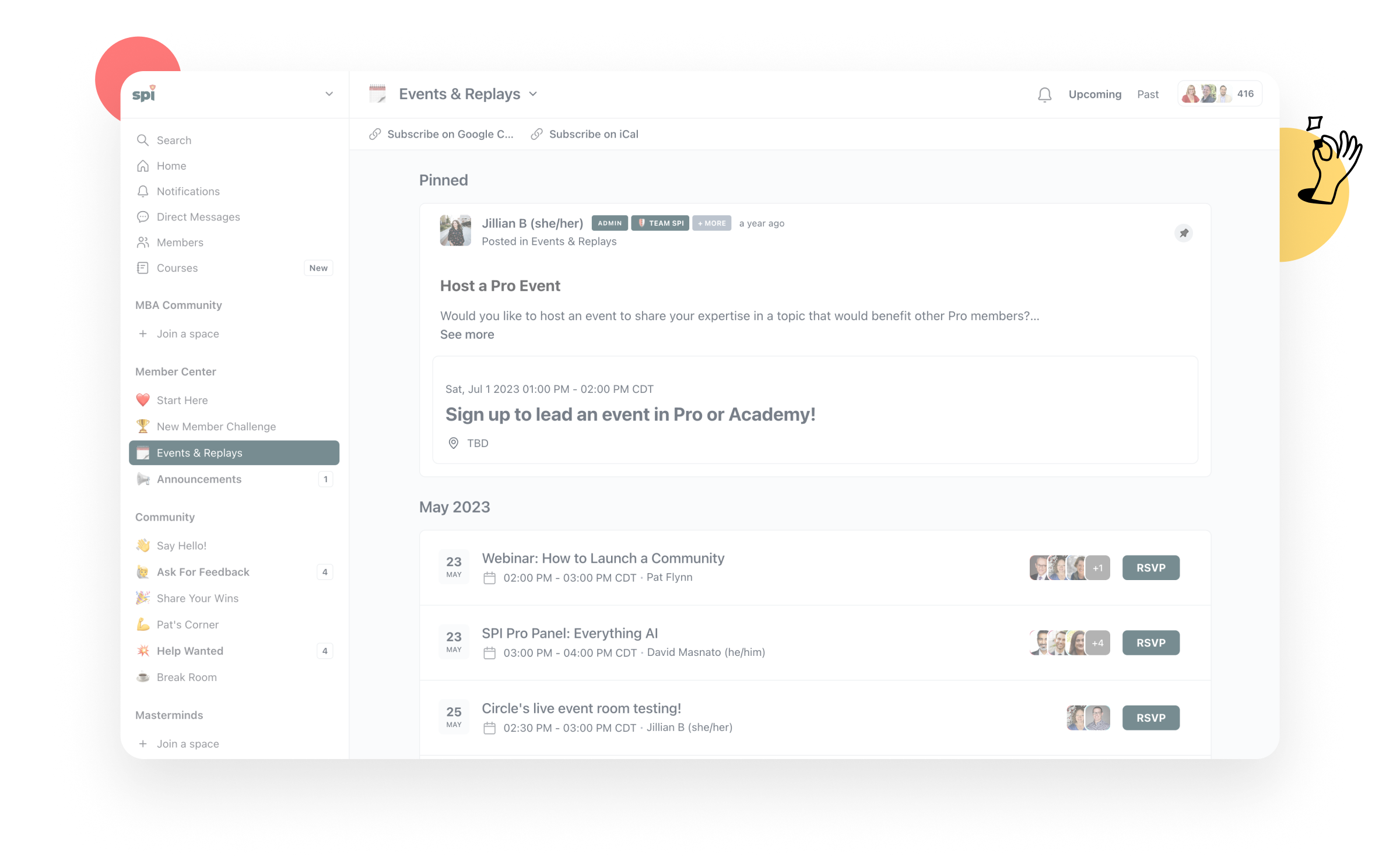
The journey is hard… it doesn’t have to be harder. Don’t do it alone.
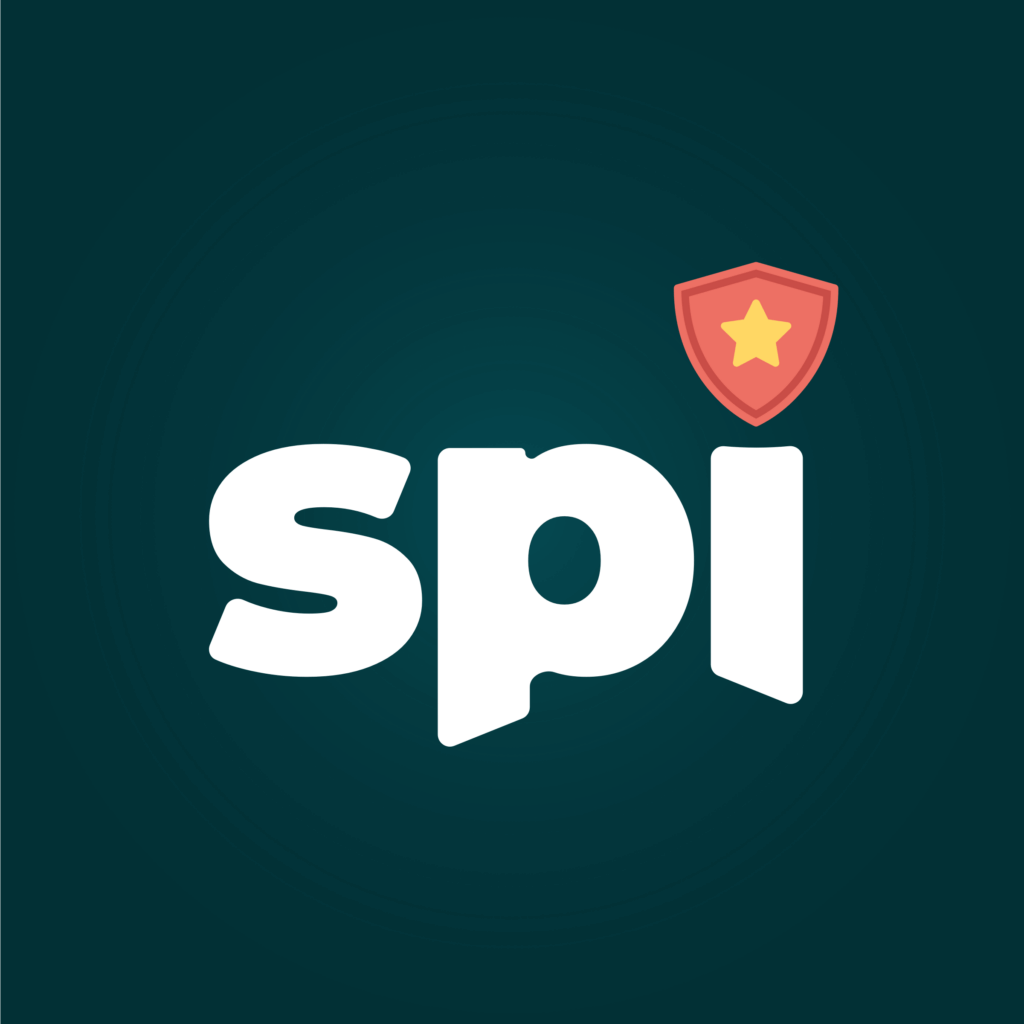
Loneliness. Doubt. Knowledge gaps. Distraction. Overwhelm.
Entrepreneurs battle these struggles every day, leading to unfocused action, wasted resources, poor decision-making, and overwhelm. Without the right support and resources, it's no wonder so many entrepreneurs burn out before achieving their dreams.
This difficult terrain is all part of the entrepreneurial journey, but the probability of success — building a profitable business on your own terms — is dramatically improved when you have a supportive, informed community behind you. When you have a cohort of experts you can lean on. When you have a place to get your questions answered. When you belong to a group of peers going through the same struggle alongside you.
Enter SPI Pro.
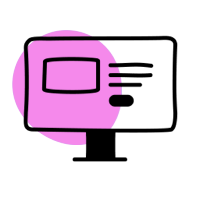
Cutting-edge education
Full access to SPI’s entire library of online courses, as well as accelerators — cohort-based course learning led by members of Team SPI.
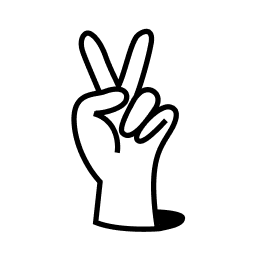
SPI Pro is a membership community for entrepreneurs who are ready to take what they’ve already built and 10, 20, or 100x its success and impact.

Immersive training
Monthly AMAs, workshops, expert-led events, and other inspiring, live opportunities for enhanced mastery of key skill sets.

Professional networking
We’re the best community for online entrepreneurs because we have the best people. Our Pros care deeply and are unwaveringly passionate about helping each other succeed.

Interactive collaborations
One of the many perks of Pro includes access to masterminds: irreplaceable opportunities for accountability, direct feedback, and support for your next big move.
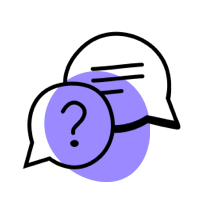
Proven, expert advice
Have questions? Pro has answers. Not only that, our expanding roster of Experts in Residence (see below) offers unparalleled opportunities to get answers from folks who have been in your shoes.
Best-in-class community programming — by design
The experts will see you now
Want some real talk? Our Experts in Residence (EIRs) have you covered. They’ve done the hard work. They’ve learned the ropes. And, lucky for you, they’re your exclusive in-house guides.
When you’re an entrepreneur, you’re responsible for everything. That’s why we’ve built our expert network to cover, well, everything:
Our Experts in Residence network covers the bases so you can focus on what matters most — your business.
Mastermind groups — opportunities for connection that are a cut above the rest
Exclusive only to our Pro community, you can join or even start a mastermind group.
These peer-to-peer mentoring opportunities help members solve their problems with input and advice from a tight-knit group. SPI Pro offers both peer-led and expert-led masterminds. Search for existing groups in the Mastermind Directory or form a new group with entrepreneurs in the Mastermind Connections space. Or, ask our team to hand-match you with the right group to push you forward.
Comprehensive education — access the entire SPI course library
Full access to SPI’s entire course library is included with a Pro membership, a value exceeding $199/quarter.
And we don’t just offer our courses without guidance — included with your Pro membership is the All-Access Pass, SPI’s educational membership community. Inside, you’ll find:
Ready to grow your online business?
Complete the application and we'll reply to your submission within a week.
We would never recommend a tool, product, or resource that we don’t truly believe will benefit you. If you’re not yet ready for Pro, not to worry! The All-Access Pass might be a better fit for the current stage of your business.
Inside SPI Pro
SPI Pro was created to meet the needs of entrepreneurs who want to take their businesses to the next level. We understand those needs because we’ve been there.
SPI Pro is made up of three pillars:

Connect & Grow
Connect with other entrepreneurs who “get it” and are truly invested in supporting each other on the same mission to grow their businesses. Allow our community managers to hand-match you to a mastermind group aligned to push you forward.
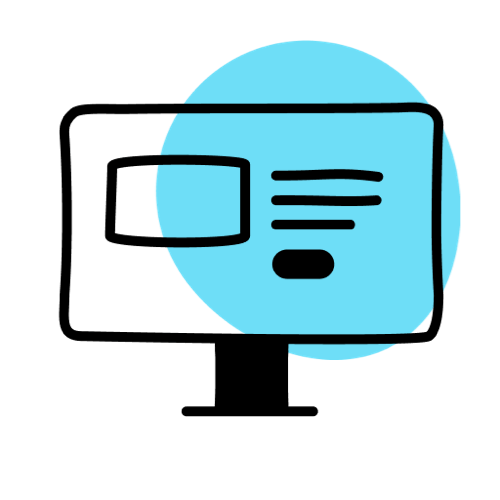
Learning
Access ongoing events exclusive to Pro members that address relevant needs for business growth. SPI's All-Access Pass is also included in your membership, which gives you access to our entire catalog of business courses and workshops.

Team SPI Support
SPI's team of experts are regular participants within Pro, whether it's an Ask Me Anything (AMA) hosted by Pat Flynn, a Social Media Strategy webinar hosted by SPI's Marketing team, or giving advice and answering questions within the community.
A safe place to learn and explore
SPI Pro is a nurturing ecosystem in a professional community void of hate, hype, distractions, tire-kickers, and non-starters. This is where serious entrepreneurs jumpstart their ventures, and it’s where they return time and again to stay sharp, make new discoveries, expand their networks, and elevate their potential.
“The riches are in the niches of the SPI Pro community. My most powerful interactions are definitely within masterminds! SPI did the heavy lifting of bringing the right people together so I could build community around business growth.”

Jette Stubbs
JetteStubbs.com
“The people are what I love most about the community! Everyone is willing to jump in and help and, most importantly, in a nice and caring way. In some other communities I’m a part of, the members talk down to those asking questions. The SPI community is welcoming which promotes more questions and collaboration.”
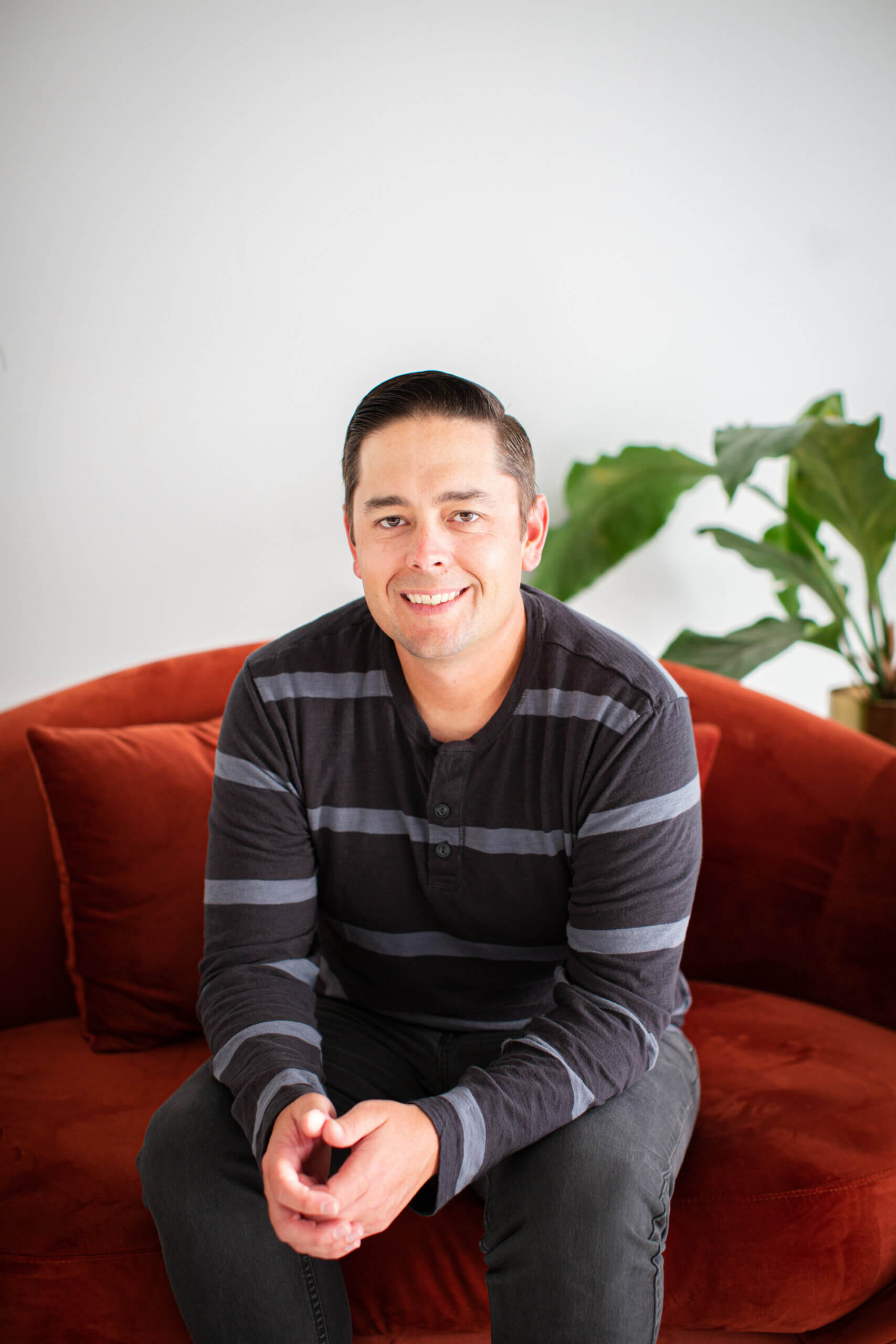
Jeremy Launder
JeremyLaunder.com
“I like the wide variety of businesses that SPI Pro members run and the depth of experience/breadth of knowledge they have on relevant topics. Other communities tend to focus on building a particular skill set, whereas SPI Pro takes a more rounded approach to the world of starting and scaling a business.”
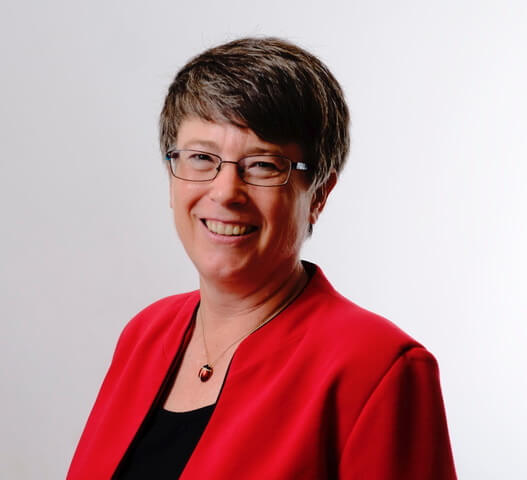
Trudy Rankin
OnlineBusinessLiftoff.com
“I love logging into Pro because I don’t feel like I’m alone anymore. To see so many other people out there working towards the same thing and supporting each other is amazing. And the community administration is amazing — the checking-in, the answers, the connecting — it’s brilliant. I hope that my community has some of the genie in the bottle that Pro has.”
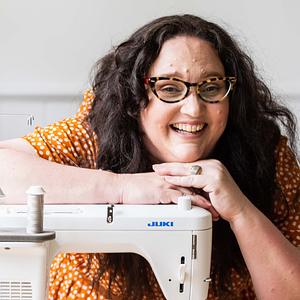
Ange Wilson
GnomeAngel.com
“The community is a really great group of people. I appreciate everything the team has done to create this space for us.”
—Margaret Campbell
Just a few of our incredible Pros (yes, we are bragging) 
Your professional network is waiting for you.
Save 16% with Annual billing


For established entrepreneurs
SPI Pro
$299
/ quarter ($99.67 per month)
$999
/ year ($83.25 per month)
You have an online business that’s up, running, and generating revenue. You’ve figured out a lot but are unsure where to focus next. And the growing pains are real.
Everything in the All-Access Pass community, plus:
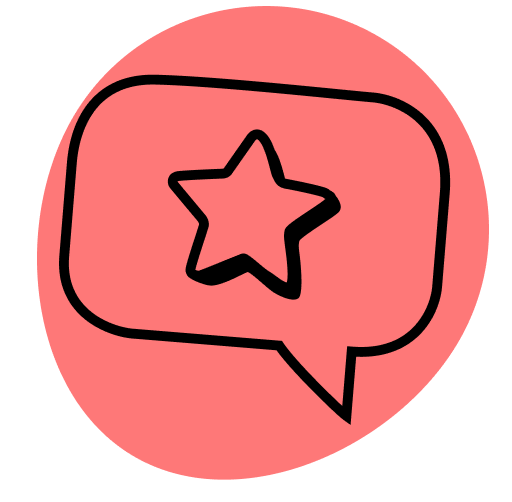
Vetted network of serious pros
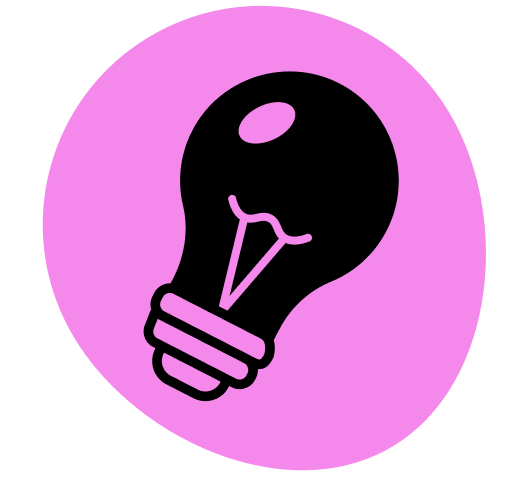
Curated member masterminds

Exclusive access to in-house experts
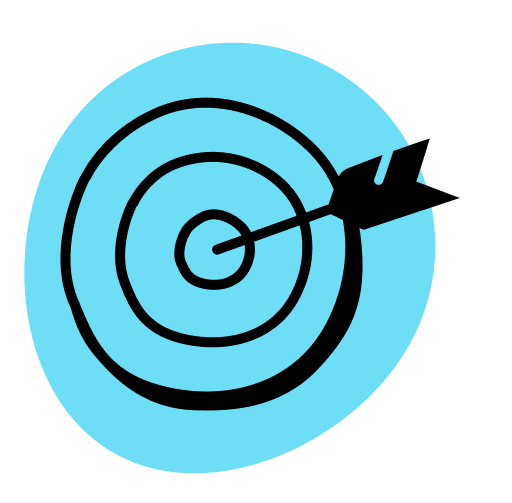
Strategic guidance & tools
“I love logging into Pro because I don’t feel like I’m alone anymore. To see so many other people out there working towards the same thing and supporting each other is amazing. And the community administration is amazing — the checking-in, the answers, the connecting — it’s brilliant. I hope that my community has some of the genie in the bottle that Pro has.”


Ange Wilson
Ready to take your business to the next level?
Complete the application and we'll reply to your submission within a week.
If you're not ready yet for Pro, the All-Access Pass community may be a great fit.
Important FAQs
That's a lot of information, but if you have questions, here are some important and common ones to know about as you consider applying:
Is there a cost to join SPI Pro?
Yes. Our member pricing is $299/quarter or $999/year (16 percent off — equal to 2 months free). Members can cancel their subscriptions at any time.
Am I obligated to join if I apply and receive an invite?
Nope! Your invite will be valid for a period of time once you receive it. If you don't wish to join, just ignore it. But we ask that you please only apply if you're very serious about it. Our team spends time reviewing each application.
I applied but did not receive an invite. What does that mean?
We send an immediate email confirmation to let you know we've received your application. You will receive a follow-up email indicating whether or not your application was accepted. If you didn’t, please check your Spam folder. Your acceptance email will include the invite and all the information you need to join. If you are not yet ready for Pro, we encourage you to check out the All-Access Pass.
What system is used for SPI Pro?
We did a ton of research on various membership platforms before making our choice. In the end, we selected an exciting up-and-comer in the market*: Circle. Think of Circle as a cross between Slack, Facebook Groups, and LinkedIn — which is to say, it's awesome!
* Circle was an up-and-comer at the time — they’ve now grown to be one of the most widely used and trusted community platforms out there.
How is SPI Pro different from SPI courses such as Power-Up Podcasting®?
SPI Pro is a bonafide private community with interactive discussions, exclusive content and events, direct access to Pat and other members of the SPI team, etc., and requires an application to join. In contrast, our courses like Power-Up Podcasting® are available exclusively through the All-Access Pass.
Will SPI courses ever be incorporated into SPI Pro?
Yes! The All-Access Pass is included with your SPI Pro membership. This gives you access to all of SPI's courses, like Power-Up Podcasting®, and all of our workshops, like Cash Flow Fundamentals.
What is the refund policy for SPI Pro?
We offer a 30-day money-back guarantee. If you are unhappy with your membership for any reason, let us know within the first 30 days of membership and we will refund your payment.
Still have questions? Contact us here.
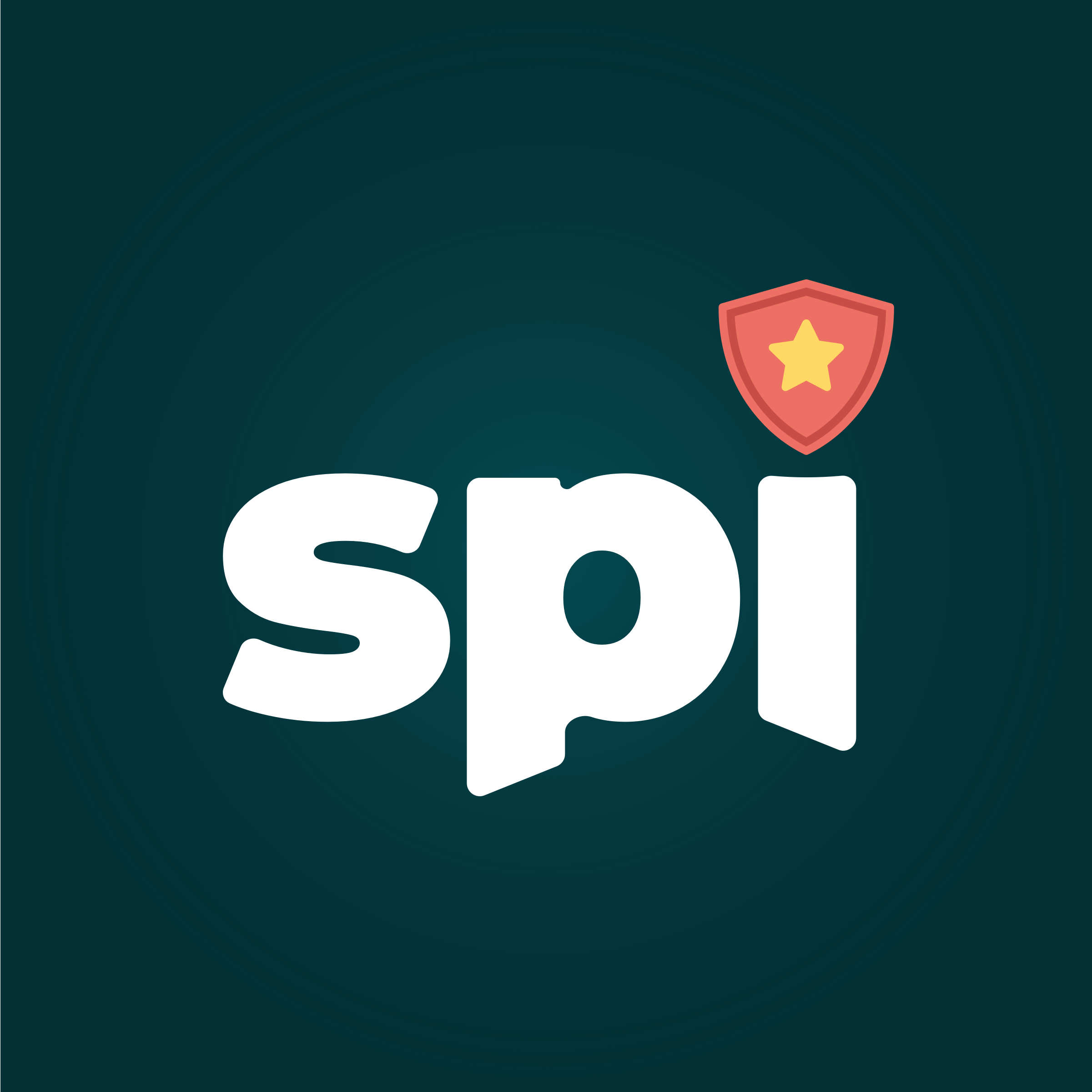
Accelerated growth is on the horizon. Apply now.
Applications are open.
Is your business still in the building phase? Join the All-Access Pass instead.
The post SPI Pro Community appeared first on Smart Passive Income.
]]>July Workshop Newsletter Mastery: Craft Emails thatAttract Subscribers and Build Your Brand Thursday, July 25th at 10:00 AM PT / 1:00 PM ET Join Pat Flynn in this hour-long workshop […]
The post All-Access Pass Workshop appeared first on Smart Passive Income.
]]>July Workshop
Newsletter Mastery: Craft Emails that
Attract Subscribers and Build Your Brand
Thursday, July 25th at 10:00 AM PT / 1:00 PM ET

Join Pat Flynn in this hour-long workshop
Are you struggling with drafting the perfect newsletter? Looking to grow your audience and build lasting connections?
Join Pat Flynn for an immersive workshop where you’ll learn how to craft newsletters that attract subscribers and elevate your brand.
Pat will focus on how to position your content, perfect your messaging, and time your emails for maximum impact. Discover techniques for promoting your newsletters to grow your audience and build lasting relationships. Whether you’re new to email marketing or looking to enhance your current strategy, this workshop will provide you with actionable insights to take your newsletters to the next level.
- This live masterclass is exclusively inside the SPI All-Access Pass community on Thursday, July 25th at 10:00 AM PT / 1:00 PM ET (recorded for replay). Attend live to get all your questions answered directly by Pat!
- All-Access Pass monthly workshops are designed to offer in-depth learning experiences. Recent workshops have highlighted creating strong calls to action, graphic design with Canva, and improving marketing funnels. With an All-Access Pass membership, you unlock all previous workshops and replays.
- Upskill, grow, and accelerate your business — all in one place. SPI's All-Access Pass gives you the keys to advance your custom path to success through highly-rated courses and workshops, from podcast and course creation to email marketing, product pricing strategies, community-building, and so much more. With the support of a vibrant community of fellow entrepreneurs, you'll stay engaged and on track to reaching your goals.
Sound exciting? Join the All-Access Pass now before the workshop begins on July 22nd!

About Pat Flynn
Pat Flynn is an author, speaker, serial entrepreneur, creator of SPI, and co-founder of SPI Media. He is here to serve, inspire, and support entrepreneurs with their business goals.
In addition to co-founding SPI Media, Pat is part of the SPI Experts In Residence program, bringing his extensive knowledge of podcasting, YouTube, marketing, and live events to the members of the SPI Pro and All-Access Pass communities.
During this workshop, you'll discover:
Don’t miss this opportunity to find free time and build a solid operational system!
Get access to the workshop (and a whole lot more)
Save 16% with Annual billing

The post All-Access Pass Workshop appeared first on Smart Passive Income.
]]>How do we sell more of our products? What are the top strategies to get new leads and convert them into customers? Which tactics have stopped working, and where do […]
The post SPI 777: Making More Sales and Talking Funnels with Ben Harris from ClickFunnels appeared first on Smart Passive Income.
]]>How do we sell more of our products? What are the top strategies to get new leads and convert them into customers? Which tactics have stopped working, and where do we invest our time and money to get the best results?
This is just a fraction of our discussion in today's wide-ranging conversation. My guest is Ben Harris from ClickFunnels, a popular and powerful platform for getting more people to your website and online store. (You don't need to be a ClickFunnels user to learn from today's episode, of course!)
Ben and I chat about buying ads outside platforms like Google and Meta, leveraging Facebook groups to generate leads and build a community, soap opera email sequences, running webinars on YouTube, and more!
This session is filled with both basic and very advanced tactics you might not have explored or considered yet. Tune in because Ben's next-level knowledge will spark your curiosity and inspire you to implement some of these powerful strategies!
Today's Guest
Ben Harris
Ben has been submersed in online marketing over the last decade. After graduating from college, he co-founded MB Nutrition while working full-time as a sales rep. In 2016, their flagship product, F-16, was the top-rated pre-workout supplement in the United States. This business was successfully acquired in 2017.
Ben then entered the ClickFunnels world. He would go on to work on the 2CCX Coaching Team and the business development of ClickFunnels, helping scale the affiliate program to be one of the largest in the industry.
Ben values partnerships, collaboration, and helping others set up the foundation for business success. Since his start at ClickFunnels, Ben has also led departments at ClickBank and coordinated the operation of Spark, which is ClickBank's affiliate marketing training program.
In his free time, Ben loves spending time with his wife Jaimie, and their 2 bulldogs, or you can always find Ben on the golf course!
- Find out more at ClickFunnels.com
You'll Learn
- How the ClickFunnels Two Comma Club is inspiring entrepreneurs to grow
- Buying inexpensive ads outside platforms like Google and Meta
- How to generate leads and build community with Facebook Groups
- The top strategies to get new leads and convert them into customers
- Soap opera email sequences and getting subscribers hooked on your emails
- Hosting webinars on YouTube and creating content that sells
- The growth of a software company and the story of ClickFunnels
Resources
- Subscribe to Unstuck—my weekly newsletter on what's working in business right now, delivered free, straight to your inbox
- Connect with Pat on Twitter and Instagram
SPI 777: Making More Sales and Talking Funnels with Ben Harris from ClickFunnels
Ben Harris: There just needs to be more content that is not selling, but it's teaching. If you were able to teach something, something new or something they didn't know beforehand, you were, in one, building rapport and creating a superfan. But two, you are now viewed as an authoritative figure because you've now taught them something, and you were positioned differently.
You have to bridge people from people who don't know you to people who know you. And in order to do that, it is going to be somebody that you might have to lead with a problem because they don't know you. And then go to the solution you can provide, then the product.
Pat Flynn: How do we make more sales for our product? There's a million different ways to go about it, but I wanted to bring somebody on the show today to talk about some specific strategies, some basic and some more advanced to give you light to some other options that you might have that you might not be exploring yet.
And we talk about everything from little groups and communities that you can use to then upsell or upserve into as well as book offers. And today we're talking with Ben Harris from ClickFunnels. Yes, ClickFunnels is a software tool out there that can help you with creating funnels, getting more sales.
It is a tool that I personally don't use, but a lot of people do. And after speaking with Ben on the team for a little bit, he just was a plethora of knowledge that I knew that I wanted to bring on the show. And ClickFunnels is a great tool. I've heard a number of great things about it from a number of people.
I know John Lee Dumas uses it and several others. But most of all, I just wanted to download what was happening on their end in terms of what's working and what's not from their clients who use the tool. And so whether you use the tool or not, you're going to get some value from this episode. This is session 777 of the SPI podcast and here he is, Ben Harris from ClClickFunnels.com.
Announcer: You're listening to the Smart Passive Income Podcast, a proud member of the Entrepreneur Podcast Network, a show that's all about working hard now, so you can sit back and reap the benefits later. And now your host, he uses four screens when he hosts a webinar in his office. Pat Flynn.
Pat Flynn: Ben, welcome to SPI. Thanks for being here, man.
Ben Harris: Awesome. I am so excited to be here, and I appreciate you having me.
Pat Flynn: ClickFunnels, who you work with, is an incredible company. We've heard about it for years now. How old is ClickFunnels? It's been around for a while, I feel like.
Ben Harris: Coming up on a decade, so it's kind of, yeah, 2014. Gone by like that, but yeah. In our industry, right, months seem like years sometimes. Call it ClickFunnels time sometimes.
Pat Flynn: What I love about ClickFunnels and what you do for your users is you have this thing called like the comma club, right? The two comma club, the three comma club. This is to reward your users and kind of how far they've come and what they're doing to grow their business.
Do you have any recent comma club members that have stood out to you and maybe like, what are they doing and how have ClickFunnels helped them?
Ben Harris: Oh, great question. The two comma club award was designed maybe with a Dan Kennedy-ism. I guess obviously, you know, Dan being one of Russell's mentors throughout, you know, his online marketing journey and work that I myself had came into even before I knew who Russell Brunson or ClickFunnels was, but really identifying what that finish line looks like, right?
You know, the four minute mile, right? When Roger Bannister ran the four minute mile and then hundreds of people did, it's the person to accomplish it. And really sets that standard of, you know, I want that we get people coming into ClickFunnels and even moving platforms over to ClickFunnels just because they're like, I got to get that award.
Like, I want that. Or like my friends got it. I got to get it too. And we've seen people from so many different walks of life, get these awards from physical products, coaching programs, agencies, info products, you know, kind of like how you got your start in the info product game and one that I recently, just for the question that, that does come to mind.
And this is gonna hit on a few different questions here today, is they've actually been teaching business owners and individuals how to profit through their Facebook group, and they've got their entire, you know, value ladder, right? A low end ebook that they sell that sends people all the way to their high ticket, you know, done for you programs.
But it's a very interesting, and I think there's a window of opportunity when it comes to this type of business model, although the foundational concepts remain the same, but something that to acquire leads for pennies on the dollar right now. Compared to, you know, obviously as Meta advertising costs rise over an interesting year coming up into an election, so there's a lot of money getting pumped into the market.
So it's been it's been a little bit different, right? I'm sure you've seen some of the stuff, you know similar in your line of work as well Yeah, Facebook group coaching. I guess it's been a fun way to not only grow a community but grow your leads as well.
Pat Flynn: That's really cool. And that's really smart. It goes along with what we're going to talk about today, which is You kind of that ladder and how do we get people in the door?
How do we get people from the front office to the back of house stuff, if you will, and the higher ticket items. And when I first heard about the two comma club, it was just like, man, that is really smart. Similar to how YouTube offers a silver plaque to people who get to a hundred thousand or gold for a million.
And it's just having that to be something to drive to is so smart. So I just wanted to point that out because. All of us can use such a mechanism inside of our business for our people. And then just the name itself is Two Comma Club is just rolls off the tongue so nicely. And I see people whenever I interview.
Sometimes they have the plaque in the background and they're sporting ClickFunnels. And it's really amazing. Let's talk about lead gen. I mean, what's working today? A lot of what used to work does not anymore, especially from back in 2014. So when we talk about getting people in the door and let's say, you know, getting them to be on our email list, so then we can nurture them and drive them forward, you said Facebook groups is one way, but like what's working today. You have a ton of customers who are using the program to figure this out. What, what is it really that's working today?
Ben Harris: On a scale of one to ten, let's say like one is very, very basic and then ten is like crazy growth hacky. How extreme do you want me to get in this answer?
Because I can go both ways.
Pat Flynn: Okay, let's go one, five, ten. We'll do a few different examples. So what's the easy way?
Ben Harris: Yeah, with one right now, what used to work, right, is we really would start Facebook ads going to an opt in page. Right, and that was the basic premise that built ClickFunnels into such a gigantic company was that entire idea of let's identify people who are interested, right, get them to raise their hand of, hey, I would like to learn more of that information, and then send them instantaneously identifying our subscribers, and then send to a low ticket buyer to a hyperactive buyer, right?
Instantly. And within that, obviously liquidating your ad costs. So let's say it did was 5 to capture an email on your page within selling something for 7. And then another, you know, everyone here knows how sales funnels work. That's the old way. Right in a way that maybe still could work and I do see some people doing it in the coaching space still pretty effectively but one way and I will Not speak for myself because I have not personally tested this nor have we as a company but I have seen the solo ad space make a little bit of a comeback with obviously buying solo ads And then sending them to a funnel or an offer that would be very similar to something that used to work.
But the acquisition cost is a little bit lower and the quality staying the same to be completely honest with you. And that's something to where you don't need to learn any type of ad experience, right? You know, obviously some copy that you'll have to have on your page, but from ad creative space. Don't need it right headline space, you know, even with ad descriptions or ad headlines.
You don't need it. It's something to where you can find Where your fans are congregating to who has them and send them your way you can get started for just a few dollars there are some brokerage websites out there if you just google them and I know quite a few people, whether they're a big ClickFunnels affiliate or just a personal friend of mine, that are doing it, and pretty darn well.
It was something that, you know, I learned a long time ago and then didn't see it, right? Because it was just bad quality, and there still is, right? Like, I want to be very clear within stating that.
Pat Flynn: What's the strategy? Going to a broker to find Solo ads, yep.
Ben Harris: So maybe like Udemy, and there's a, I believe, solo ads marketplace or market space.
If you just google it, solo ads, you can find people with quality email lists that are willing to put your offer in front of their audience.
Pat Flynn: Gotcha. Solo ads. So you're not working through Google AdSense or Google AdWords type of platform, but really like a more private ad that you set up on somebody else's platform or somebody else's brand would sponsoring a newsletter account is something like that as well.
Is that kind of what we're talking about?
Ben Harris: Absolutely. Yeah. So even with, you know, on someone's newsletter that has a subscriber base of raving fans, sending them to your opt in page and not really going for the sale. Right. It's really of, Hey, where is my audience congregating? Right. What other pockets on the internet are they involved in?
And then let's provide value to their audience. And then obviously bring them over to yours. And then, you know, the whole, the whole deal, right. Converting them to a buyer, but obviously giving them, you know, a lifelong subscriber is still very valuable as well.
Pat Flynn: Yeah. We've done some email newsletter swaps in the past that have worked really, really well.
And we are in fact, doing that on our podcast and also on our email list. People are buying ad spots on our email list. And it's interesting because they continue to buy, which probably means it's working, but we don't see the results on the other end of it. So you're saying that this is working and it's much, much cheaper than what we're paying for on Facebook or Instagram on those kinds of platforms right now.
Ben Harris: I'm seeing the cost per lead be cheaper with the right audience, with the right offer, which will, you know, obviously involve some exploring and testing there. It's, it's our job as marketers is to test. And then, secondly, I would say on Meta or Facebook, you know, we can call it is what it is with the paid traffic instead of going to a sales page, right?
Going to a domain that's now off app, right off the platform, you're going to keep them on and you can run ads directly to a Facebook group right now to where they do not leave. The app, right? They don't leave their browser desktop, whichever method they're using. They can join it right there, go over to the group and then go through, you know, which I'm sure in all your groups, Pat, you have those onboarding questions towards prompting, you know, where they're at in their business, their life, what they're looking to learn, and then obviously prompting them with a lead magnet of, you know, what's the best email we can send you this free training that Pat has done on how to accomplish X results, without, you know, enter pain, right? Or difficulty. And, you know, using some group funnels as one, but there's some other tools that are super cheap, if not free, to take those emails, implement them to your autoresponder, you're off and running. And not only are you capturing that email for pretty darn cheap, you're also building a group as well.
Double edged sword. So you're going to be capturing that email, building up that relationship with the person via email, but you're also having a community to where you can go live. If you do send out an email, you can post maybe a piece of that content in your group as well. With Facebook groups, they have admin assist, and I actually don't know how long this has been around for, probably quite some time, but it's something that at ClickFunnels, we're now utilizing to its full extent, but there's some automations now that you can implement that just keep the spam away. You know, certain keywords you want to band or if somebody is saying, you know, DM me or if they're putting an email address in a post or in a comment, you can actually not only automatically remove those, you can ban that person for 24 hours to let them know just, Hey, we don't allow this.
Please don't do it again. If they ban a certain, or if they violate rules a certain amount of times, they're kicked out for a week. And so there's different things to really maintaining the quality of a Facebook group because, you know, this will probably be no news to you. You got to treat a group like an email list, right?
Maintain that hygiene. If you still emailed every email that you've gotten since, you know, you're starting online marketing, your performance probably wouldn't be what it is right now, which practicing, you know, probably a lot of stuff that you teach as well. And then third piece, right? Here's like the growth, growth, hacky one with running paid traffic.
And a lot of people that are using ClickFunnels. I have not a lot, but some that I've heard that do it at a very high level, they're actually running traffic to a order form, right? Let's just say a book funnel if you're going to be selling, you know, buying Superfans if you don't have it get it but going to that and having a two step order form and you actually your cost per lead Is less because you're capturing the abandoned cart emails of people that are entering name email phone number then going over to the address and credit card form, capturing that lead is actually the cost per lead is a lot lower than running straight to an opt in or a lead magnet right now.
So I've heard. I have not done that myself, but in terms of like, it's an order form disguised for actually capturing leads. If that makes sense. I was trying to illustrate that as best as I could.
Pat Flynn: No, that makes sense. And is this where oftentimes people are doing kind of the free with shipping offer for books as well, just because they know that they can capture that lead and then nurture them into the, some higher end offers from there.
Ben Harris: Exactly. And not even really treating that lead as an abandoned cart, but rather as a lead, you know, like giving them a lead magnet, right. Bringing them through an email automation that is introducing, you know, into you, your backstory, why you're selling what you sell, why you're doing what you do. And then maybe even just getting with a book offer, you know. Five or six days later.
Pat Flynn: Maybe we can go with this sort of one, five, ten or sort of like beginner, mid level, advanced sort of sequence as we go along here, because the next steps from here, we get them on our email list. You know, we see a lot of people immediately start selling a multi hundred dollar product from there, and that can work.
And then even a higher ticket item from there as well, which often requires some call or a webinar, at least. But what are you seeing work today in terms of getting a lead to convert to something and something that, ultimately leads to higher lifetime value of that customer. Where, what are you seeing?
And maybe we'll start again, beginner, middle, advanced. If you'd like.
Ben Harris: That's a great question. And you may be able to provide more clarity and even kind of keep me true here. If you think I'm going off on a path when it comes to a lot of this stuff, Pat, I just love to dwindle it down to making it as simple as possible.
And maybe that's, you know, my elementary brain, but it's like, if we keep it simple and then just have our scoreboard in front of us, it's going to allow us to dictate what direction we want to go in and what we're going to test. And not only that. But allow us as a team and a department to see if it's even working or not, right?
If we're going to be testing a bunch of different things, we're not going to be able to see what direction we need to lean into and what direction we need to lead out of. So when capturing leads, it's really two buckets. They are either in to quote, you know, Russell's training and all the way back to Andre Chaperones was an autoresponder madness.
Do you know what I'm talking about?
Pat Flynn: That's a long time ago, dude.
Ben Harris: Yeah, of going into are they in your soap opera sequence, right? Are they going through your automation and then are they in your broadcast bucket? And to really keep it too, now you can get into on a soap opera, you know, a choose your own adventure series of getting them with three emails on day one, and are they gonna get different sequences?
They click on the first email. There are some things to get into that, but really getting to a seven figure level, I have seen a lot of people not go that route. Because, you know, unless you're using something like an active campaign or something that allows you to get granular in that way, it's really giving them the soap opera sequence, right?
The autoresponder, that is the introduction to what you do. Now, I will, with the caveat, say that that could last a long time. I've seen people that have a 7 year autoresponder. Not kidding, it's that long. And obviously I wouldn't, I don't know why I would advise that.
Pat Flynn: Seven years?
Ben Harris: Seriously, really, you probably know who they are.
I know for a fact you do. But then having something, let's just say it's a month, right? Giving 30, 60, 90 days that will take them on a journey with you. And then having your broadcast bucket that does get your newsletter, right? It does get something. If you want to maybe participate in a launch that a friend is running or any kind of product you want to introduce your audience to emailing daily, a few times a week, current events, things that have happened with your life, that relationship you have with your subscriber base is really the foundation to anything online, but it's, it's really the most of what I see to answer your original question are those two buckets. Now we'll ask, do you see things different? How would you answer that question?
Pat Flynn: Well, I want to go a little bit deeper into what you mean by soap opera. Because sometimes we hear about this as a nurture sequence, right? We have the broadcast, which is like real time and what's happening right now.
But the nurture sequences is pre written series of emails that get sent out. But what do you mean by soap opera? Because nurture can just and we always say that, and we always hear it, and it, like, isn't really even defined, really. Nurture just means, like, staying in contact with them, but that doesn't really help.
But what does the tone of a soap opera sequence mean?
Ben Harris: Any message or story you can tell and write that leaves them hanging, right? Just like a soap opera, where they're like, you know, And that's when Johnny's wife Was never seen. It's like, dun, dun, dun, like tune in next week. You know, it's it's that it was her brother.
And it's, it's one of those things that will, you know, leave you hanging of like, PS I'll finish the story tomorrow. Make sure you look out for it. The subject line is going to say. My story with Pat, you know, so it's kind of leaving them hanging and expecting more and just like any series you will watch that, you know the walking dead right breaking bad these huge huge tv shows over the last decade or so what do they do?
They leave you hanging. They leave you wanting more. And I referenced those years. I'm going back to like when they were coming on TV, not you could binge the whole thing on one night on Netflix, but what you can now, but as they aired on national TV, they followed that script, right? Storytelling is storytelling.
I don't care if it's your email list or Shrek, it all goes through a story. And I think that the more people would follow that one, they're going to be building a bond with their audience because they're sharing an element of vulnerability that more likely the reader shares with the writer, you're also taking them on a journey that's going to leave people hooked.
At that point, I think you're in the process of creating superfans.
Pat Flynn: Yeah, I would agree with that. And if we can relate it obviously to the pain that a person might have, and then you kind of agitate that pain or you amplify it a little bit and then provide your solution. This is where your offer comes in, can come in. Are there any sort of top level advanced ways people are converting beyond that right now?
Ben Harris: Yeah, I would say because you mentioned at the beginning. I want to make sure I want to hit on this You mentioned sort of like higher ticket products, you know, maybe closing over the phone something like that. I would say and I don't see this often, so again, anyone who's listening or watching, just take this for what it's worth because sometimes if you have multiple call to actions in an email, doesn't really lead to anything where you want to go, right? You want to send people in a singular direction. A confused mind says no, right? We want answers, not choices.
So it sometimes leads people astray, but you could have something in a PS or another section of, and I'm talking just an email that would say if they're interested in learning more about X result, click here, and that would enroll them somewhere else. Or that would take them to book a call that might not relate to your story completely.
Or you might have an email that would in fact take people in a different direction. Again, they get, you got to make sure they raise their hand that they're interested in it. Cause obviously, and you know this, the higher you're selling a product for the more indoctrination you need, just fact. So if you're going to be selling something at higher ticket, either via webinar or via phone close for a sale, I would, on your autoresponder just have that other well open up so some subscribers can flow in that direction if they would like to both ending at the same result back into your broadcast bucket once they've completed the autoresponder.
Pat Flynn: That makes sense.
You mentioned webinars webinars has been pretty key for us but I know it's also changed over time people like JLD, John Lee Dumas, had at one point been running a webinar a week to drive people into his program and has kind of slowed down. Other people are picking it back up. What's your sense of where the world is at with the online training, like in a webinar and getting people to not just subscribe to a soap opera series or something, but you know, to a training that's happening live at some point in time that then leads to some offer.
What's your stance on webinars these days?
Ben Harris: I love this question. Even to JLD's testament as well, you know, Russell did that for years, right? It was a full seven figure stream of revenue of running paid traffic to a webinar that would launch every Tuesday and it was live and would just rinse and repeat the whole thing for a year straight and did that for years.
You know, if you look at ClickFunnels user history, you know, there's been big, big jumps, right? Most of the time for tech advances and other different lead magnets, we would launch webinars being a huge jump of that, you know, back in about, you know, 2016, 2017 around that era, but it's changed, you know, like you can see I've done live webinars myself and they don't perform like they used to. And I know like you've probably seen similar results as well. And I think a lot of it, and this is just based on theory. So I'm anyone in the comments or anything, welcome to argue with me if you want. Cause I don't know if I'm factually correct, but I just consumer behaviors changed, you know, like whether it's Gen Z forming more of a buyer population or something like that, I do feel like there just needs to be more indoctrination and more content that is not selling but it's teaching and I'll explain the difference is if you were able to teach something something new or something they didn't know beforehand You were in one building rapport and creating a superfan but two you are now viewed as an authoritative figure from said person because you've now taught them something and you were positioned differently. So I hope everyone here listening does know what a value ladder is It's more or less like a traffic ladder, kind of, you know, you have to bridge people from people who don't know you to people who know you.
And in order to do that, on a basic copywriting standpoint, it is going to be somebody that you might have to lead with a problem because they don't know you. And then go to the solution you can provide, then the product, right? And I think we need to follow that within our sales cycles as well. Not just advertising because people need to know what they buy and they need to be comfortable with their money.
I think guarantees are a huge piece too. And that might be a little growth hacky, but you know, standard money back guarantees I think are gone. I'm not a huge fan of them. I think there's other ways that we can be more conditional in that realm. You know, you got to meet me halfway. You don't really have 30 days, but more like a completion type things.
Or, you know, I have friends that very close friends, in fact, that don't do a 30 day money back guarantee at all. They're like, Hey, if you complete the whole course or all of my content, complete my book, my training program, anything, and you write me an email saying, Hey Pat, this wasn't worth my money. No arguments, take it.
And not only are their completion rates higher, their refund rates are a heck of a lot lower. So to circle back here, webinars are just transitioning more into content based selling. Does that make sense?
Pat Flynn: Yeah. Yeah. That makes sense. I mean, the webinars from back in the day were very, like they provided maybe 15% value and we're 85%, like really good storytelling into a pitch.
And then we even had like the video sales letters and the PLF formula and that stuff. And we do still see parts of that. The storytelling is important. The building of a relationship is important. I think that's why the PLF formula, you know, Jeff Walker's three video series worked really well because the first two had no selling at all.
It was about story. It was about the person. It was about relatability. It was about the problem and kind of what was being done to solve that and the consequence of not solving this. And that stuff can only be done so long in a, in a, in a one hour session before, you know, either it's too much or we get to the pitch or what have you, but we've seen webinars continue to work, but we've had to shift how those webinars are done.
We still have a registration page and people can go and watch them and it still does convert for us. It's still our primary mechanism. However, we're hosting those on YouTube now. Because YouTube with the live streaming platform on there allows us to get viewers who wouldn't have found us otherwise, number one, but also we're seeing a five to 10 X view rate after the webinar is over by the algorithm, pushing impressions out. And if we have at least a really good title and thumbnail, we're at least going to have an opportunity to, if anything, build a relationship with people because the first 45 minutes is all value, all content. And it's stuff that hopefully is new and different than what people are finding elsewhere on YouTube.
And, you know, YouTube is, is rewarding really good long form content right now as well, as much as it is also rewarding shorts at the moment too. So that that's working for us. But I think, like you said the more that time goes on, the more that people need to be proven that this is a real person, that this is a real solution, and that often just can't happen in a single day.
So for you to say like seven years of a, of a sequence, if you will, or having it take that long before a person converts is crazy, but also not it's it's not surprising with where we are now.
Ben Harris: On YouTube and even just kind of capping this off I think I mean, maybe I was asking selfishly you published on YouTube one You could expand your audience organically into someone who may not know like or trust you frankly and then that at worst can maybe convert into a subscriber or just someone who is viewing your content. But do you leave it up after you mentioned like after the replays?
How long do you leave up your video for or do you just leave it up?
Pat Flynn: We used to leave them up and then, you know, force the, like, get the replay by tomorrow because it's going to go away. It's going to go unlisted and you won't be able to find it. But we found that there's more benefit for just keeping it up because what we've done recently is the urgency that comes in, and maybe this is something we could talk about too, it's like what goes with the offer when we offer something, how are we creating urgency to help a person make a decision?
Because for a while, for the longest time, I and many others would put a discount on a product and the discount would go away by a certain date. This is, this is classic and still people do this and do it very well. And people act because they have to or else the price will go up. Right. They have to make a decision.
So what we've done because we don't want to offer a discount anymore, that in our eyes reduces the perceived value of what we're offering. It reduces the quality of what the product may feel like. Couldn't agree more. We want to keep that price the same because it's now community and community is our product, but the urgency comes in with if you get in by next week, you can join the rest of the students as we all go through this course together, that the accelerator group that goes through this, the cohort begins on this date. So if you want a two and a half times more chance to succeed and transform, do it with this group that starts next week.
So, are you going to come with us or not? That's the urgency. That's the decision point. That's what's working really well. Are you seeing anything work really well? Are there bonus offers that expire or other kind of funnel hacking type things that are working for conversions these days in that regard of urgency and scarcity?
Ben Harris: That's a good question. And we frankly probably need to do a little bit more of that. Right now what has been, you know, just been working with the constant flow of ClickFunnels customers for years has been growing our audience, right? Just growing our list and growing our trial base, which is too many KPIs that anyone in any sort of subscription business should be monitoring, but it's really just that value ladder, right?
Bringing people and obviously no one has sold ClickFunnels until they've taken the steps to in order to be shown click funnels, right? Someone who is a dead cold customer would never join our subscription, right? And nor should they, they don't know, like, or trust us. They need to be converted and to someone who has bought a book from us in the past, who has subscribed to a lead magnet.
And for us going through that, there's not really, I guess, any bonuses or urgency that goes within that unless it is, you know, obviously a webinar or ClickFunnels annual, and we'll include some digital products in there as well that they can't find anywhere else. It's only included if you buy ClickFunnels annual product on a webinar.
But I love the idea that of, you know, having the cohorts, right? That's that's part of that, you know, community piece that your brand is so huge on and you teach incredibly well. Do you find that that strengthens your community by having those cohorts?
Pat Flynn: Yeah, I mean, absolutely. It's interesting because we have people come in for those accelerators and they're like, like we used to run the cohort separately, you know, just when we were experimenting with this and they were like, okay, this is over.
We have transformed, but we want to stay in contact with each other. Like, how do we, can I get the email of everybody else who took this with me? Because we need to, we're going to form a group together kind of thing. And we're like, okay, well maybe we should just create the place where the groups form after, and as people are going through this, that way it's there already.
So it's, you know, they come for the content, they stay for the community kind of thing, which is really great. I just got really curious about ClickFunnels itself in the business. How are you getting your influx of customers these days? You mentioned a free trial. How are they getting to see that? Can you kind of go through the, your value ladder that you have as a company?
I'd be curious to see how people are coming through into the software. We have a lot of software entrepreneurs in the audience as well, who I'm sure are curious.
Ben Harris: Yeah. And it's really about, you know, growing our audience. And that could be obviously there's a little bit of a cheat code because there's a guy named Russell Brunson that's got a pretty large following and has been, you know, the face and, and the, the founder and everything behind this company.
Yeah, and with growing his audience as well as a direct proportion to our user base growing, frankly, and it's about so if you are a founder of a software company, some metrics that you should be focusing on or growing, whether it is your company list or your own personal email list, if those two are growing and you are doing the back end at a semi effective way, your company should be growing.
And even from a software perspective, if your user base is growing year over year, so should your price. So should your price. And I think that's one thing that a lot of people I don't think take advantage of just from a basic profitability standpoint. And that's not anything of trying to make more money.
That's just something I've learned from consulting groups over my years of, you know, my lap around the sun. But I think that if you are growing a software company and really what we've done, it's been growing our audience through low front end products. I know that sounds boring and mundane. But it's been done effectively and done with discipline and it was either Dan Kennedy or Russell has always said book buyers the best buyers and maybe you could attest or disagree with that, Pat, but it has been Dot Com Secrets, Expert Secrets, Traffic Secrets, the box set of turning a lot of lower ticket buyers into lifelong customers and it's really indoctrinating them with the teachings and the philosophy because with ClickFunnels, it was like ClickFunnels is the car, right? And Russell's calling was to teach you how to drive. And then once you got in, you knew exactly what to do. So with us growing, that's one piece. The second half of the fence is really a spot where I live a lot in our company, and that's our affiliate revenue.
You know, we've done a phenomenal job at growing an affiliate army, if you will. And anyone here would like a good read. Integration Marketing by Mark Joyner is a fantastic read, like 80 pages. You can read it in one night. But really going about our customers, right? You know exactly who your avatar is. If I asked you right now, Pat, you could paint a picture for me if you wanted to.
But finding out we're else your avatar lives, right? What other products are they buying? And within those products, those courses, those teaching, is there any blank real estate where ClickFunnels could live as well, right? Could we help each other and do some stuff and maybe provide their audience and offer that won't exist anywhere else.
A true one time offer. And that's been huge for us as well. You know, at times has equated to quite a bit of our annual revenue have been the partnerships and the affiliate. Just integrations that we have with other people that are out there selling to our audience as well.
Pat Flynn: Nice. How do you determine the right compensation model for a company like ClickFunnels?
Like, is it a percentage for life or, you know, how do you calculate that? I know that there's a lot of other softwares out there who often struggle to find, you know, a groove with their partner or an affiliate program. How have you been able to solve that? What does that look like?
Ben Harris: I'm pretty polar on this and I say that because I want to give, A, our customer, the best experience, right? If we're not doing that, why are we even here? And secondly, I want to give our affiliate the highest compensation that we could give them with keeping our lights on as well. Because in my mind, they're bringing me a customer that I didn't even know. And a lot of it from even just starting out, I would advise doing this if you're running paid traffic or any type of paid media, how much does it cost you to make a sale?
Just put a number in your head. How much is it costing you? And then if you're in a subscription based business, what is your average stick rate? What's your customer lifetime value and kind of find a medium in between there. So if it's going to cost you 300 to make a sale and your lifetime value of a customer is around a $1000, what would you rather do right give somebody a little bit more and you take a slight haircut if they're gonna bring you a raving fan that's a raving fan of them coming into your world that you know. And obviously, you know, it's really about knowing your numbers because they could bring you a lifetime value that's higher or lower So you really got a kind of look at that per affiliate.
But in terms of just starting out look at how much you're paying to gain a customer and start there.
Pat Flynn: That makes sense and I know from Being an affiliate for different companies and also having an affiliate program for my own products, oftentimes the large number of sales come in from a fewer number of people, very much like super partners.
If you will, you know, Pareto's rule comes into play. How do you build a relationship with a partner like that? How do you go out and start a rapport for somebody who you feel would be a great fit to promote a software like yours and nurture that relationship and get, get it to a point where you're both helping each other win.
Ben Harris: So there's a, a quantitative or qualitative answer to that. I'll go quantitative first. It's really about strategically kind of coming into their world. So whoever that is, right, you've identified, we call it the dream 100 from Chet Holmes of who are my top 100 dream promoters of my product. And really kind of involving your life into theirs.
Like, where are they on social media? You should be commenting on their posts and not stuff, like make sure it's at great post Pat, you know, with the hands up emoji, like, you know, no one would really care about that, but really finding out what's important to them, subscribing to their list, emailing back, making sure that you are showing love, you know, meeting who else is on their team, right?
If they have an EA, you're going to want to get in good with them as well, right? They're the eyes and the ears of anybody who you're looking to be in front of. And again, kind of commenting on their post, finding out what's What are the contacts you can get in touch with? Maybe looking at, are you one introduction away?
Do I have a close friend who might know you that's like, Hey, could you start a text thread with Pat Flynn or even ask if he'd be interested in meeting who I am? So taking that strategic approach and sort of knowing how to broach it, it's courtship and it's most simplest form. That's what it is. I'm not going to try and walk up to a girl and ask her to marry me.
She'd probably hit me in the head and rightfully so. And on a qualitative front on that. It's just finding out what's important to them and being their friend. And if people do business with people they like, and especially in this industry, and you've been around to the point where if it's built to last, it will, right?
People who are out for their own gain, you can sniff it from a mile away. And if you're not in this business to, to help everybody and the rising tide lifts all ships, then I hate to break it to you. I don't know if you need to hear it from me, but you're not going to make it that far. And it's most basic.
Human element form. It's how can I help whatever they're trying to accomplish? And if you do that, expecting nothing in return, I promise it'll work out for you. If you just zoom out for a bit. So again, double sided one strategy, one is just, you know, let's, let's figure out how to just be a good person.
That's, I would suggest that.
Pat Flynn: I would plus one that as well. And if you're a long time listener of SPI, you know that that's, that's how we do things around here. So I appreciate that. Ben to finish off here, I want to ask you about, you know, we've talked a little bit about where things were and what things are working right now.
Where is the puck going? What is ClickFunnels doing right now? What are you thinking in terms of the future and where we're at? In maybe a year or two, how are we going to continue to remain on top of it when it comes to marketing our products and sales? What's going to change?
Ben Harris: You got to think about the ClickFunnels customer and what they're looking to accomplish and whether there's 100 steps, 10 steps, however you want to define it.
In my mind, how can I remove every one of those barriers, right? How can I make the path to a two comma club award as easy as possible? Not easy, but it's removing areas of friction and they exist. And it's really about helping people. You know, you see other people in this industry, right? They've got different things you can download that make building funnels easier.
They make accessing products easier, maybe on the drop shipping front, you know, integrations, different things like that. And I'm saying just drop shipping. That was just something that came to my mind, but in terms of where the puck is headed, that's what we're trying to do is making it, you know, AI plays a big piece in that.
On the creation standpoint, making it as easy as possible. I hate the word easy because I feel like it's a, it's a shortcut type answer. And that's our team is actually our hashtag, this year is no shortcuts. No, John Gordon has like one word for the year. I have one hashtag. I really don't know why I just came up with it, but that's sort of our deal.
But it's something about how can we eliminate as much friction as possible? Because what we used to do is just give them the tool. Gave you the tool, taught you how to drive. Now there's, there's a little bit more handholding. That's probably a bad answer. Do you want me to go deeper on that?
Pat Flynn: Go deeper if you can.
Ben Harris: I guess, you know, AI. AI is changing the game. And we are going to be implementing quite a bit of that in terms of helping you create content, source products, ideas, and so on. Get the actual product themselves, you know, create email sequences. You know what does you're going to have the ability to just do much more than a share funnel.
And it, for any ClickFunnels fan out there, you knew that if I had an opt in page or a template I wanted to share with you, I could just give you a link, it'd be in your account a couple of different seconds. You'll now be able to do that. As if we're on steroids and I'll leave the open loop there, but you can do much more than a share funnel now and a lot of help with creating content.
It eliminates the guesswork, right? AI is sort of like your internet assistant that has been studying for decades, you know, that already has a bunch of information. So learning how to use that, you're going to eliminate a lot of guesswork and a lot of issues for yourself.
Pat Flynn: Nice man. Well, we got a lot of stuff to look forward to and I've, I've heard so many great things about ClickFunnels from a lot of our own users and a lot of my friends too. So if anybody wants to check out ClickFunnels and see what it might do for them in terms of helping them with sales and building funnels for themselves, where should they go?
Ben Harris: ClickFunnels.com. You got it, man. Definitely a lot of cool stuff coming down the pipeline. Follow us on social media at @ClickFunnels and we'll be coming out with a lot of fun content that I hope you enjoy.
Pat Flynn: Nice, man. Thanks so much, man. Appreciate it. Thank you, Pat.
All right. I hope you enjoyed that episode with Ben. Again, you can check out the company and the software at ClickFunnels.Com if you'd like, but great episode. You know, we talked about a number of different things that you could do. What I would recommend from here and with all episodes of the podcast is you get that one nugget, that one idea that you know that you can try and implement and you give it a chance, you execute, you commit to it, you see it through, you follow through, and then you can assess from there.
And I guarantee if you take even one of these ideas from today's episode, maybe it's a more beginner one, or maybe a more advanced one, you're going to see something happen. You're going to see some results and be able to adjust from there. So thank you again, Ben. Thank you to ClickFunnels and Russell.
Russell and I have crossed paths every once in a while. We weren't able to get him on the show, but he's super busy, but Ben is great. So thank you, Ben. And thank you for listening all the way through. I appreciate you. And I look forward to serving you in next week's episode and next week's interview.
Cheers. Thanks so much. See you in the next one.
Thank you so much for listening to the Smart Passive Income podcast at SmartPassiveIncome.com. I'm your host, Pat Flynn. Sound editing by Duncan Brown. Our senior producer is David Grabowski, and our executive producer is Matt Gartland. The Smart Passive Income Podcast is a production of SPI Media, and a proud member of the Entrepreneur Podcast Network. Catch you next week!
The post SPI 777: Making More Sales and Talking Funnels with Ben Harris from ClickFunnels appeared first on Smart Passive Income.
]]>Level Up: Email Marketing Pathway Part of the All-Access Pass course library. Optimize your email marketing practices, accelerate your business. Learn about the Pathway Level up your email marketing game […]
The post Level Up: Email Marketing Pathway appeared first on Smart Passive Income.
]]>Level Up: Email Marketing Pathway
Part of the All-Access Pass course library. Optimize your email marketing practices, accelerate your business.
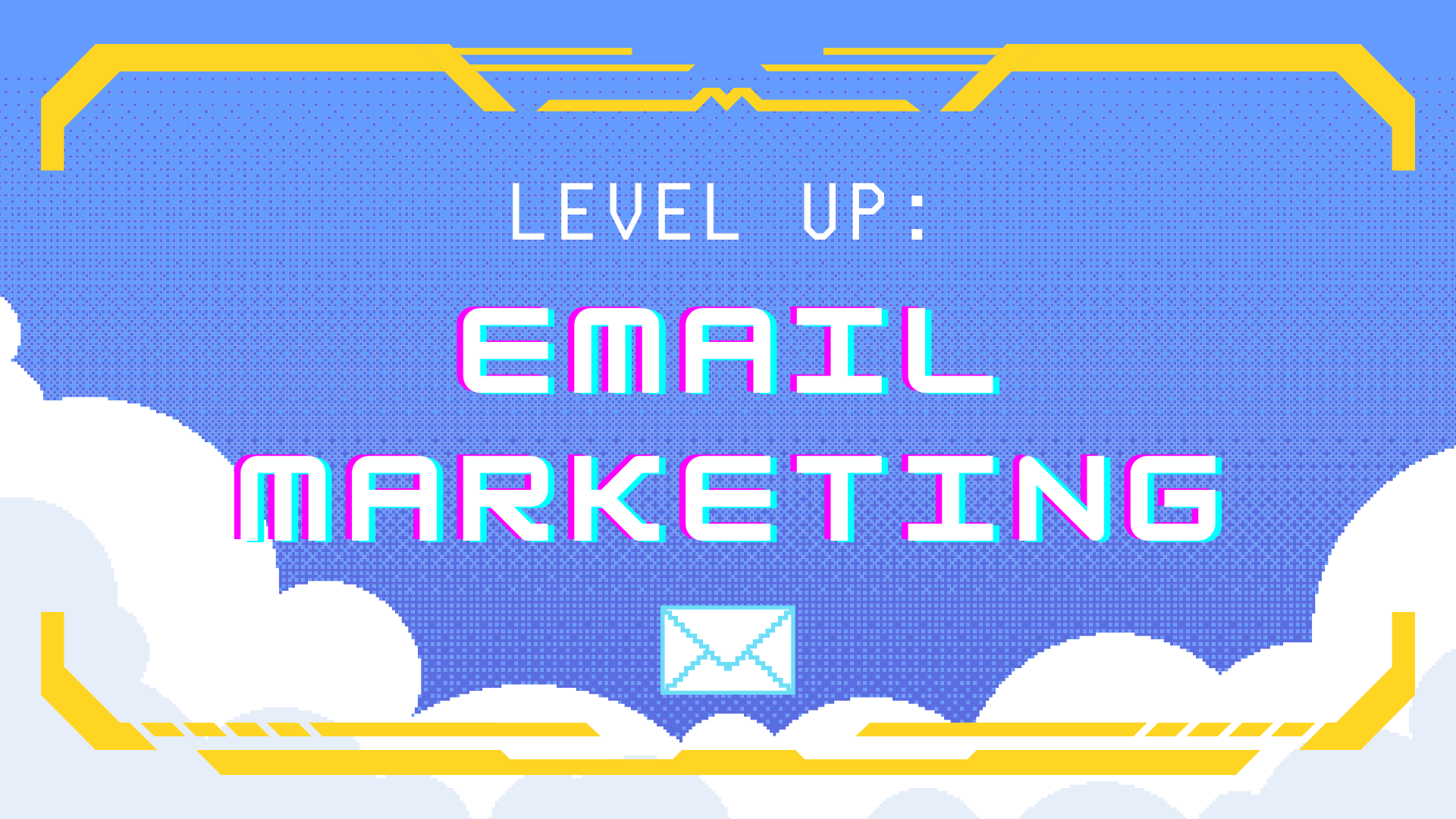
Level up your email marketing game
Is your email marketing strategy causing excess stress, taking a ton of time, and honestly, not performing as you had planned? Let’s change that.
This exclusive All-Access Pass pathway is a curated collection of lessons and workshop snippets that will help you optimize the performance of your email campaigns and focus on building and auditing your email funnels.
By the end of this pathway you will be able to:
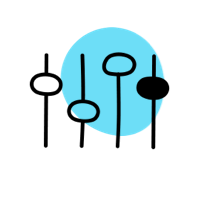
Optimize your email titles
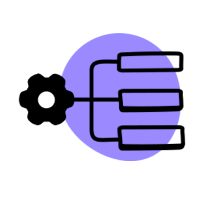
Build or audit your primary email funnel

Understand what an email funnel actually entails
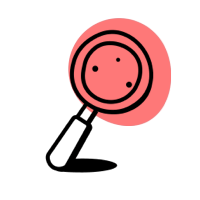
Identify how to increase your open rates, click-through rates, and deliverability
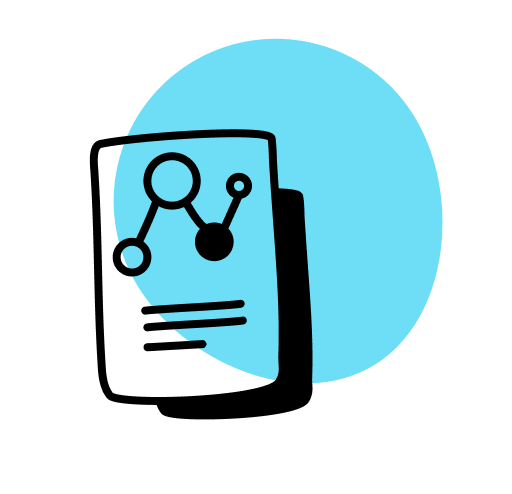
Design a roadmap to track progress toward monthly goals and bridge gaps
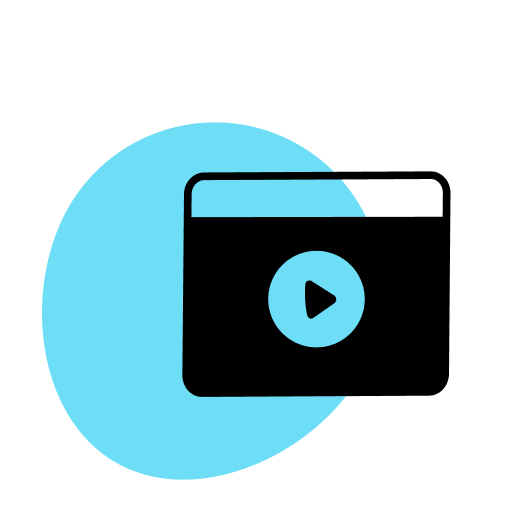
Make a plan to repurpose content you have already created
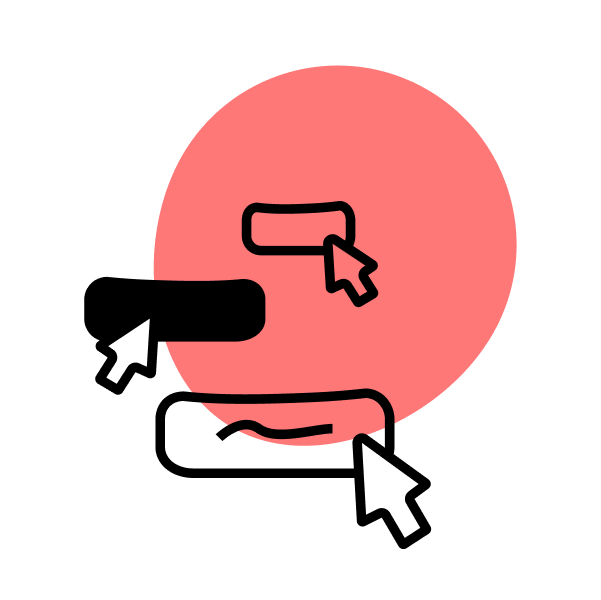
Score leads and build action plans that make sense to your business
Become a Member Today
Like you, we're online entrepreneurs who crave connection, direction, and support from people like us.
Must-haves before taking this pathway:
Learn to use ConvertKit
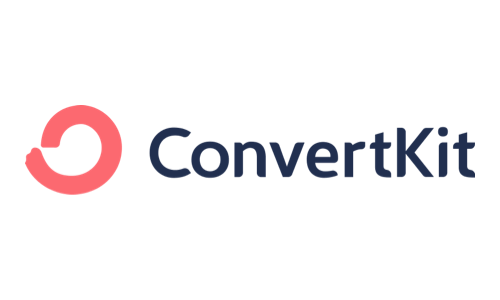
ConvertKit is our favorite email service provider—it strikes a balance between intuitive usability and powerful automation. All step-by-step videos in the course use ConvertKit. You don't have to use ConvertKit to succeed with this course, but we highly recommend it.
[Full disclosure: SPI founder Pat Flynn is a compensated advisor and SPI Media is an affiliate for ConvertKit.]
Take it from these members who are already feeling the pathway's impact firsthand
“I have learned a ton over the last few years, and Pat's new Email Marketing Pathway course is a great example. He packages things so well in courses and outlines everything in an easy-to-follow manner. Progressing after completion is a matter of putting the lessons into action. You will surely grow from a small email list and be amazed by how simple it was to do with this guidance. Pat Flynn and the team at SPI are a great bunch of people who care about your success. You won’t regret joining the community! Come join us!!!
#TeamFlynnForTheWin”

Andrew Borst
Raven Pontiac Media LLC
“Level Up: Email Marketing was really helpful in giving me a high-level overview of marketing funnels and how to manage a journey for potential clients. This will be useful in my full-time job and for any future entrepreneurial endeavors. It also gave me a respect for those who would be on any email lists I oversee to make sure they are the right people to be on the list and not to take advantage of it by spamming them or anyone who shouldn't be on the list.”
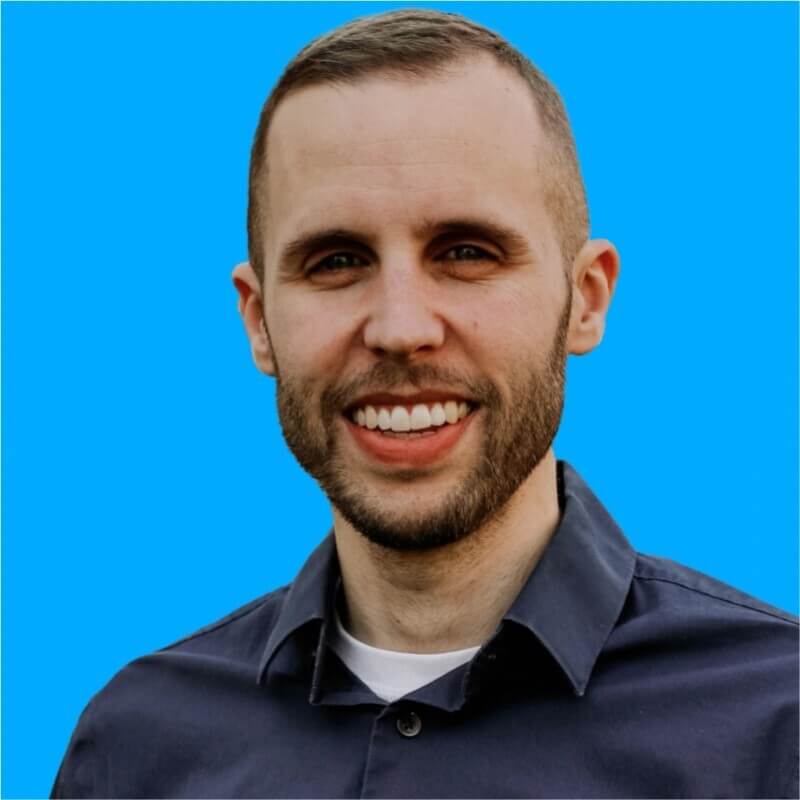
Greg Lees
Level Up: Email Marketing Pathway Outline
Introduction
- Welcome to Level Up: Email Marketing!
Level 1: Optimizing Your Emails
- 1.1: Increasing Open Rates
- 1.2: Subject Line Considerations
- 1.3: Increasing Click-Tthrough Rates
- 1.4: Increasing Deliverability
- 1.5: Purge & Clean Your List
Level 2: Email Funnel Basics
- 2.1: What is a Funnel?
- 2.2: 6 Parts of an Email Funnel
Level 3: Fixing Your Funnel(s)
- 3.1: Funnel Vocabulary
- 3.2: MOFU is the Magic
- 3.3: Create Once, Use Again
- 3.4: Expressed Interest? Follow Up
- 3.5: Lead Scoring
- 3.6: Weekly Snapshots
- 3.7: Don't Just Automate
What Now?
- Recommended Further Learning
- Feedback & Digital Credential Application
We believe in community-driven courses
Save 16% with Annual billing

The post Level Up: Email Marketing Pathway appeared first on Smart Passive Income.
]]>An elevated online education experience for entrepreneurs Master vital skill sets to accelerate your business in less time with trailblazing resources and a motivating community. 10k+ Posts & Comments 1.2k+ […]
The post All-Access Pass appeared first on Smart Passive Income.
]]>An elevated online education experience for entrepreneurs
Master vital skill sets to accelerate your business in less time with trailblazing resources and a motivating community.
10k+
Posts & Comments
1.2k+
Active Members
18
Premium Courses
100+
Private Events

We begin with the best of intentions…
…to learn a new skill, to accomplish a goal.
We’re inspired, excited, and ready to learn from content that we know can change our lives. But then life gets busy. One night off turns into two, and then three. Soon it’s been a month and you know you should start over… but life gets in the way and you move on. The course goes unfinished. “Maybe next time,” you tell yourself.
Sound familiar?
That’s where community-led courses come in: a ground-breaking approach to online learning that combines the power of community with innovative online course curricula. Combined, you get the educational pathways to develop your skills as an entrepreneur and grow your business within a supportive community that keeps you accountable.
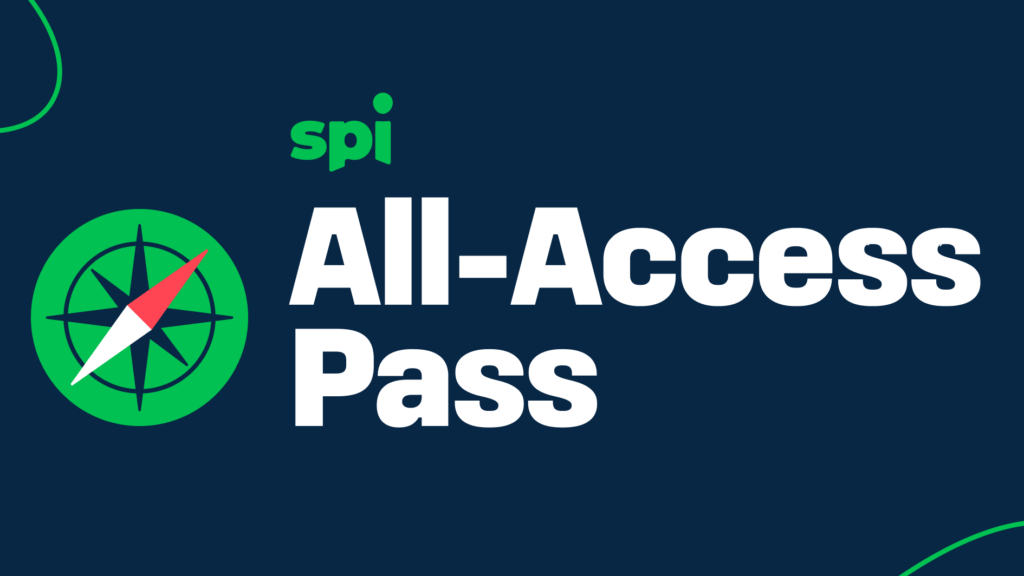
According to our members, our community is their happy place
“The biggest surprise for me is the accountability. I never liked school and yet I feel inclined to finish assignments! This is a big deal for me as I always struggled with following through. This community has changed my entire mindset. I am more focused, determined, and organized than I have been my entire life. Those benefits have spilled over into my personal life as well. This is a total win/win for me.”

Monique B. Thomas
MoniqueBThomas.com
“I’ve had the SPI All-Access Pass for a couple of months. I had a head start with 100k YouTube subscribers but never created a course, marketed it via email, or knew anything about webinars. SPI helped me set up the offer, and structure the program with pricing. The results? I grossed $165k in sales for my first cohort! If I can do it so can you.”

Steve Huynh
ALifeEngineered.com
“The SPI All-Access Pass has provided me with a fresh perspective on small business and entrepreneurship, opening my eyes to a whole new approach. It's not just a membership; it has revolutionized my mindset, approach, and strategic thinking. With exclusive courses, live events, and a supportive community of like-minded entrepreneurs, it goes beyond a typical membership.”

Tina Cheesley
Flow-Online.co.uk
“I have struggled for years with being overwhelmed about where to start my online business. The SPI Academy [now the All-Access Pass] provides an A to Z roadmap using Pat’s courses. What makes the experience priceless is the great community, accelerators, and the opportunity to frequently get help from PROs who are a little further down the road. For the first time I feel like building my business isn’t just a possibility, but I am excited each day to wake up and make it a certainty.”
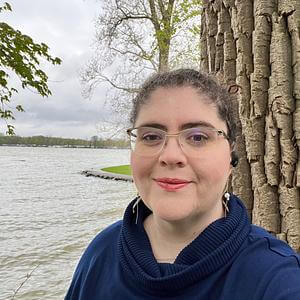
Rachel E. Stout
RachaelEStout.com
“There are so many great things about the All-Access Pass! Access to pick at courses as needed, accelerators to boost progress with added accountability, and the community for sharing, support, and celebration!”
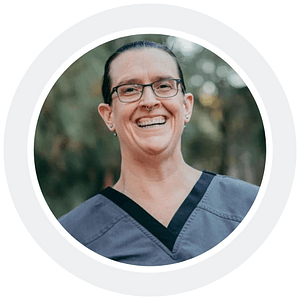
Wendy Wiseman
TamingYourTension.com
All-Access Pass gives you the resources, skills, and motivation you need to grow your business
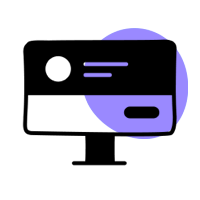
Access the playbook
Gain access to SPI's highly-praised course catalog, along with new curriculum and workshops build by education and business experts. Custom topic pathways focus on exactly what you need to learn for faster results.
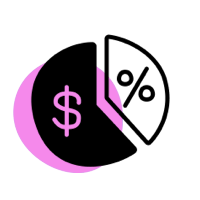
Master entrepreneurial skills
With online community-based learning, you will learn faster with access to experts, mentors, and peers to provide support. Our courses and workshops are specifically designed to elevate your professional skills in less time.
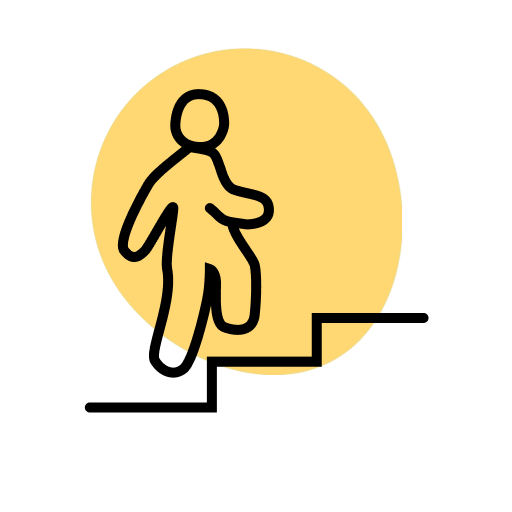
Achieve your business goals
Our learning community of like-minded enterpreneurs holds you accountable, keeps you engaged, and motivates you to persevere. Solutions are brought to life as members take on similar challenges and celebrate achievements.
People are 65 percent likely to meet a goal after committing to another person.
Their chances of success increase to 95 percent when they build in ongoing meetings with their partners to check in on their progress.
The American Society of Training and Development
Upskill, grow, and accelerate your business — all in one place
SPI gives you the keys to advance your custom path to entrepreneurial success through highly-rated courses and workshops, from podcast and course creation to email marketing and product pricing strategies (and more).
These specific pathways and innovative educational curricula will elevate your success; simultaneously, the community will keep you engaged and on track while you apply your new skill sets to your business.

Accelerators
Work through a specific course with a cohort of members over a 5–8 week time frame.
Make Steady Progress
Follow a syllabus that maps out the exact lessons and activities each week.
Both Live and Asynchronous
Each week has both live and asynchronous elements to make sure your questions get answered. Not able to make the week's live call? Just watch the replay.
Work with Others
Use the dedicated Accelerator space to work alongside your cohort, asking questions, receiving feedback, and supporting your fellow students.
Chosen by the Community
New accelerators are voted on by the community. Join us to help choose a topic.
2024 Accelerator Schedule
January 22 Amp'd Up Podcasting | 7 weeks
February 12 Community Business Blueprint | 8 weeks
March 21 Heroic Online Courses | 7 weeks
April 18 Level Up: Email Marketing Pathway | 5 weeks
June 26 YouTube From Scratch | 7 weeks
July 11 A to Z Webinars | 11 weeks

Live Events
Workshops, office hours, and expert Q&As to refine your skills and answer your questions.
Monthly Workshops
We offer an in-depth workshop each month designed to teach you a new skill.
Recent workshop topics include creating strong website calls to action, graphic design with Canva, and improving marketing funnels.
Pat Flynn's Weekly Office Hours
Each week, Pat Flynn takes your business questions in his office hours.
Community Expert Sessions
Several times each month, members of the SPI Pro community share their skills with one-hour sessions. Formats include expert Q&A, skill-building workshops, and tutorials on useful tools.
Past Event Library
An organized library of past event recordings, so that you can easily catch up on any presentations you missed.
See the complete listing of events

Pathways
A detailed map to help you work through a specific topic faster.
Focus on a Specific Skill
Learn more in less time. Pathways blend individual lessons from multiple courses and workshops to focus on a specific area of growth.
Focus on a Specific Skill
Learn more in less time. Pathways blend individual lessons from multiple courses and workshops to focus on a specific area of growth.
Level Up: Email Marketing Pathway
Learn how to improve your existing email marketing practice. Employs lessons from Email Marketing Magic, Click and Convert, and portions of presentations by Pro member experts Jeff Gargas, Katy Widrick.
Your people are waiting to meet you!
Save 16% with Annual billing

Our members have rave reviews

“I’ve had the SPI All-Access Pass for a couple of months. I had a head start with 100k YouTube subscribers but never created a course, marketed it via email, or knew anything about webinars. SPI helped me set up the offer, and structure the program with pricing. The results? I grossed $165k in sales for my first cohort! If I can do it so can you.”

Steve Huynh
ALifeEngineered.com

Watson Saintsulne
The Wholesale Truth Podcast

“There are so many great things about the All-Access Pass! Access to pick at courses as needed, accelerators to boost progress with added accountability, and the community for sharing, support, and celebration!”

Wendy Wiseman
TamingYourTension.com

“The biggest surprise for me is the accountability. I never liked school and yet I feel inclined to finish assignments! This is a big deal for me as I always struggled with following through. This community has changed my entire mindset. I am more focused, determined, and organized than I have been my entire life. Those benefits have spilled over into my personal life as well. This is a total win/win for me.”

Monique B Thomas
MoniqueBThomas.com

Everything I need to learn about how to create a profitable business is at my fingertips. It's like getting a business degree at a fraction of the cost.
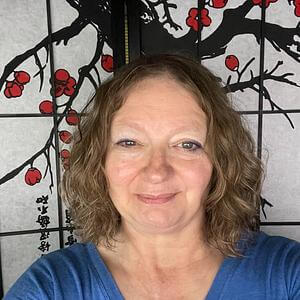
Karen Bemmes

“The accelerator course was extremely helpful in understanding the how's and why's as well as the encouragement to continue on the entrepreneurial journey. Everyone is helpful and encouraging and I highly recommend participating in an accelerator course!”
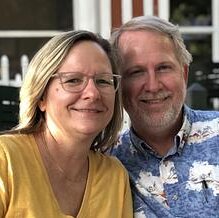
Wendell Murray

Cynthia Long
ASLTeachingResources.com

“I have struggled for years with being overwhelmed about where to start my online business. The SPI Academy [now the All-Access Pass] provides an A to Z roadmap using Pat’s courses. What makes the experience priceless is the great community, accelerators, and the opportunity to frequently get help from PROs who are a little further down the road. For the first time I feel like building my business isn’t just a possibility, but I am excited each day to wake up and make it a certainty.”

Rachael E. Stout
RachaelEStout.com

“The SPI All-Access Pass has provided me with a fresh perspective on small business and entrepreneurship, opening my eyes to a whole new approach. It's not just a membership; it has revolutionized my mindset, approach, and strategic thinking. With exclusive courses, live events, and a supportive community of like-minded entrepreneurs, it goes beyond a typical membership.”

Tina Cheesley
Flow-Online.co.uk
Frequently asked questions
Discounts and refunds
Will I get to own all the courses?
No. You will have access to the courses for as long as you are a paid subscriber. If you end your All-Access Pass membership, you will no longer have access to the courses.
If I already own some of the courses, do I get a discount?
There are no discounts if you already own one, or even all of our courses. You will continue to own those courses you have already purchased, regardless of whether you join All-Access or not.
I’m in SPI Pro, do I get a discount?
You don't need to pay anything extra! The All-Access Pass is now included in your SPI Pro membership.
I bought the All-Access Pass but I'm not using it. Can I get a refund?
The All-Access Pass is non-refundable and non-transferable. Likewise, we are unable to pause membership access. Please be sure you'd like to join before you purchase.
Courses included
Will new courses be added to the All-Access Pass?
New courses will be added exclusively to the All-Access Pass and will not be sold as individual courses. Workshops will be continuously added exclusively to the All-Access Pass each month, growing our workshop catalog to enhance our course curricula (and more).
Programming
Do I have to participate in the accelerators?
Nope! All our programming is optional, but we strongly encourage you to take advantage of it.
What programming exists within the All-Access Pass?
Within the All-Access Pass, you get access to our entire course catalog as well as exclusive curricula pathways built from existing lessons, workshops, and replays. You will also have the opportunity to participate in periodic accelerators — our unique blended approach to cohort learning led by members of Team SPI. You can also choose to attend weekly live expert-led programming and robust monthly live workshops on various topics alongside the replays.
Guidelines and policies
Do you have an age requirement?
All community members must be at least 18 years old to join.
Do you have Community Guidelines?
Absolutely we do, you can read the guidelines here.
If I get kicked out of All-Access Pass for breaking the Community Guidelines, will I still have access to the courses?
No, if you are removed for violating our Community Guidelines, you will be fully removed from our platform with no refund (this is our policy for all our communities and courses).
Cancellation policy
There are no discounts if you already own one, or even all of our courses. All-Access gives members exclusive curricula, pathways, and connection opportunities beyond what is found in an individual course (more on that above). You will continue to own previously purchased courses regardless of whether or not you join All-Access.
Ready to find join your people and level up?
Like you, we're online entrepreneurs who crave connection, direction, and support from people like us.
A personal note from Pat
After working with upcoming creators and entrepreneurs like you for over 15 years, one thing has become apparent — the need to go through this journey together. The road doesn't have to be lonely and my team and I, alongside members of the SPI community, are here to help you get to where you're going. I can't wait to hear your success story, and I can't wait until the day you come back to us and say, “Pat, it was the All-Access Pass that changed everything for me.” Here's to you and the road ahead, together.


Vital skills, trailblazing resources, and a motivating community.
Your business growth starts now.
The post All-Access Pass appeared first on Smart Passive Income.
]]>Katy Widrick invested in the All-Access Pass to shift everything about her podcast and find alignment and purpose.
The post Building Wings on the Way Down: An All-Access Pass Success Story appeared first on Smart Passive Income.
]]>
For many entrepreneurs, the first step towards working for yourself full-time comes from necessity — more than just a light shove from the universe. And often — as in Katy’s case — the end results are more than worth the initial uncertainty and challenge.
Katy Widrick serves high-growth founders as a funnel fixer, recovering the biggest expenses in their businesses — lost sales — by using simple, effective systems to increase conversions and decrease top-of-funnel costs.
An EMMY-nominated journalist and multimedia producer, Katy has worked in marketing and revenue expansion for more than 20 years, strategizing and implementing profit-first funnels that help visionary leaders maximize their impact, grow their top-line revenue, and scale their product and service lines to seven, eight, and nine figures.
Katy joined SPI’s All-Access Pass in March of 2023, and it was a turning point in her career.
“Pushed Off a Cliff”
Here’s how Katy describes her entrepreneurial leap:
“In November 2021, I suddenly and unexpectedly ended my corporate career. I’d been working at an extremely fast-growing company for three years, as a member of the executive team. While it was an experience that taught me so much about growth marketing, profitability, external and internal marketing, leadership, and more, it also left me severely burned out and, if I’m honest, fairly uncertain about my next steps.
I took a sabbatical from the job and only a few weeks into the break, was notified that my position was being eliminated… so now instead of taking a leap, it felt as though I was being pushed off a cliff.”
It turns out, though, that the push was exactly what Katy needed to “build wings on the way down,” as she put it.
Between November 2021 and March 2023, Katy re-entered the workforce but this time as her own boss. She had previously founded a company called Make Media Over, where she offered online business management, email marketing, and sales funnel designs.
When Katy closed Make Media Over to pursue her corporate career, she thought it would be for good.
“I never imagined that I would go back to entrepreneurship. I truly dismantled the business — I shuttered the website, let all of my software subscriptions lapse, notified all of my clients that I was unavailable, and went all-in on the traditional corporate experience,” Katy tells SPI.
But when her corporate career didn’t pan out, Katy turned to the one asset she’d held onto for all those years: her LLC. It was still active, and Katy decided to go back to self-employment with some big, bold goals.
Ready to find join your people and level up?
Like you, we're online entrepreneurs who crave connection, direction, and support from people like us.
A Bold Pivot: Enter the All-Acess Pass
After 14 months, Katy made another bold choice. To empower herself with even more education and skill-building — and to take her business to the next level — she decided to invest in SPI’s All-Access Pass.
“I initially joined so that I could take advantage of the Podcasting Pathway. I’d started my own podcast during those 14 months, and it was fun… but I knew it wasn’t quite what I wanted to bring to my audience. There’s nobody I trust more as a teacher than Pat Flynn, and for that pathway alone, I knew the investment would be worth it.”
Katy had been podcasting and blogging under the brand “Rising Tide Talents,” a nod to her mantra that a rising tide lifts all boats. Her podcast episodes were solo-hosted and focused on marketing funnels and leadership.
A good start, but it wasn’t nearly the show she knew it could be. All-Access Pass gave her the clarity and the confidence to pivot her podcast and take advantage of all of the other materials in AAP.

“I decided to significantly shift everything — from the format of the show to the platform I hosted it on. Once I mapped it out using All-Access Pass’ guides, I immediately felt a sense of alignment and purpose. The first time I interviewed a founder on Hard Costs, I felt magic in the air. Since then, it’s been one improvement after another: I optimized the podcast for advertising, used the email marketing course to amplify my listenership, and much more.”
Part Mastermind, Part MBA, Part Accountability Group
Katy has been very successful at helping visionaries through their own blind spots, even as she continues to lean on the support of the All-Access Pass for help with her own.
“What’s that saying? A cobbler’s kid has no shoes? That’s absolutely been my experience: what I’m very good at doing for others, I’m quite terrible at doing for myself! Joining All-Acess Pass and being part of the community has been part mastermind, part MBA, and part accountability group — and I’m so thankful for my membership.”
Lightning Round
Biggest takeaway or aha moment from All-Access Pass
The Hook/Story/Ending plans for videos that Pat teaches — they work for so many other things, too!
Favorite course in All-Access Pass
Tie with Power-Up Podcasting® and YouTube From Scratch.
Unexpected benefit of All-Access Pass
The member referral program!
The post Building Wings on the Way Down: An All-Access Pass Success Story appeared first on Smart Passive Income.
]]>Heroic Online Courses Part of the All-Access Pass course library. Create a course that converts and unlock the next level of your business Learn about the course Make your student […]
The post Heroic Online Courses appeared first on Smart Passive Income.
]]>Heroic Online Courses
Part of the All-Access Pass course library. Create a course that converts and unlock the next level of your business
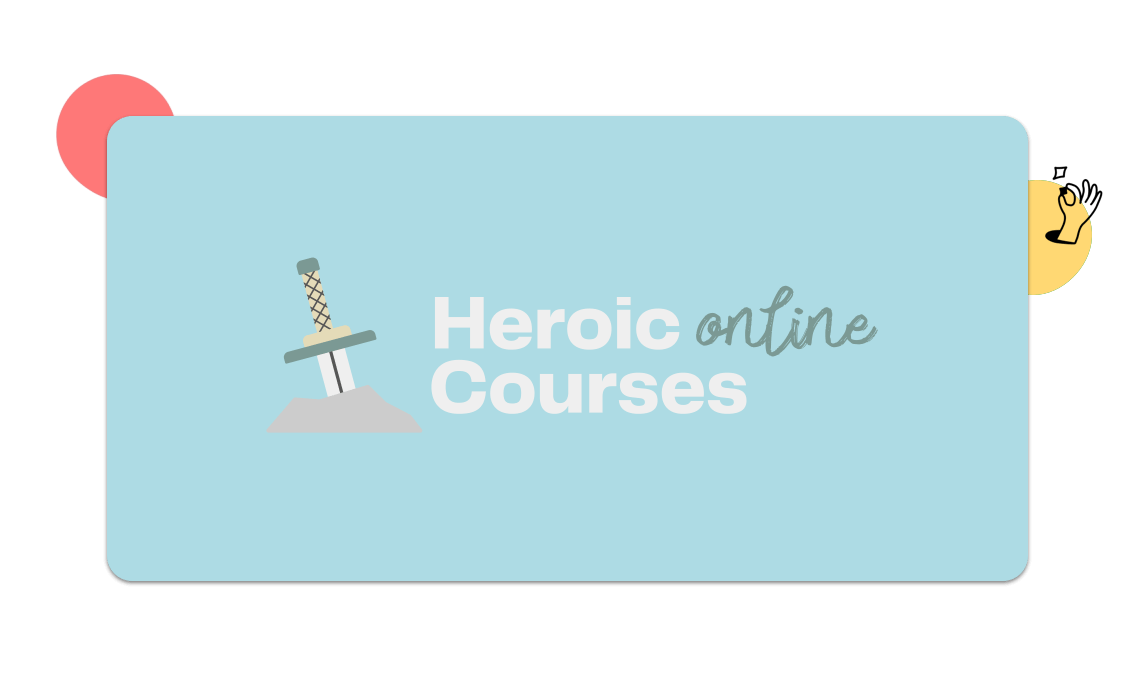
Make your student the hero of their story
Here’s the big secret: no one wants to buy an online course. People buy the transformation that your course offers them: the promise that’s on the other side.
It’s their struggles that you’re solving, and it’s a transformation that you lead them to. You are their guide. And when you help people become the hero of their story, everyone wants more from the guide who helped them get there.
Your hero's journey is about to begin
Module 1
Nail Your Niche
Whether you already have a niche, an audience, or neither, we’re going to make sure you’re targeting the right kind of person for your course.
How do we do this? We have to dig a bit into the minds of your target audience. It sounds complicated, but it’s not. After just a couple of 10-minute lessons, you’ll be on your way to success right from the start.
At the end: You'll have your course title and tagline, and you'll know who your course is for.
Module 2
Create Your Outline
This is where we work together to develop your course material in a way that ensures your students will have success.
The trick: making the course efficient, not overwhelming. This means knowing what to include and what not to include, which can be hard. Don’t worry, we walk you through the process so you’ll know exactly what to put in your course and in what order.
At the end: You'll have your course fully outlined.
Module 3
Write Your Sales Page
Yes, we help you with the marketing too, and it starts with exercises related to building your sales page.
We work through your course sales page content, including what you're offering, how you're pricing it, and everything you need on the page to convert sales.
Working through this process here — instead of as an afterthought at the end of course production — helps you to identify if there are any missing lessons in your outline. Doing it at this stage in the process and working through it piece by piece (headline, offer, price, testimonials, etc.) also ensures that you make progress and get it done.
At the end: You'll have your sales page written.
Module 4
Build a Production and Launch Plan
A launch strategy is like a diet — there are lots of ways to do it, but not all methods work for everybody. I’ll share several different options that you can choose from to launch your course and come up with a plan.
These are strategies for where your business is at right now. Are you starting from scratch even with zero audience members? There's a strategy for that. Do you have a huge email list and you want to rock out a huge launch? There's a strategy for that too.
At the end: You'll have a plan for the course launch strategy that works for you.
Module 5
Cultivate the Right Mindset
To make this work, you’ll have to overcome the biggest challenge of all — your mindset.
It's normal to have negative thoughts about your work as you are creating and launching it. However, we’ll be confronting these fears head-on so that you don’t waste the amazing work you've done, and launch with confidence and poise!
At the end: You'll learn what you need to keep yourself on track and launch your course with confidence.
Module 6
How to Film and Create Your Course
You don’t need a huge production studio or film crew (although we do talk about that). Instead, you can use what you have around you to film something of quality that gets the job done and supports the content you create.
We’ll also make sure you know exactly what to expect when uploading your videos and creating coursework for your students. It can be scary the first time, but you can look over my shoulder while I show you the process.
At the end: You'll have a set of techniques to create your course materials with using a method that fits your budget.

Meet your course instructor
Hi, my name is Pat Flynn and I've created over ten online courses. Back in 2016, I had the idea to create my first one. I had taken several online courses before (some useful, some not so much) and I knew that I had valuable knowledge that would help people, and then…
I chickened out.
I was scared no one would buy my course and it would be a complete waste of time. I was scared that people wouldn’t get anything out of it and it might make me look bad. I was scared it wasn’t going to be as good as some of the other courses that already existed teaching similar things.
Every time I tried to start, I pulled back.
Thankfully, at the end of 2017, a mentor of mine pushed me to finally launch. Looking back, I only wish she had pushed me sooner.
It wasn’t a huge launch, but it was the push I needed to keep going. Fast forward to today, and I’ve created and launched over ten online courses that have earned about $4.5 million.
Online courses are a key part of SPI's business model and are why I believe everyone should have at least one. It can change your life, and the lives of your students too.
Over time, my team and I have developed an amazing system for producing and launching these courses. because I want everyone to avoid overwhelm and succeed with building online courses too, I put our step-by-step creation process and launch strategies into one single course for you.
Heroic Online Courses outline
Welcome, Students!
- Welcome! Watch This First
- Office Hours
- Course Downloads
Module #1: Nail Your Niche
- Welcome to Module 1
- Lesson 1: Your Heroic Niche
- Lesson 2: Your Hero's Dreams and Fears
- Lesson 3: Your Hero Transformed
- Lesson 4: Your Course Title
- Lesson 5: Your Course Tagline
- Recap and Time to Share!
Module #2: Create an Extraordinary Course Outline
- Welcome to Module 2
- Lesson 1: Dump (Creating Ideas)
- Lesson 2: Lump (Creating Groups)
- Lesson 3: Jump (Creating Order)
- Lesson 4: Your Prototype Outline
- Recap and Time to Share!
Module #3: Making Your Sales Page
- Welcome to Module 3
- Lesson 1: Headline
- Lesson 2: Introduction
- Lesson 3: Offer
- Lesson 4: Price
- Lesson 5: Testimonials
- Lesson 6: Call to Action
- Lesson 7: Final Components
- Recap and Time to Share!
Module #4: Build a Production and Launch Plan
- Welcome to Module 4
- Lesson 1: “Live Launching” vs. “Pre-Recording Then Selling”
- Lesson 2: Microtesting Your Course (One Person/One Result)
- Lesson 3: Beta Launching Your Course (Founders Group)
- Lesson 4: Your First Public or “Wide” Launch
- Lesson 5: 7 Ways to Find People for Your Course Launch
- Recap and Time to Share!
Module #5: The Right Mindset before You Step into the Arena
- Welcome to Module 5
- Lesson 1: Confronting Your FEARS and Following Through
- Lesson 2: Creating a Support System You Can Count On
- Lesson 3: Building a Step-by-Step Plan
- Recap and Time to Share Your Launch Date
Module #6: How to Film and Create Your Course
- Welcome to Module 6
- Lesson 1: Equipment: Cameras
- Lesson 2: Equipment: Lighting
- Lesson 3: Equipment: Audio
- Lesson 4: Slides and Screen Capture Software
- Lesson 5: Recording and Filming
- Lesson 6: Editing
- Lesson 7: Hosting and Adding Course Details
- Lesson 8: Getting Your Course Ready for Sale
- Recap and Share Your Production Date
Course Wrap-Up
- Course Recap and Where to Go from Here
We believe in community-driven courses
Save 16% with Annual billing


For established entrepreneurs
SPI Pro
$299
/ quarter ($99.67 per month)
$999
/ year ($83.25 per month)
You have an online business that’s up, running, and generating revenue. You’ve figured out a lot but are unsure where to focus next. And the growing pains are real.
Everything in the All-Access Pass community, plus:

Vetted network of serious pros

Curated member masterminds

Exclusive access to in-house experts

Strategic guidance & tools
“I love logging into Pro because I don’t feel like I’m alone anymore. To see so many other people out there working towards the same thing and supporting each other is amazing. And the community administration is amazing — the checking-in, the answers, the connecting — it’s brilliant. I hope that my community has some of the genie in the bottle that Pro has.”


Ange Wilson

Not sure which membership is right for you?
or compare both plans so we can help you choose your path.
The post Heroic Online Courses appeared first on Smart Passive Income.
]]>